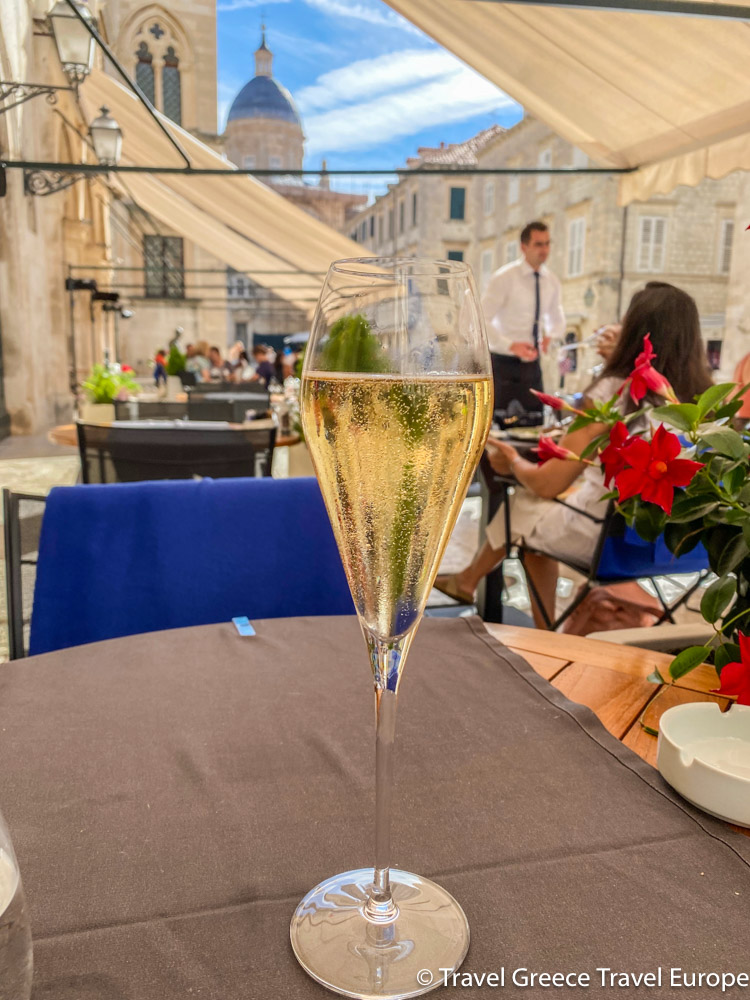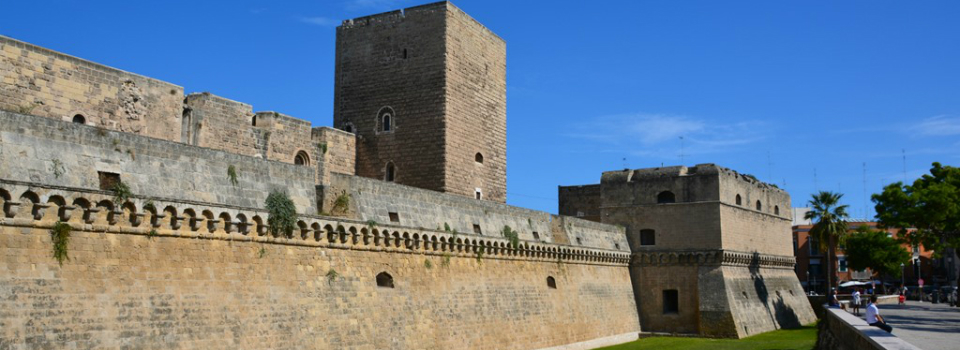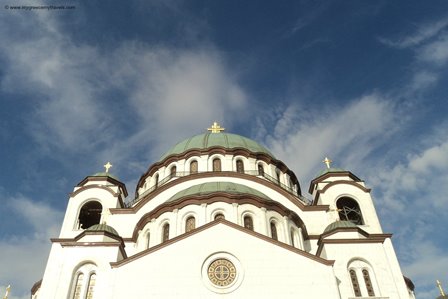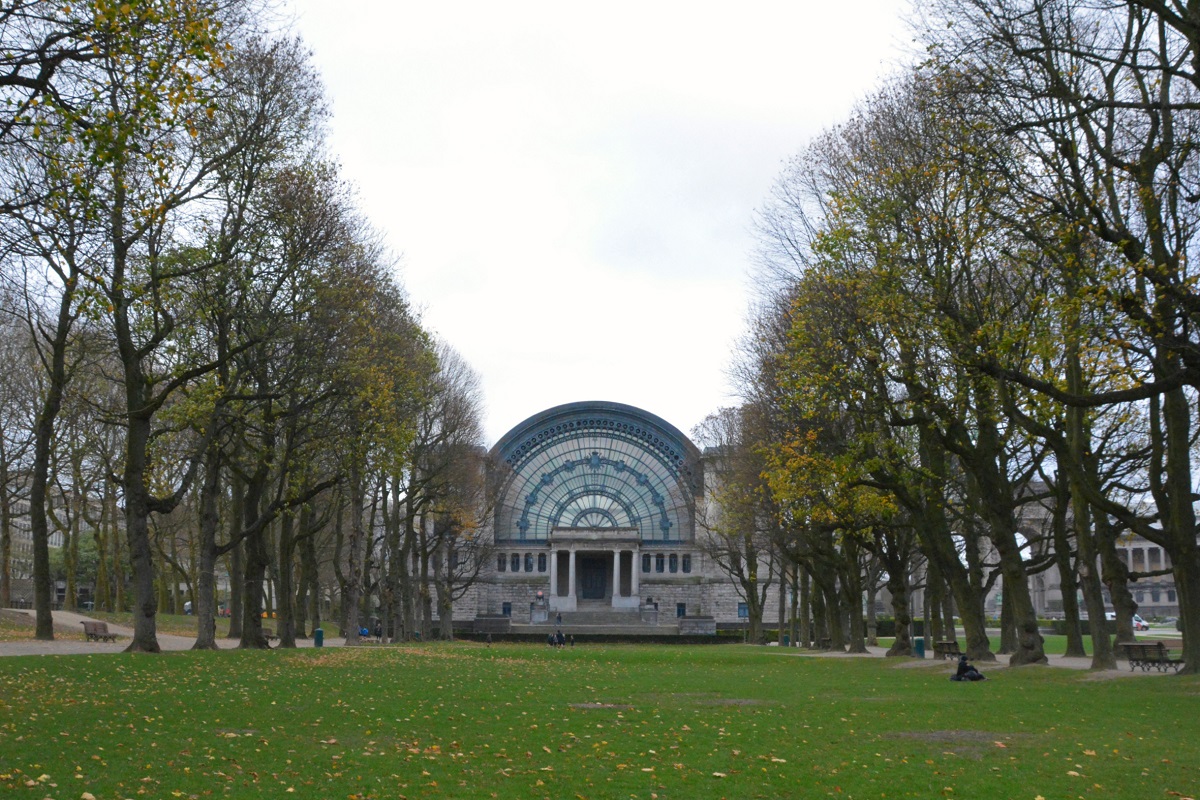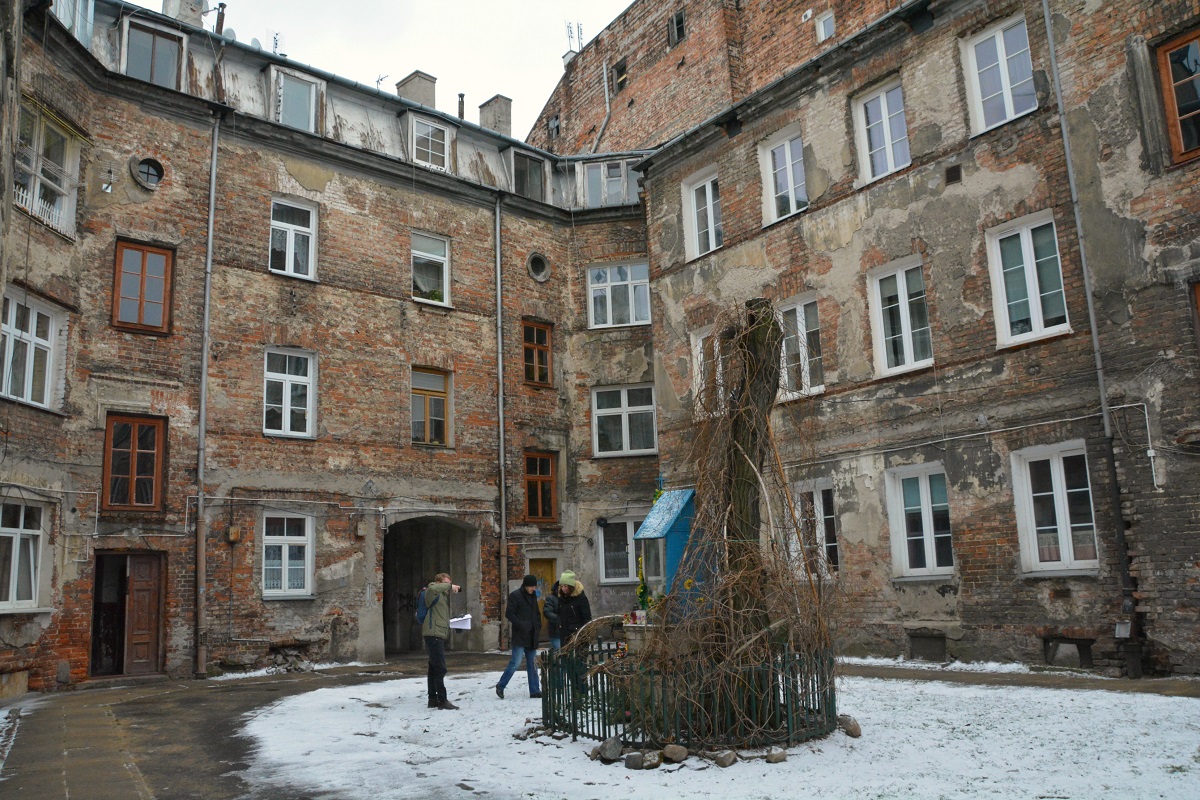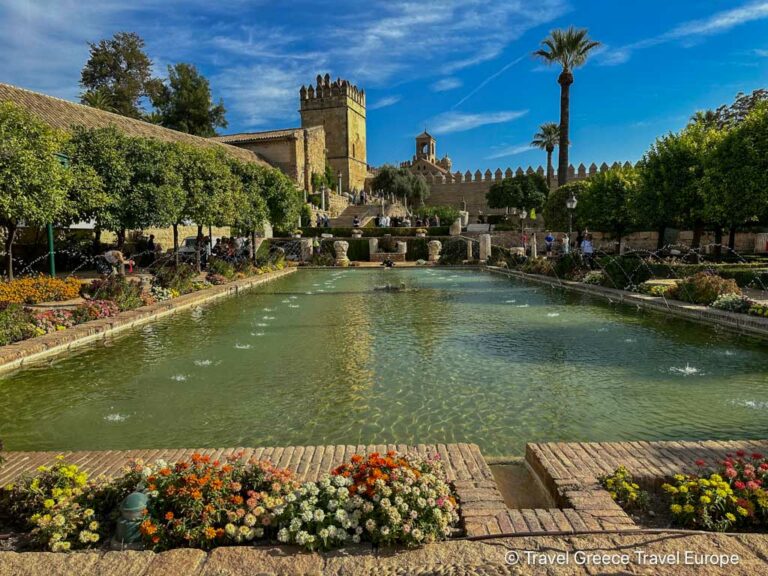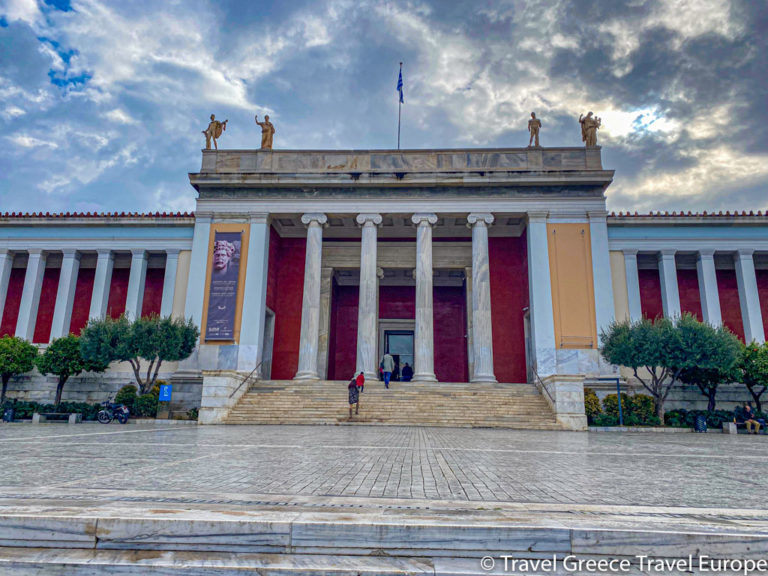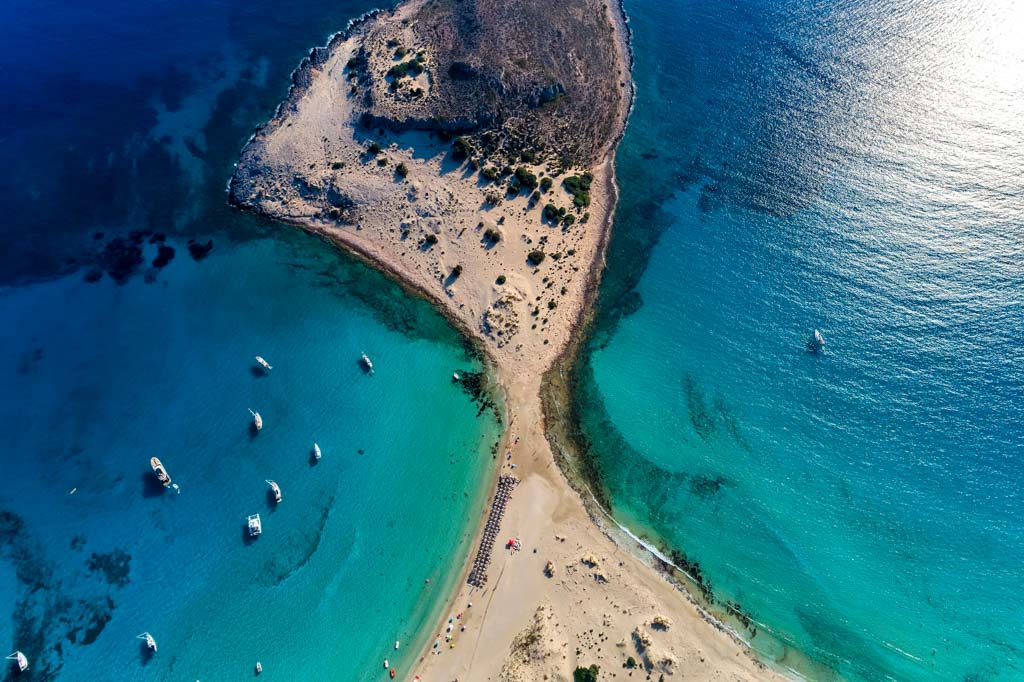How to Spend 4 Incredible Days in Dubrovnik: A Complete Guide
Dubrovnik, known as the Pearl of the Adriatic, offers a mesmerizing blend of historic charm and breathtaking natural beauty. This UNESCO World Heritage site, famed for its formidable walls and scenic views, provides a perfect backdrop for a memorable 4 days in Dubrovnik getaway. Whether you’re a history buff, a nature lover, or a food enthusiast, Dubrovnik has something special for everyone. This article will guide you through a meticulously planned four-day itinerary, ensuring you experience the best of Dubrovnik, from its iconic Old Town to the serene beauty of the nearby islands.
How to Spend 4 Days in Dubrovnik
The History of Dubrovnik
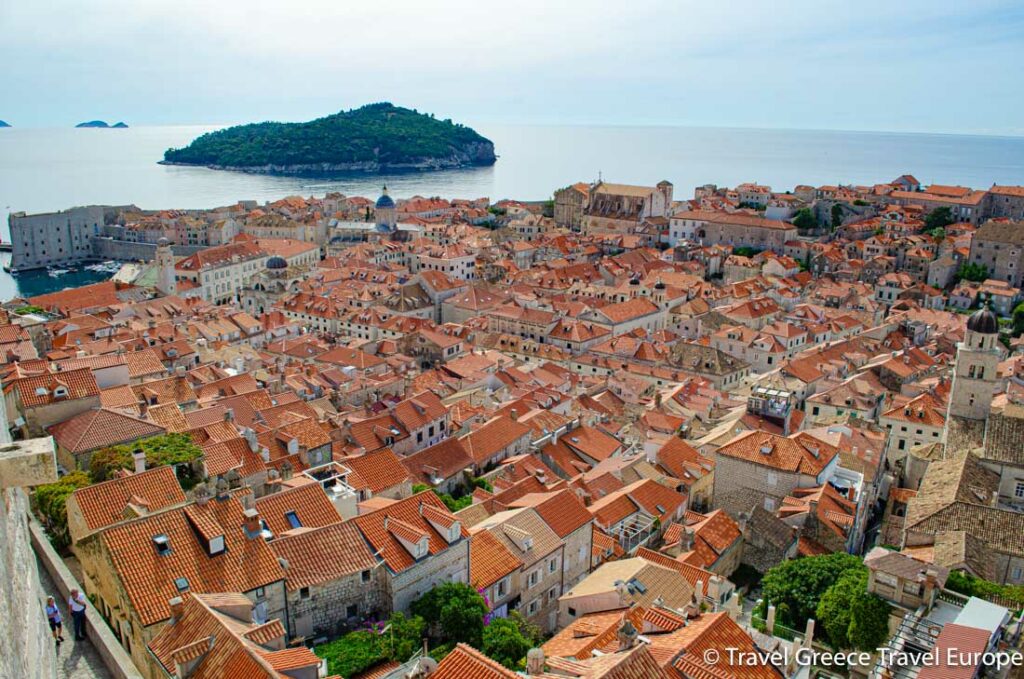
Dubrovnik, a city of unparalleled beauty and historical significance, has a rich tapestry of history that dates back to the 7th century. Founded under the shadow of Mount Srđ, it was initially called Ragusa, established by refugees from Epidaurum (modern-day Cavtat) fleeing Slavic invasions. This strategic location on the Adriatic Sea allowed Dubrovnik to flourish as a powerful maritime republic, rivaling even Venice in its wealth and influence.
The city’s golden age came during the 15th and 16th centuries, under the governance of the Republic of Ragusa. Its skilled diplomacy and thriving trade networks across the Mediterranean and beyond brought immense prosperity. Dubrovnik was a cradle of culture and science, with one of the earliest quarantine facilities (Lazarettos) and orphanages in Europe, and its own pharmacy, dating back to 1317, among the oldest in the world.
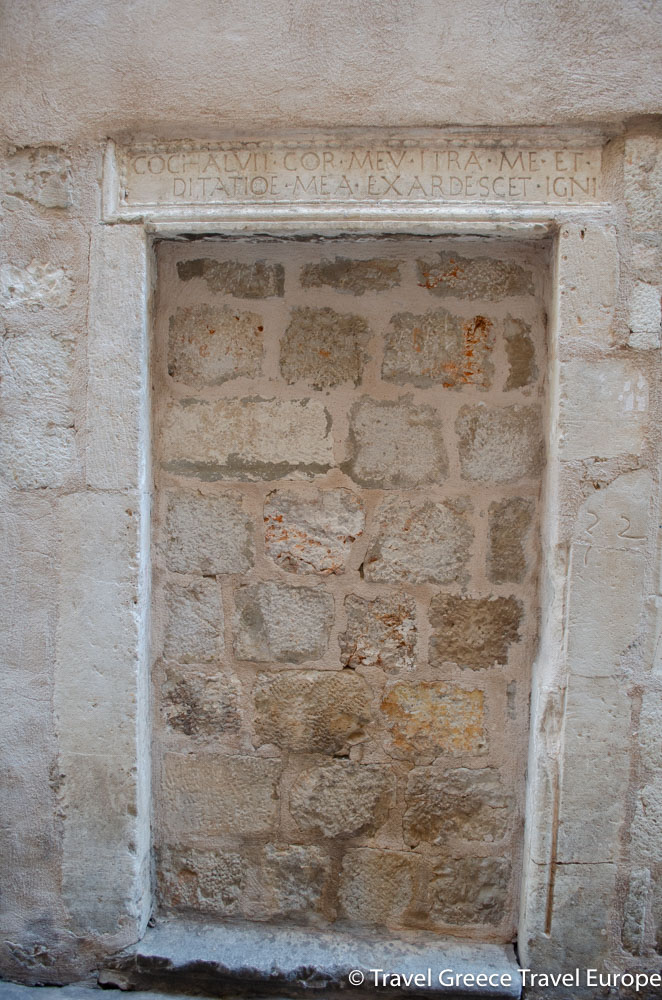
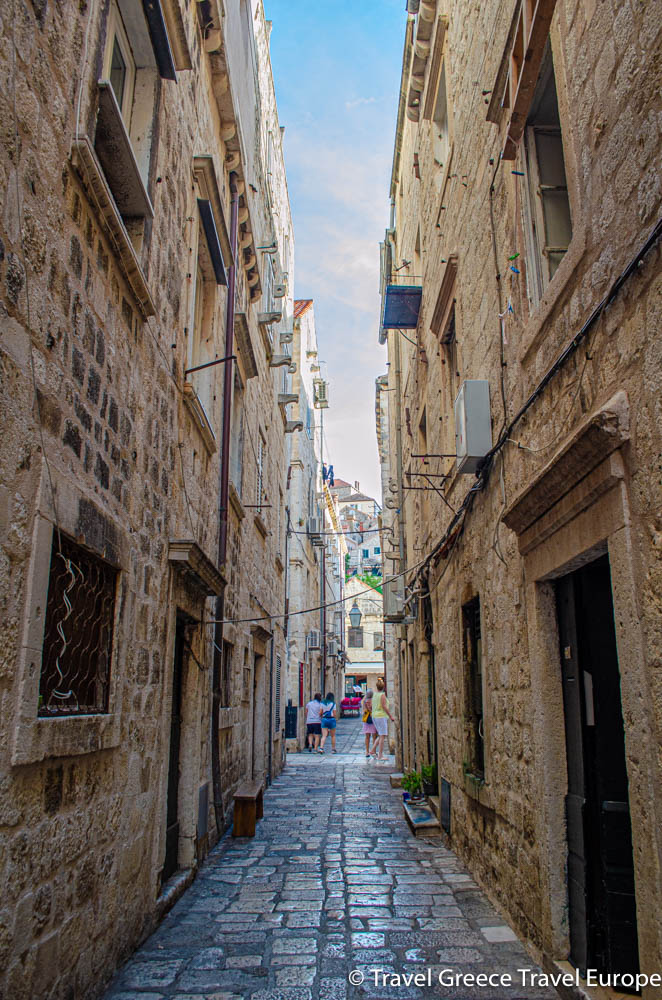
However, Dubrovnik’s fortunes were not without turmoil. The city endured a devastating earthquake in 1667, which destroyed much of its Renaissance art and architecture. Despite this, the resilient spirit of Dubrovnik’s citizens saw the city rebuilt in the splendid Baroque style seen today.
The Republic’s independence came to an end in 1808 when Napoleon’s forces abolished the state. After a brief period of French rule, Dubrovnik was incorporated into the Habsburg Monarchy, and later, following World War I, became part of the Kingdom of Yugoslavia.
The late 20th century brought further challenges. During the Croatian War of Independence in 1991-1995, Dubrovnik was besieged by the Yugoslav People’s Army. The city suffered significant damage, with numerous historic buildings and cultural sites hit by artillery.
The Siege of Dubrovnik shocked the world, as the city was listed as a UNESCO World Heritage site and was known for its historical significance and beauty. International efforts were mobilized to restore the damaged parts of the city, reflecting the global importance of Dubrovnik’s heritage.
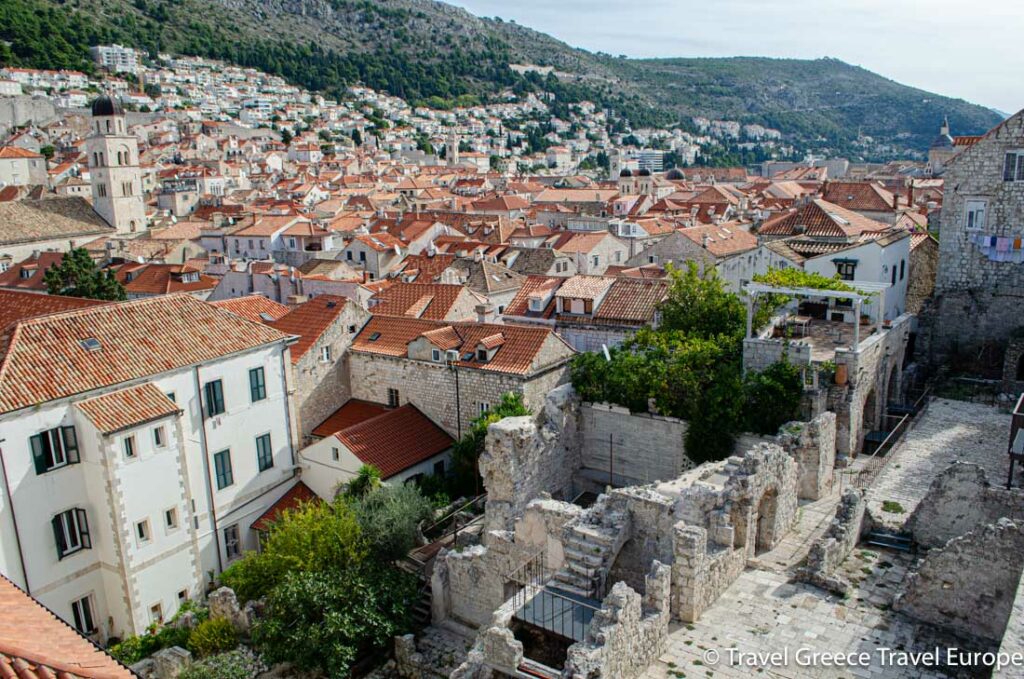
Today, Dubrovnik stands as a symbol of resilience, its walls a testament to the city’s ability to withstand the ravages of time and conflict.
Dubrovnik as King’s Landing (Game of Thrones)
Dubrovnik gained worldwide fame as a primary filming location for the critically acclaimed HBO series “Game of Thrones.” The city’s ancient walls, narrow streets, and historic buildings provided the perfect backdrop for King’s Landing, the capital of the Seven Kingdoms, and several other locations within the fantasy world of Westeros.
This connection has not only elevated Dubrovnik’s status on the global stage but also sparked a surge in tourism, drawing fans eager to walk in the footsteps of their favorite characters.
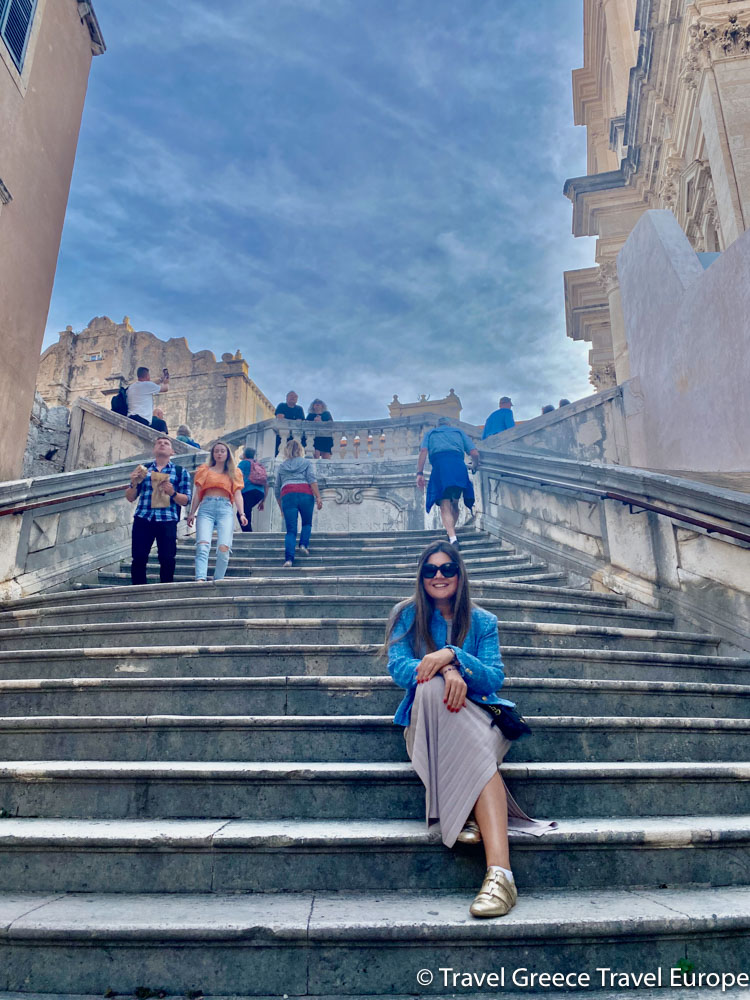
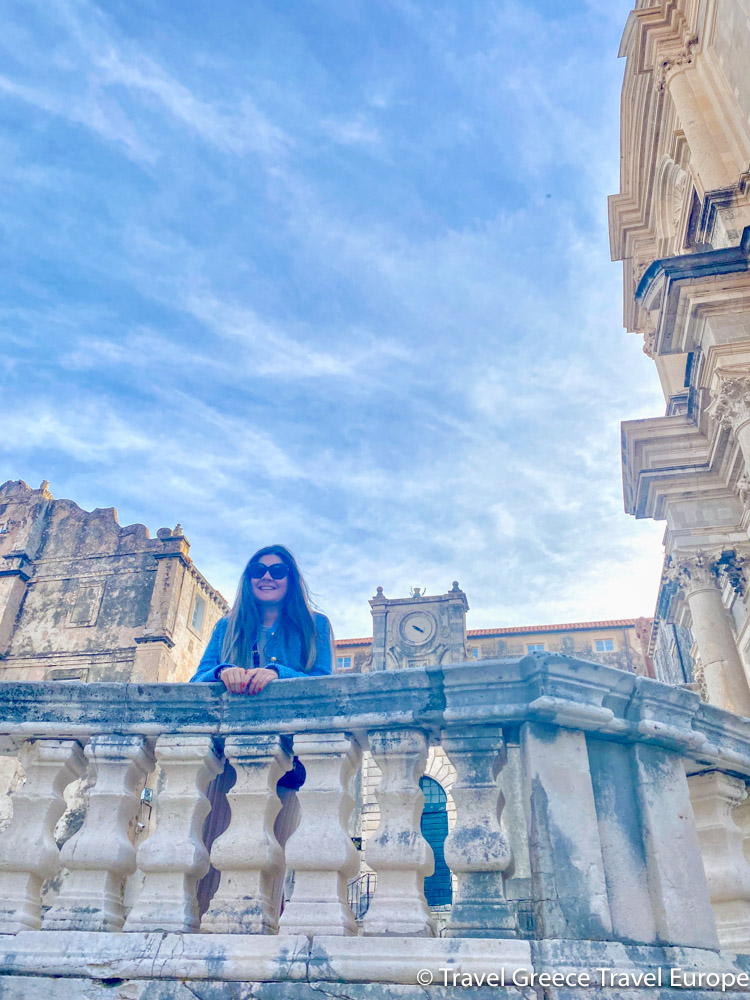
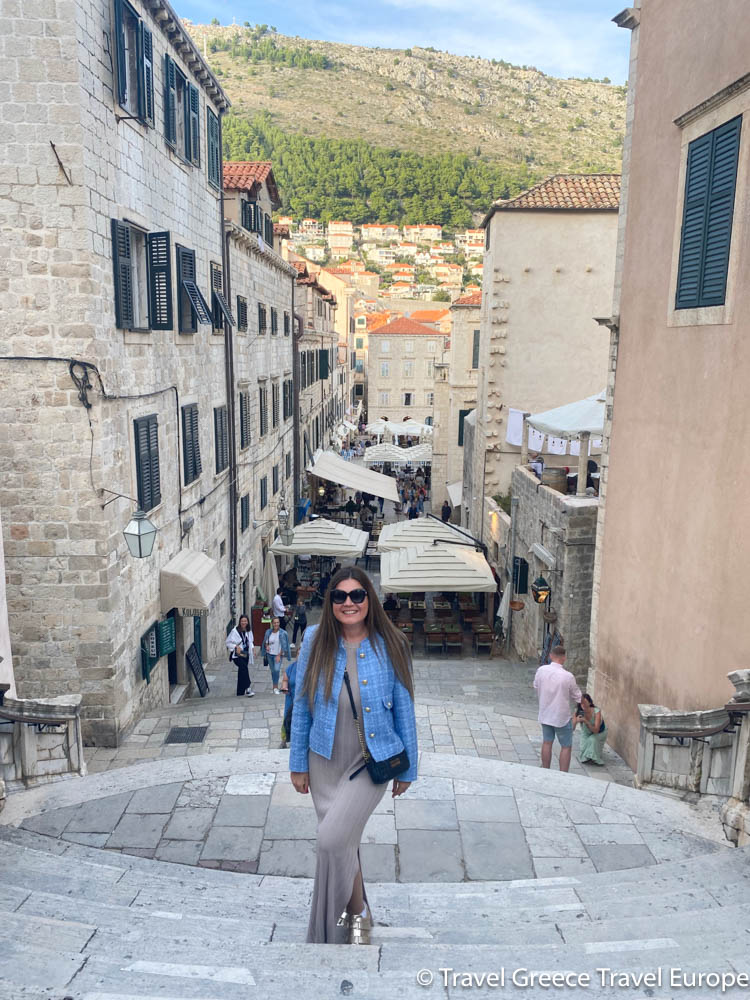
Are You a Game of Thrones Fan?
Visit iconic Game of Thrones locations in Dubrovnik, including the Lokrum Island. The tour ends on Lokrum Island. If you want, you can stay there afterwards. The island is a gem and offers numerous opportunities for swimming, cliff jumping, hiking and also restaurants and bars.
Day 1: Discovering Dubrovnik’s Old Town
Morning: As dawn breaks, the city of Dubrovnik awakens, its ancient walls glowing with the promise of new discoveries. Begin your journey at the Pile Gate, where the past and present merge.
Wander through the Stradun, the city’s vibrant artery, where each step takes you deeper into the rich tapestry of history. Discover some of the Old Town’s highlights:
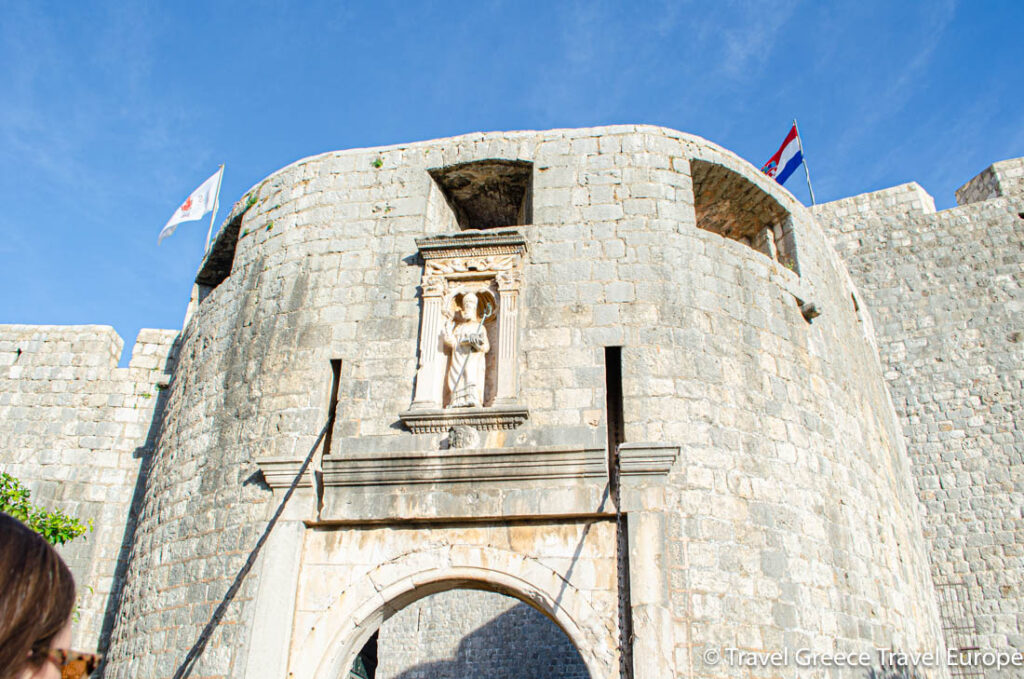
Pile Gate is one of the most prominent entrances to Dubrovnik’s Old Town, a UNESCO World Heritage site renowned for its well-preserved medieval architecture and historic significance. Situated at the western end of the Placa or Stradun, Dubrovnik’s main street, Pile Gate is a grandiose point of entry that has welcomed visitors into the heart of the city for centuries.
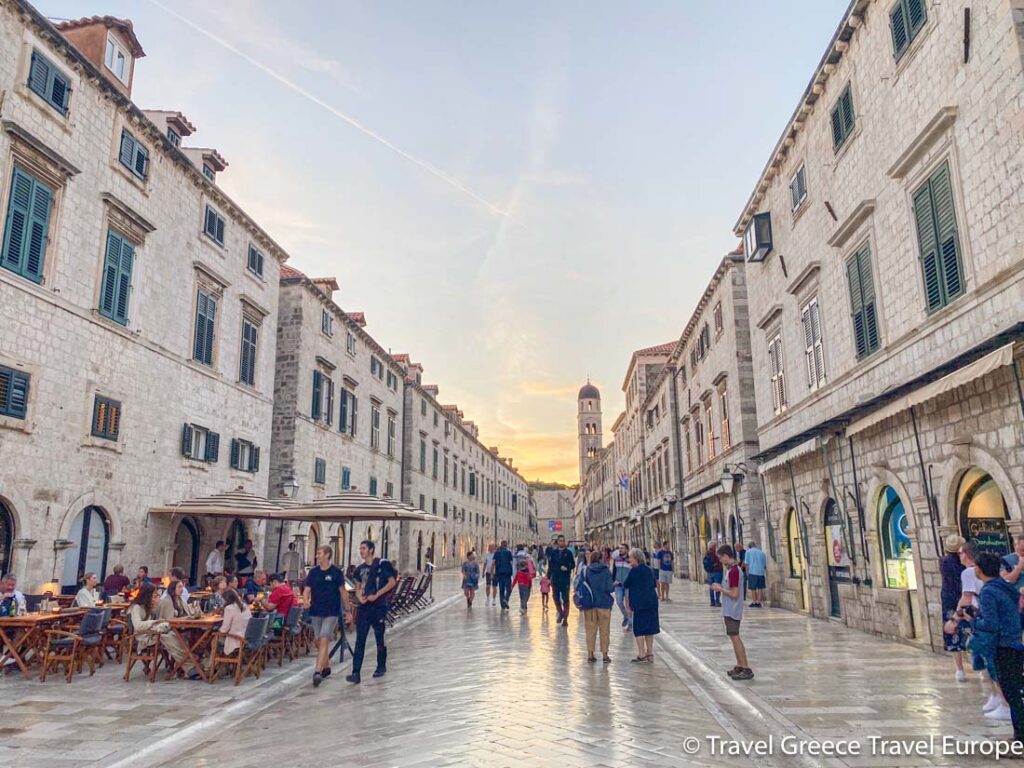
Constructed in 1537, Pile Gate is a part of the formidable defensive walls that surround Dubrovnik, designed to protect the city from invaders. The gate is a complex structure featuring an outer and inner gate with a stone bridge connecting the two. The outer gate is adorned with a statue of St. Blaise (Sveti Vlaho), Dubrovnik’s patron saint, who is depicted holding a model of the city as it appeared before the devastating earthquake of 1667.
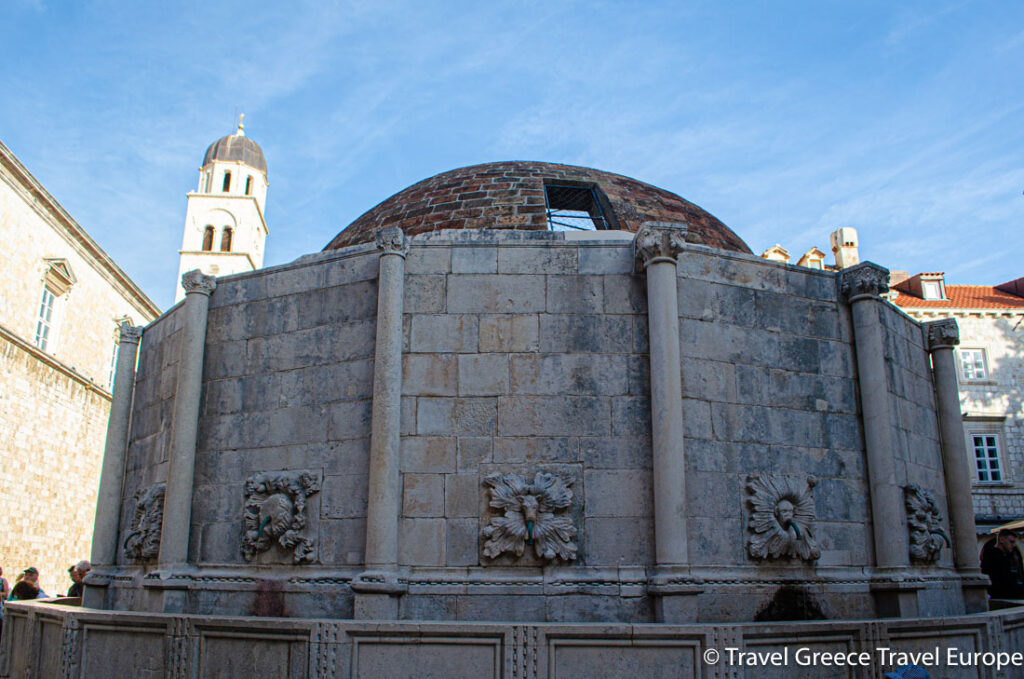
Onofrio’s Fountain is your first landmark, an architectural marvel and a symbol of ingenuity. Built in the 15th century by the Neapolitan architect Onofrio della Cava, this fountain was part of a sophisticated water system designed to bring water from the Dubrovnik River, 12 kilometers away.
Its purpose was not only practical, providing fresh drinking water to the citizens during the Republic of Ragusa but also aesthetic, serving as a meeting point for the city’s inhabitants and visitors alike. The fountain, with its 16 carved masks from which water flows, stands as a monument to human resilience and creativity, having survived the devastating earthquake of 1667.
| Tip
Discover the historic heart of Dubrovnik’s Old Town,on a guided walking tour. Visit the city’s major landmarks and hear stories of how Dubrovnik became one of the world’s most prosperous and advanced republics.
St. Saviour Church (Crkva sv. Spasa) in Dubrovnik is a small yet significant Renaissance church located near the Pile Gate, at the entrance to the Old Town. This architectural gem, built in the early 16th century (1520 to be precise), stands as a testament to Dubrovnik’s rich cultural and historical heritage. It was constructed as a votive church by the citizens of Dubrovnik, thanking God for saving the city from a devastating earthquake that struck on May 1, 1520.
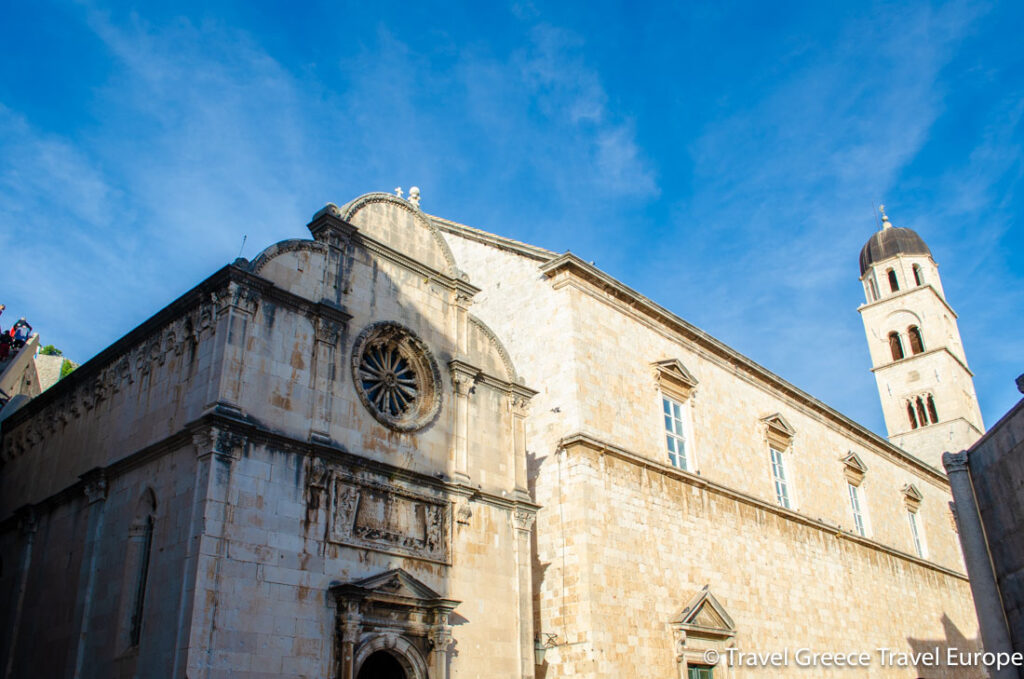
Despite its modest size, St. Saviour Church holds significant historical value, especially considering it is one of the few buildings that survived the catastrophic earthquake of 1667 relatively unscathed. This resilience has made the church a symbol of the city’s endurance through various challenges over the centuries.
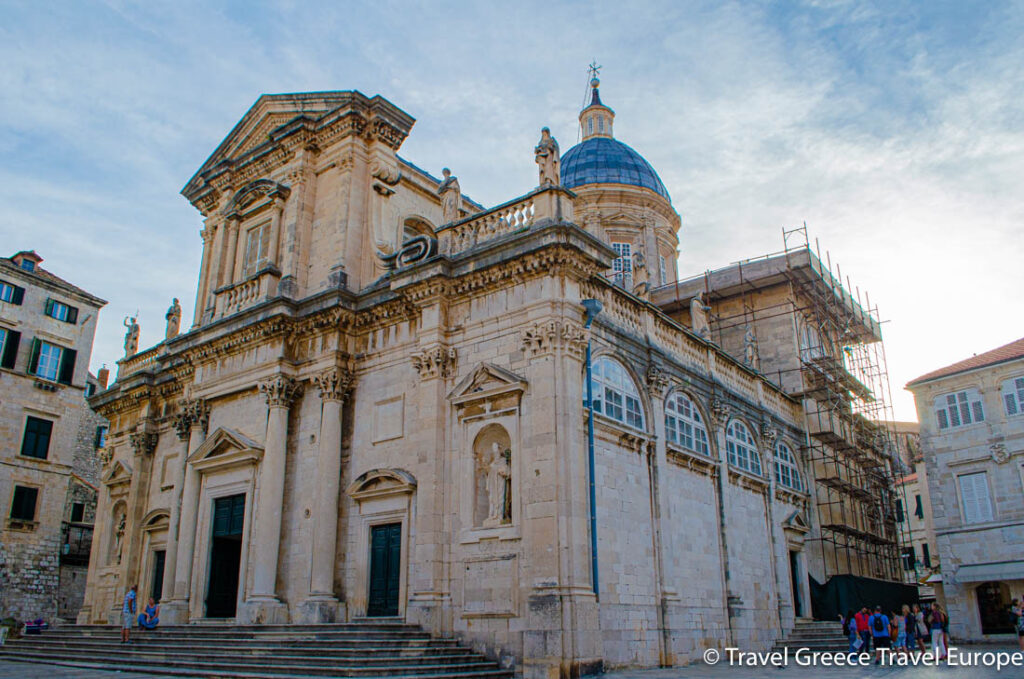
Finally, the Church of St. Blaise, dedicated to the patron saint of Dubrovnik, completes your historical immersion. Erected in the 18th century on the site of an earlier church destroyed by fire, this Baroque masterpiece is a tribute to St. Blaise, who, according to legend, appeared in a vision to warn the city of an impending Venetian attack.
The church’s facade, adorned with a statue of St. Blaise holding a model of the city as it looked before the earthquake, invites the faithful and curious alike to explore its richly decorated interior. Inside, the gold-embossed statue of St. Blaise, holding his pastoral staff and a palm branch, watches over the city and its visitors, a symbol of protection and enduring faith.
Tip: For a light lunch or aperitivo I recommend Gradska kavana Arsenal restaurant which is located near Dubrovnik’s main square. They eastern side terrace opens up to the views of the Old City Port, there is another terrace overlooking main square Luža. Reservations are highly recommended.
Afternoon:
Croatia is a hidden gem in the world of viticulture – Let’s Try some Croatian Wines
As a wine enthusiast I couldn’t miss the opportunity to explore Croatia’s wine making history. This enchanting country, with its diverse climates and terrains, offers a tapestry of flavors and aromas waiting to be discovered by those who seek not just a glass of wine, but an adventure. Let me take you on a journey through the heart of Croatia, where each bottle of wine is not just a drink, but a story of tradition, passion, and the unyielding spirit of its people.
Imagine, if you will, a place where the Mediterranean’s balmy breezes and the Pannonian Plains’ gentle whispers converge, creating an Eden for grapevines. This is Croatia, a country with a wine legacy that stretches back to the ancient Greek settlers and the Roman vineyards. Today, this legacy is carried forward by dedicated winemakers who blend time-honored methods with modern innovation, crafting wines that are as unique as they are captivating.
The Tapestry of Croatian Wines
Croatia is divided into two main wine regions: Coastal and Continental, each telling its own tale through the vines.
- The Coastal Region, kissed by the Mediterranean sun, is where you’ll find the soulful reds and expressive whites that echo the sea’s depth. Here, the Plavac Mali grape reigns supreme, a descendant of the ancient Zinfandel, offering wines with robust flavors, rich in dark fruits and spices, a true testament to the region’s passion and intensity.
- The Continental Region, cradled by the Pannonian Plains and the cool breezes of the mountains, is the birthplace of refreshing whites that sing of the land’s purity and grace. The Graševina grape, with its delicate floral notes and crisp acidity, leads the ensemble, inviting you to a dance of lightness and harmony.
The Stars of the Croatian Vineyards
- Plavac Mali: The pride of the Dalmatian coast, a warrior grape that thrives in the harsh limestone soils and the relentless sun, crafting wines that are powerful yet graceful, with whispers of dark cherries, blackberries, and a hint of the Adriatic’s briny kiss.
- Graševina: The most widely planted white grape, a gentle spirit that captures the essence of Croatia’s continental heart. Its wines are a melody of green apples, citrus, and a touch of minerality, a refreshing sip on a warm summer day.
- Malvazija Istarska: From the Istrian peninsula, a white grape that weaves a tapestry of aromas, from ripe peaches to Mediterranean herbs. Its wines are complex, full-bodied, and elegant, a reflection of the region’s blend of Italian flair and Slavic soul.
- Pošip: Native to the island of Korčula, this white grape produces wines that are rich and aromatic, with layers of tropical fruits, dried figs, and a creamy texture that speaks of the island’s sun-drenched beauty.
Meeting the Crvik Family winemaker
Adress: Kotari 12, Komaji, 20213, Čilipi, Croatia | Phone: +385 20 771 230
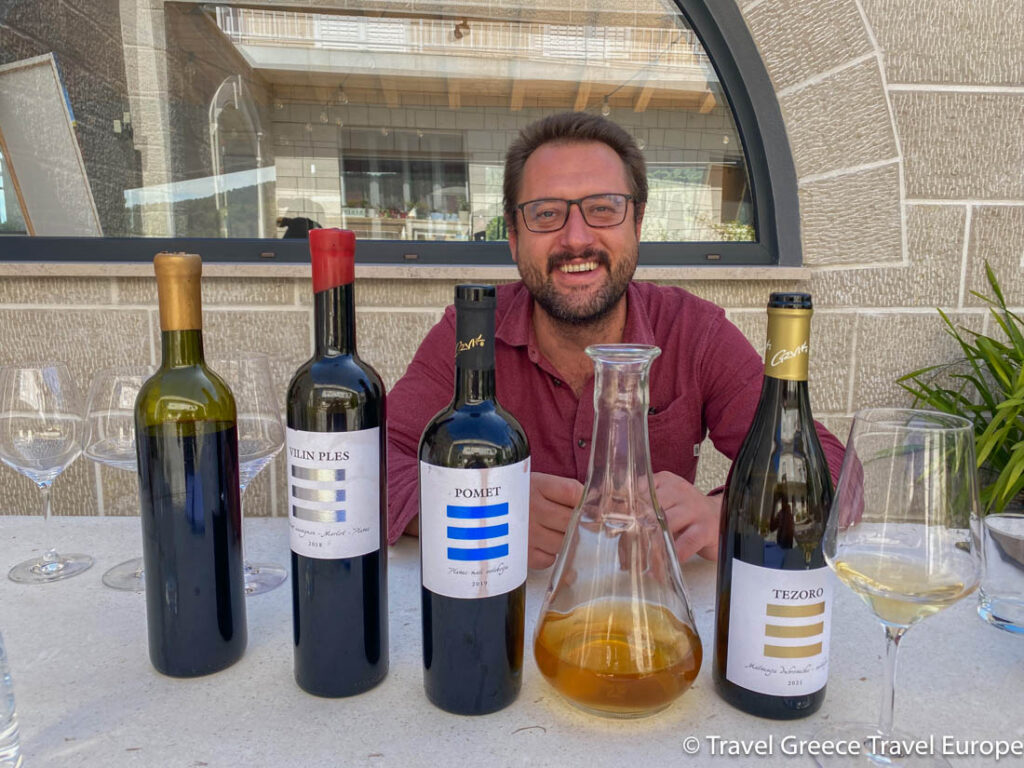
In the afternoon we embarked on a journey to the heart of Konavle (22 km southeast from the town of Dubrovnik), where the Crvik family vineyard unfolds its story, a tale woven from the threads of tradition, innovation, and the unyielding spirit of the Croatian soil. Here we were met by Petar, fourth generation Crvik family member who proudly continues his great grandfather’s wine making tradition.
Visiting the Crvik winery is not merely a tasting; it is an immersion into a world where every detail is infused with the love of winemaking. The Crvik family welcomes guests not as visitors but as part of their extended family, offering tours that are a journey through time, from the ancient cellars to the panoramic vistas that have inspired generations.
As Petar explained to me – in the heart of Crvik’s vineyard lore, the spirit of Marin Držić, a luminary playwright and prose maestro from the Renaissance era of Dubrovnik, casts an enchanting shadow. His creative genius breathes life into Crvik’s labels, marrying the rich tapestry of history with the vineyard’s modern expressions.
Among these, Pomet stands out—a character plucked from the vibrant scenes of the 16th-century comedy “Dundo Maroje.” Pomet, known for his hedonistic zest and self-centered charm, is reimagined by Crvik as a wine that captures the essence of Plavac Mali in all its glory.
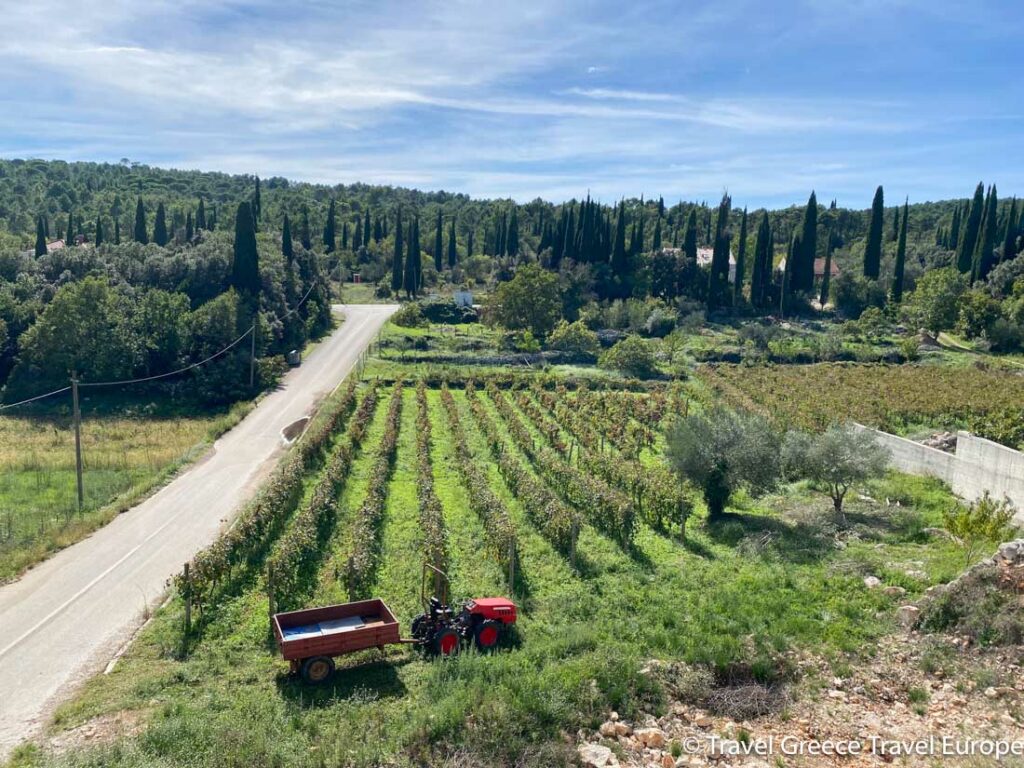
The crisp mountain air combined with the gentle warmth of the Mediterranean breeze creates an ideal environment for the vineyards to flourish.
This incarnation of Pomet is a testament to the depth and complexity of Plavac Mali, boasting a color that is both dense and profound. It greets the senses with a bouquet where chocolate and toast notes are pronounced, leading to a palate rich with sweet spices and succulent fruit, yet steering clear of being overly jammy. The warmth it brings to the tongue is perfectly counterbalanced, making it a harmonious experience.
Through this inspired interpretation, Crvik not only pays homage to the cultural heritage of Dubrovnik but also presents a wine that embodies the character’s larger-than-life love for pleasure, all the while maintaining an exquisite balance and depth. Pomet, in the hands of Crvik, becomes more than just a wine; it is a narrative in a bottle, inviting connoisseurs to savor a piece of history with every sip.
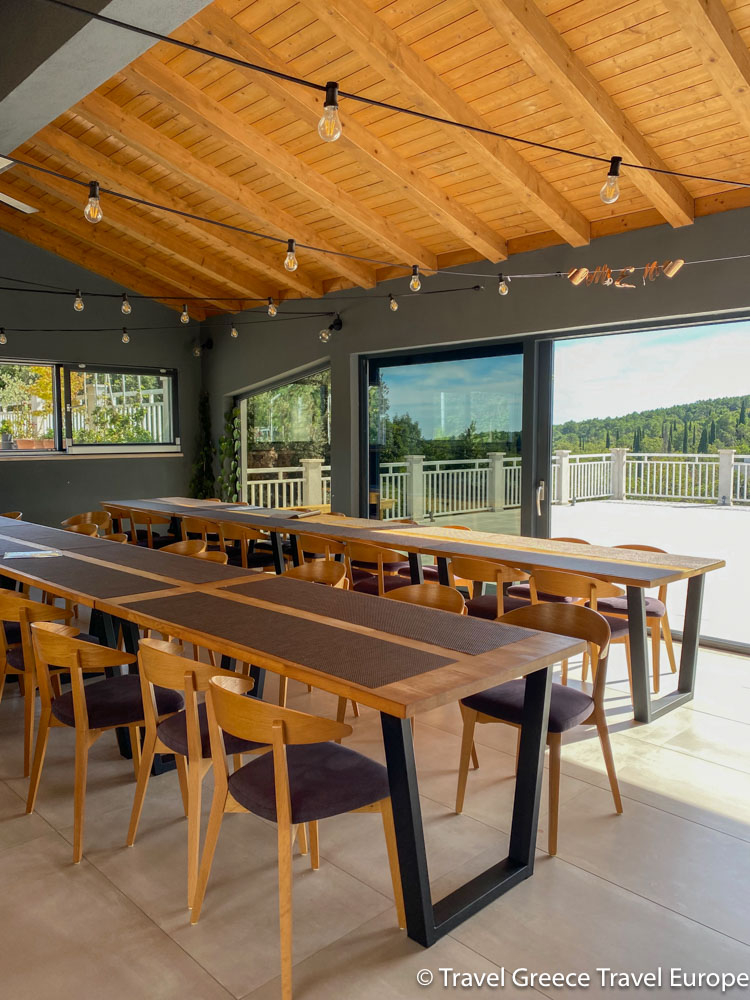
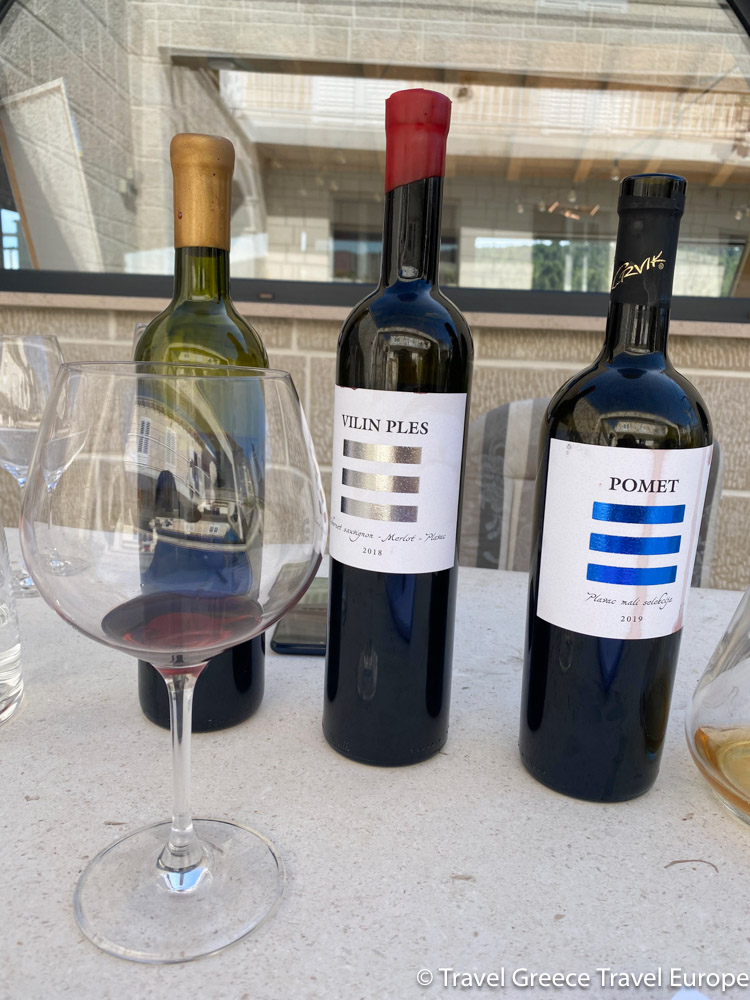
Vilin Ples (the Fairy Dance) stands as the crown jewel among Crvik winery’s esteemed collection, a masterful blend of Cabernet Sauvignon, Merlot, and Plavac Mali. This wine, with its deep ruby hue, encapsulates the intensity of both red and dark fruits, interwoven with the luxurious aromas of chocolate and cedar.
To fully appreciate its rich, full-bodied nature, it is advised to decant the wine or allow it to breathe in the glass for a while. This process unveils its full spectrum of Mediterranean charm, a bouquet of spices, and a captivating rustic elegance. In July 2021, at the Decanter World Wine Awards in London, Vilin Ples (Fairy Dance) from the 2017 vintage by Crvik winery, was honored with a gold medal, scoring an impressive 95 to 100 points.
Tip: You could also replace the wine visit with an Eco Tuk Tuk tour mentioned in Day 2 of the 4-days in Dubrovnik itinerary and combine the winery visit with a meal at the Konavoski Dvori Eco Green Restaurant followed by a walk in Cavtat town.
Here are some wine tours you can join:
Wine Lover’s Tour of Peljesac Peninsula
Konavle wine tasting tour from Dubrovnik with 2 vinery’s
Oysters and Wine Tour from Dubrovnik (Small Group)
Korčula & Pelješac: Wine & Culture Experience from Dubrovnik
Take a Sunset Cruise
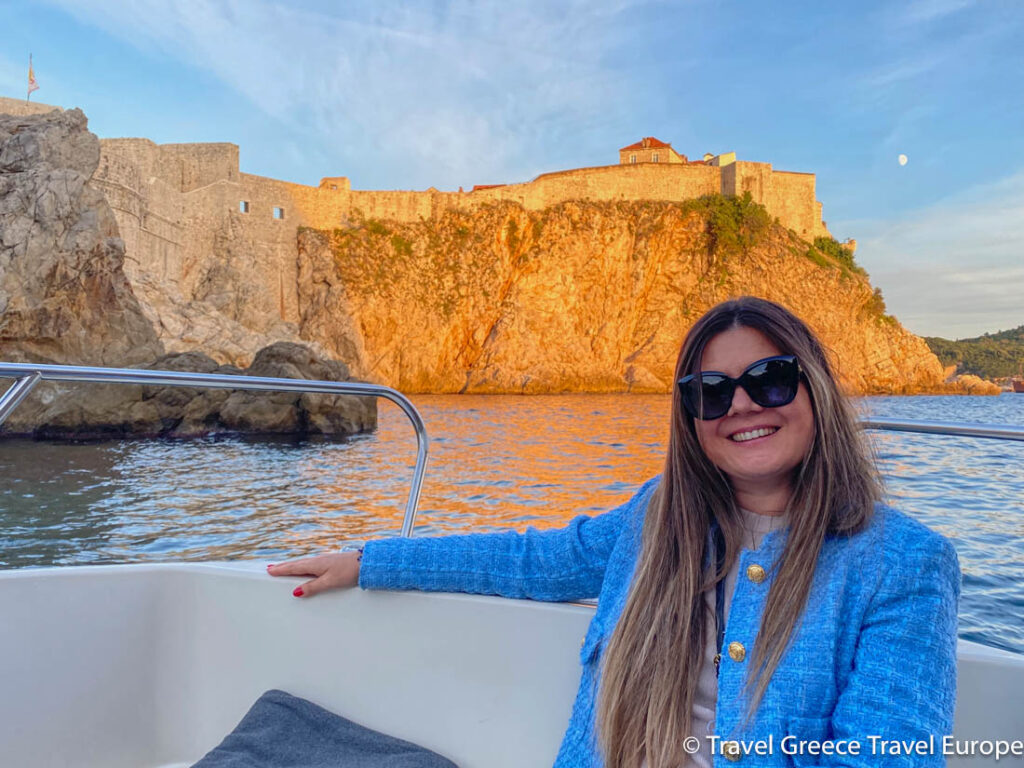
The Sunset Cruise in Dubrovnik offered by Dubrovnik Coastal Beauty presents a romantic and unforgettable sailing experience that captures the essence of Dubrovnik’s picturesque landscape from the Adriatic Sea. This 1.5-hour cruise, available from March to October, is designed to showcase the breathtaking beauty of the sunset reflecting off the Adriatic, with the historic city walls of Dubrovnik glowing under the amber hues of the setting sun.
Highlights of the Sunset Cruise
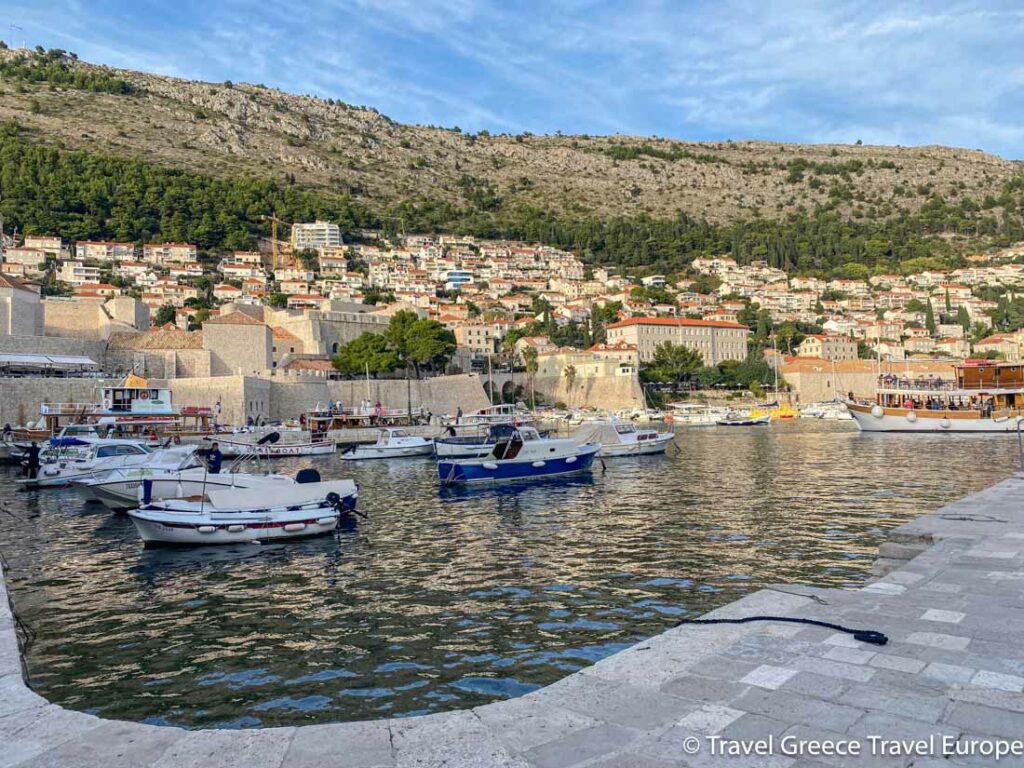
- Departure Details: The cruise sets sail from the Old Town port, with departure times agreed upon booking, ensuring flexibility for guests. The tour’s reliance on favorable weather conditions promises an optimal experience.
- Inclusions: The cruise offers an inclusive package featuring a skipper, fuel, towels, snorkeling equipment, and a selection of drinks including wine, beer, juice, and water, ensuring a comfortable and enjoyable journey.
- Scenic Route: The cruise takes passengers beneath the majestic fortifications of Dubrovnik, including a close view of Fort Lovrijenac, a symbol of Dubrovnik’s resilience, perched on a 37-meter high rock. The journey continues towards Lokrum Island, showcasing its lush Mediterranean greenery, and sails past the serene pebble beach of Sv. Jakov, offering splendid views of the Old Town.
- Atmospheric Experience: As the sun sets, casting fiery hues of red, orange, and yellow across the sky, guests are treated to a tranquil atmosphere complemented by a glass of chilled supreme wine, enhancing the romantic ambiance of the cruise.
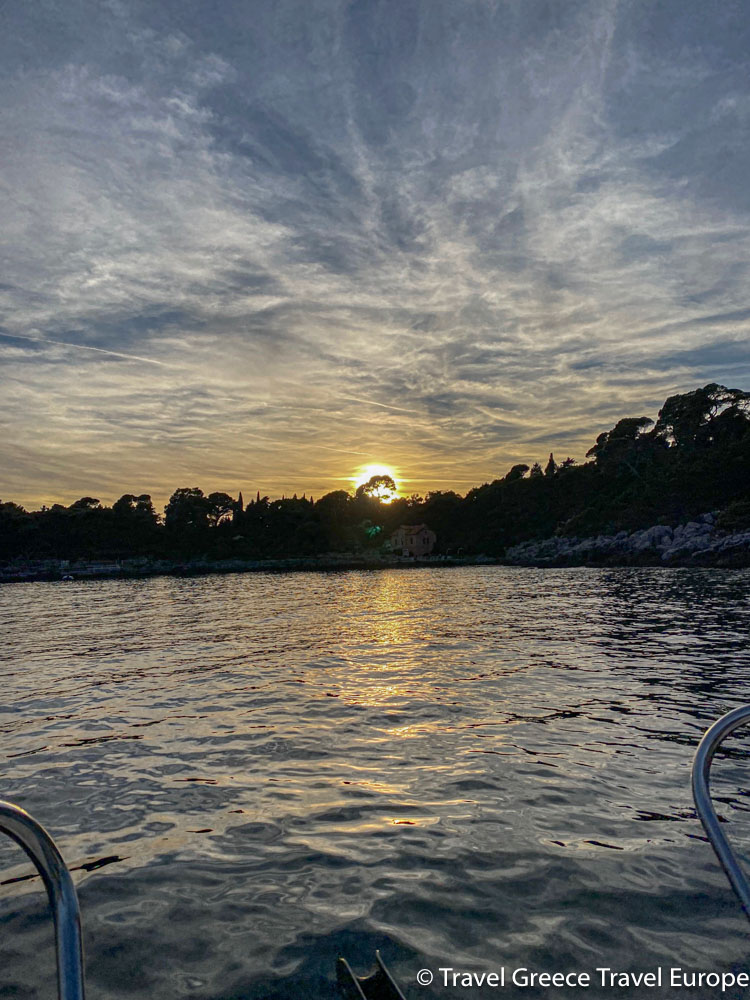
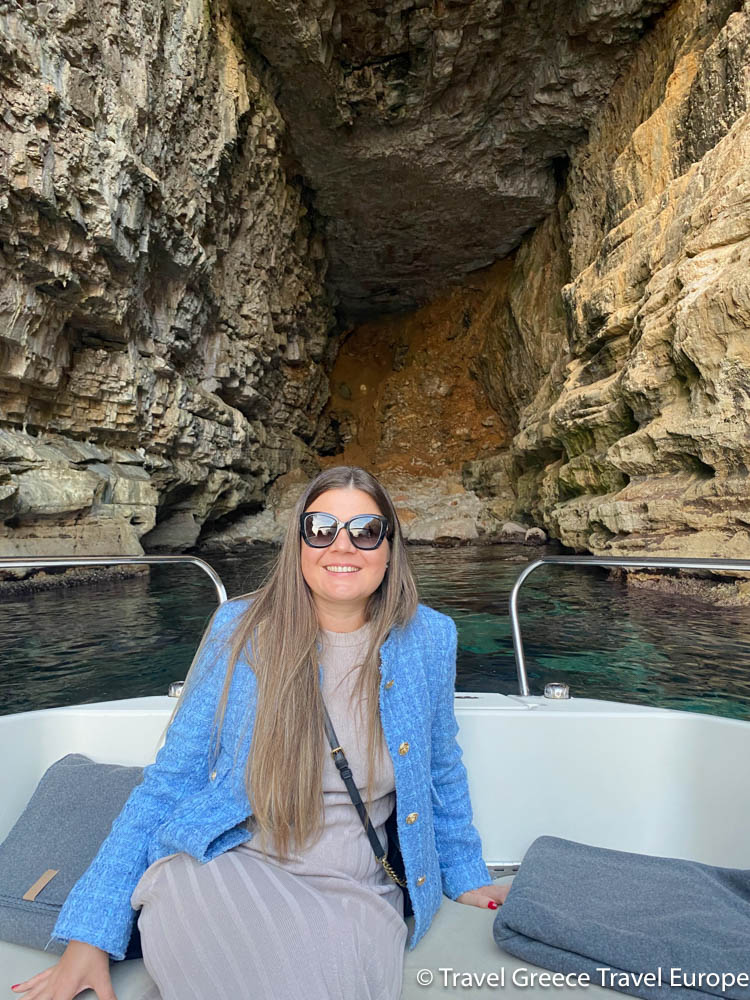
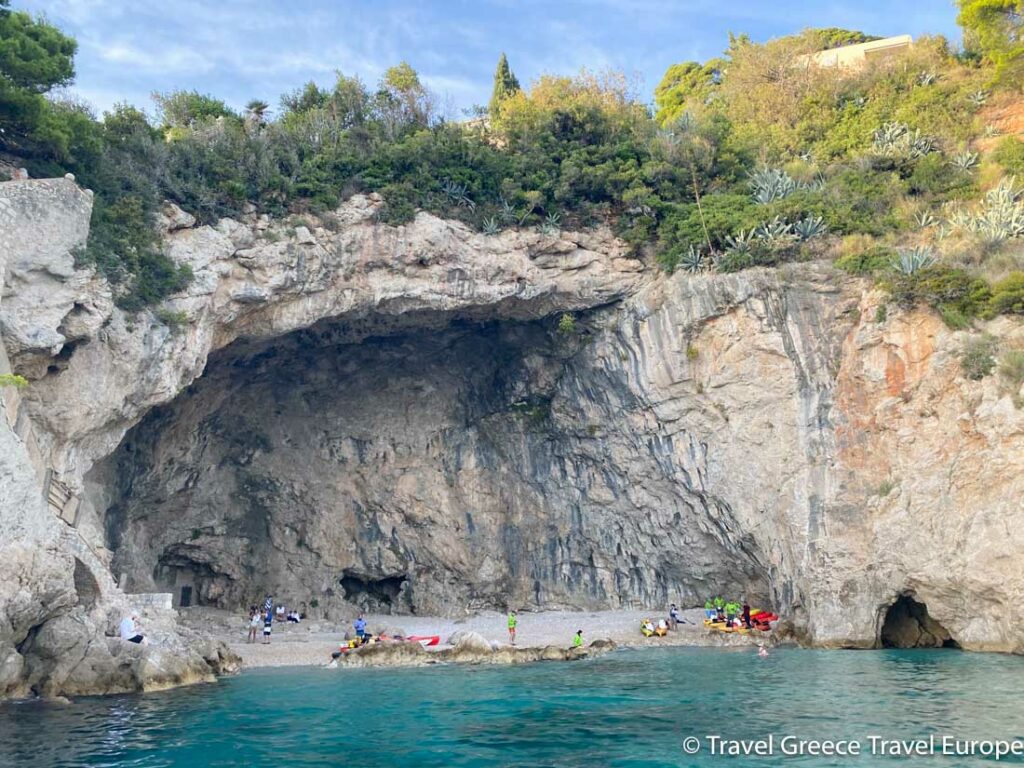
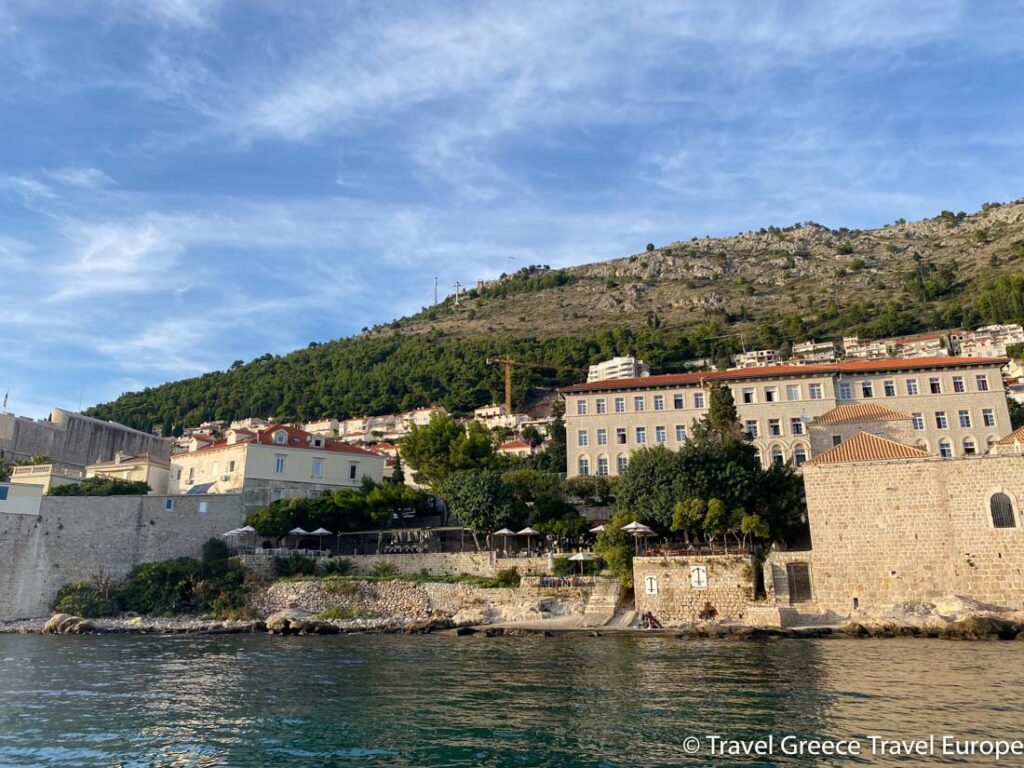
This cruise not only offers a chance to see Dubrovnik from a different perspective but also provides an intimate setting perfect for couples or anyone looking to immerse themselves in the tranquil beauty of the Adriatic Sea at dusk.
Check out some other sunset tour options here:
Dubrovnik: Romantic Sunset Cruise
Dubrovnik: Panoramic Sunset Cocktail Cruise Around Old Town
Dubrovnik: Day or Sunset Kayak Tour with Snorkeling & Snack
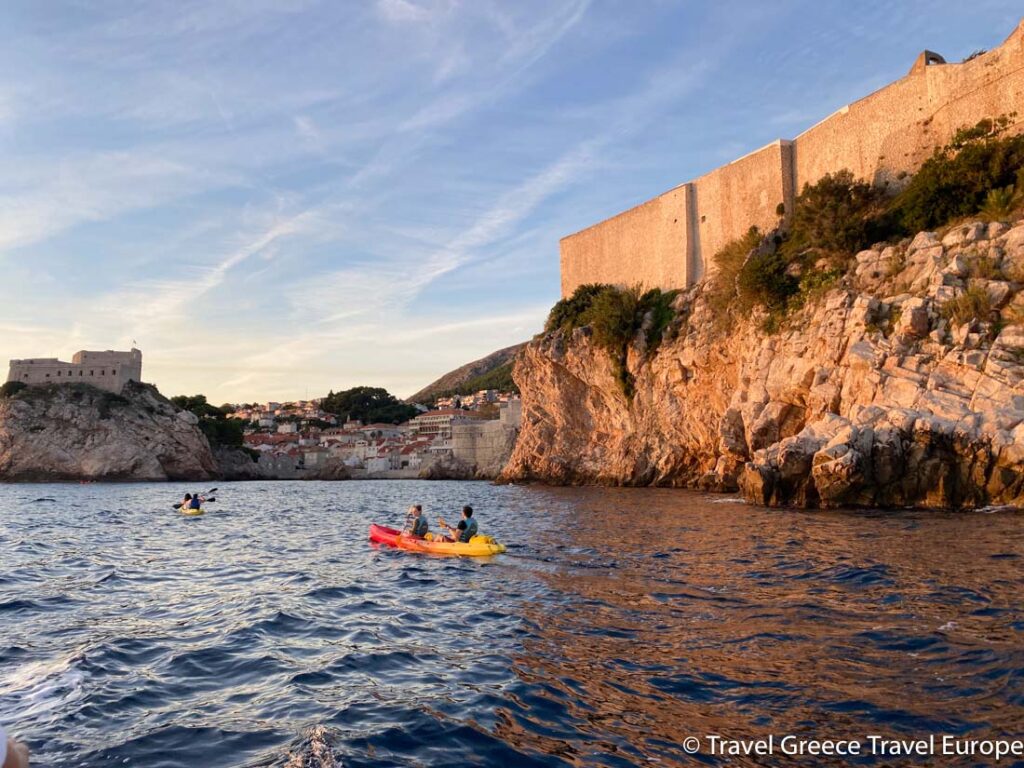
CAR RENTAL: Rentalcars or Discover Cars
Enjoy Cocktails with Spectacular Sea Views
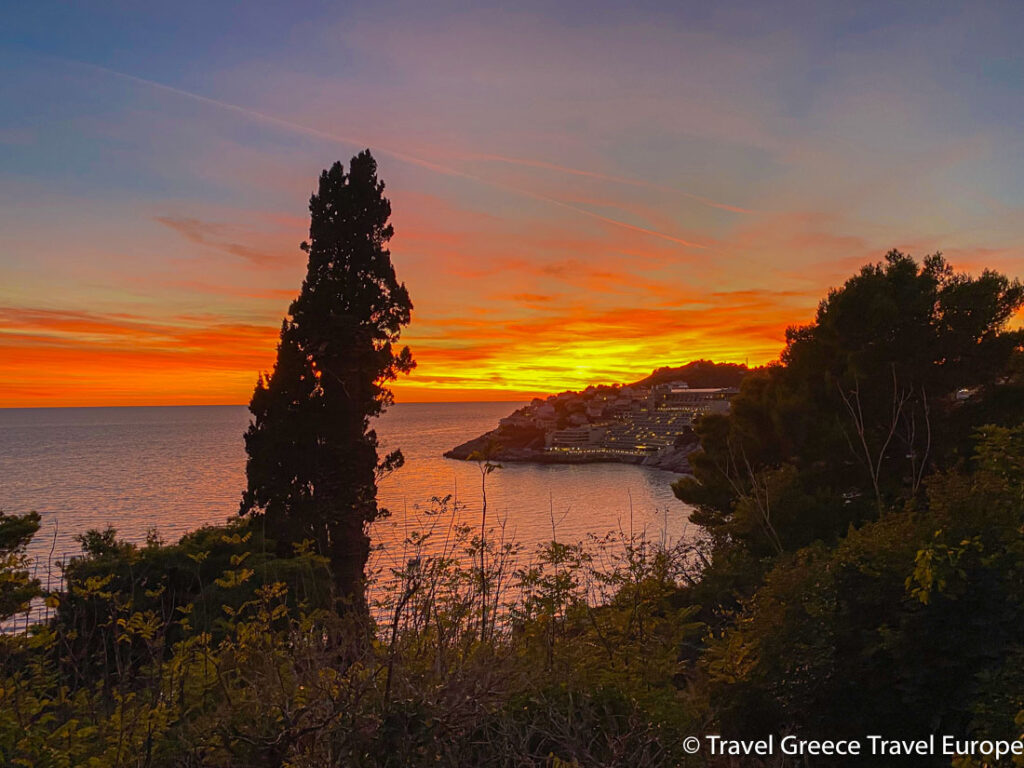
Dubrovnik, a city renowned for its stunning architecture and historical significance, also offers a vibrant nightlife scene that caters to the tastes of locals and travelers alike. Among its many attractions, the cocktail bars of Dubrovnik stand out as jewels in the city’s crown, offering a blend of sophisticated ambiance, innovative mixology, and breathtaking views.
Notable among these is the Buža Bar, a literal hole-in-the-wall establishment that offers an unparalleled drinking experience on the cliffs overlooking the sea. Meanwhile, places like the Cave Bar More, located in a natural cave, provide an atmosphere that’s as unforgettable as the drinks on the menu. The Fratellos Prosecco Bar located in the historic Boninovo area of Dubrovnik, is a fantastic option for those staying outside the city walls.
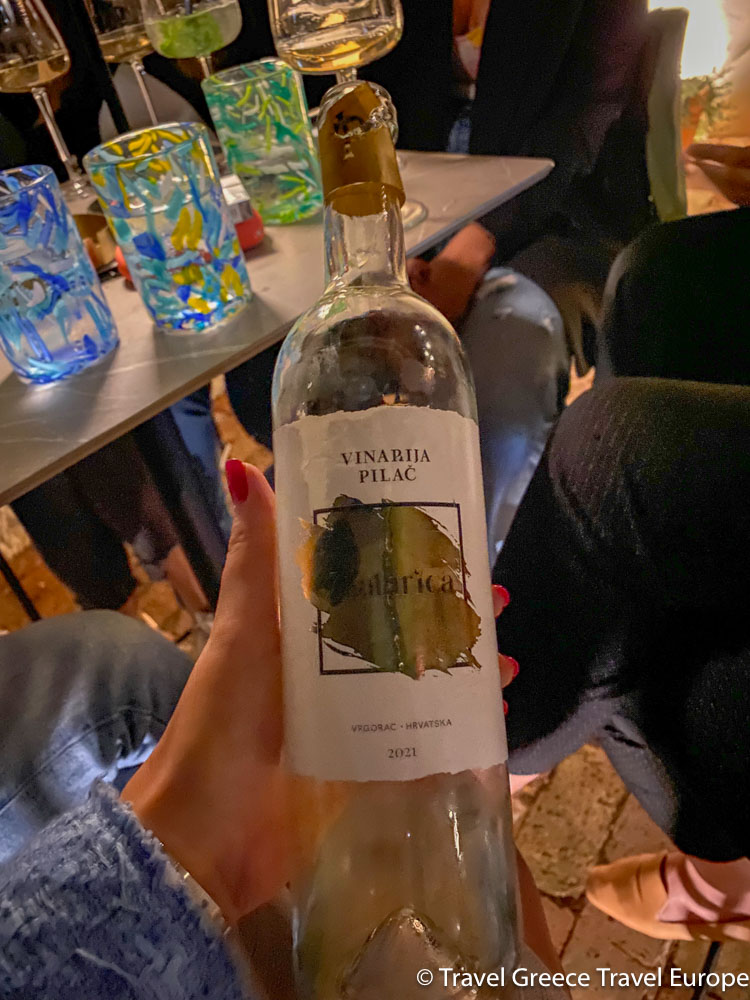
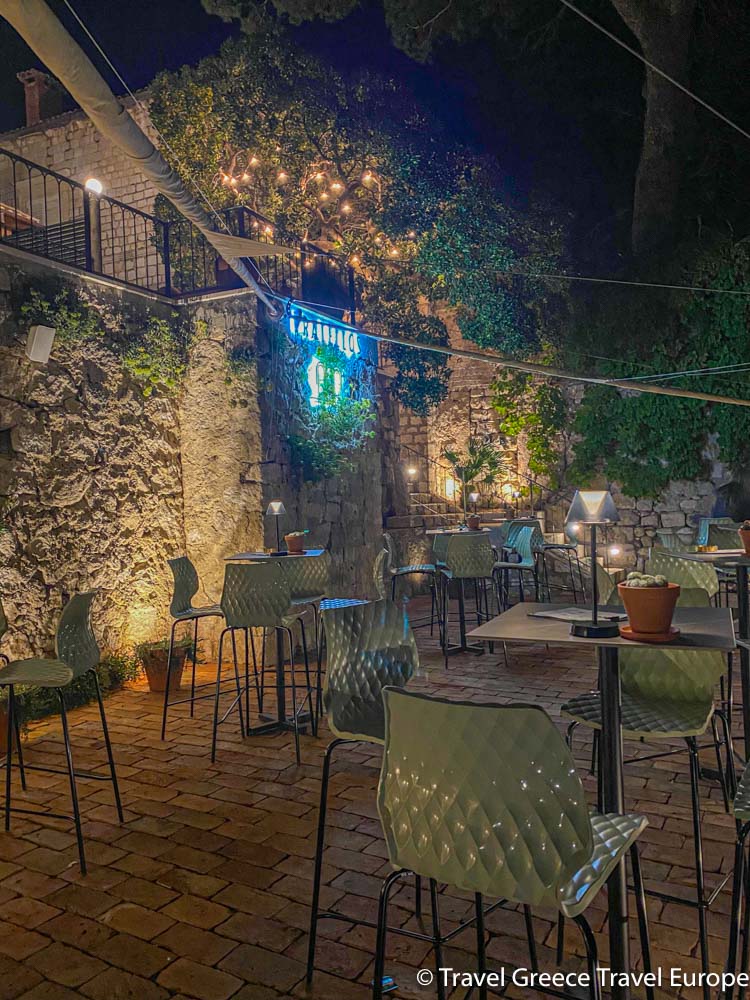
Day 2 of the 4 days in Dubrovnik itinerary: Exploring the City Walls and Dining With Locals
Morning:
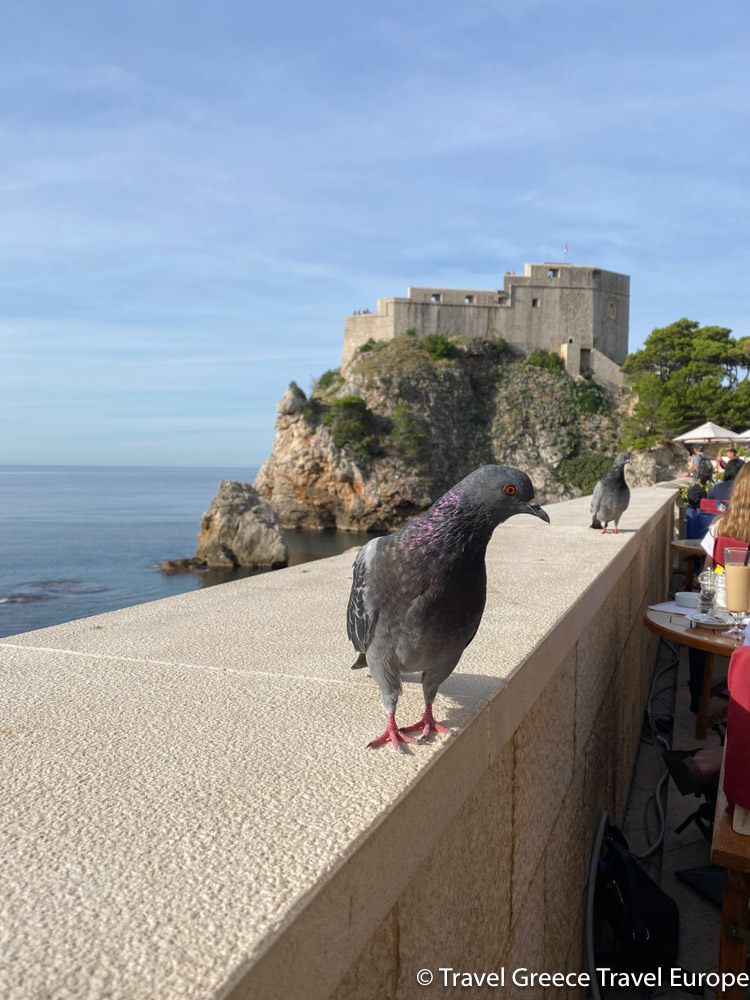
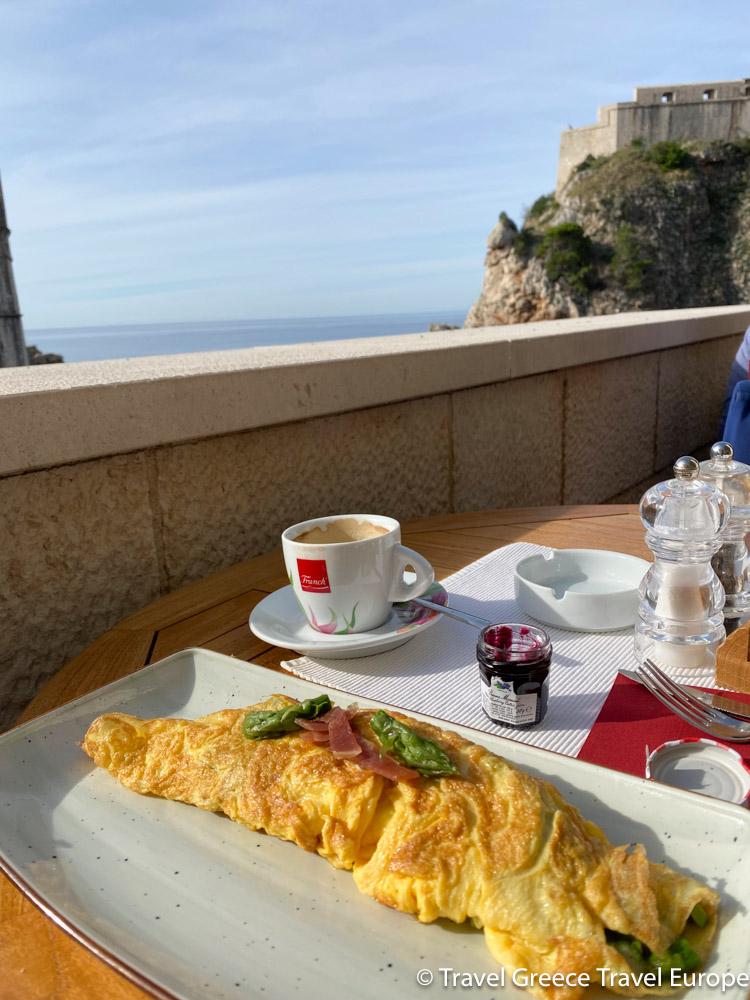
If you are staying in an apartment or simply want to skip your hotel breakfast I recommend starting your morning at the Dubravka 1836 Restaurant & Café, perched by the west entrance to Dubrovnik’s Old City, with breathtaking views of historic fortresses and centennial plane trees.
Walk The Dubrovnik City Walls
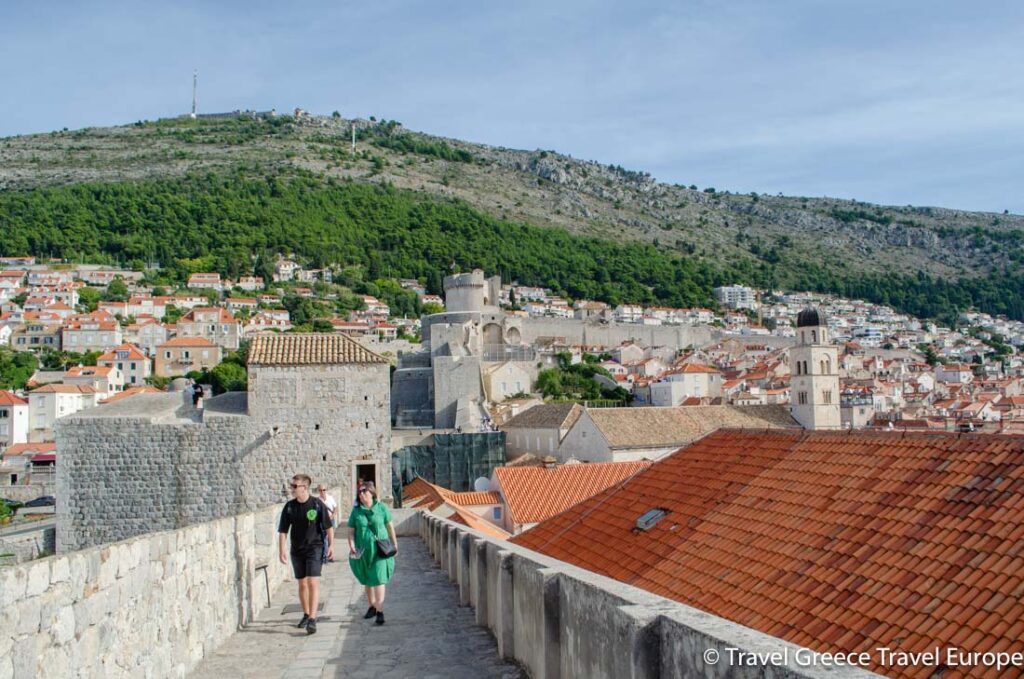
Walking the Dubrovnik city walls is a quintessential experience for any visitor to this historic city, offering unparalleled views of the Old Town and the shimmering Adriatic Sea. The walls, which date back to the 13th century, have been preserved through the centuries and stand as a testament to Dubrovnik’s rich history. Here’s a comprehensive guide on how to make the most of this unforgettable walk.
Planning Your Visit
Best Time to Go: Early morning or late afternoon are the best times to walk the walls, as the heat and crowds are less intense. The golden light of these times also offers the most beautiful views and photo opportunities.
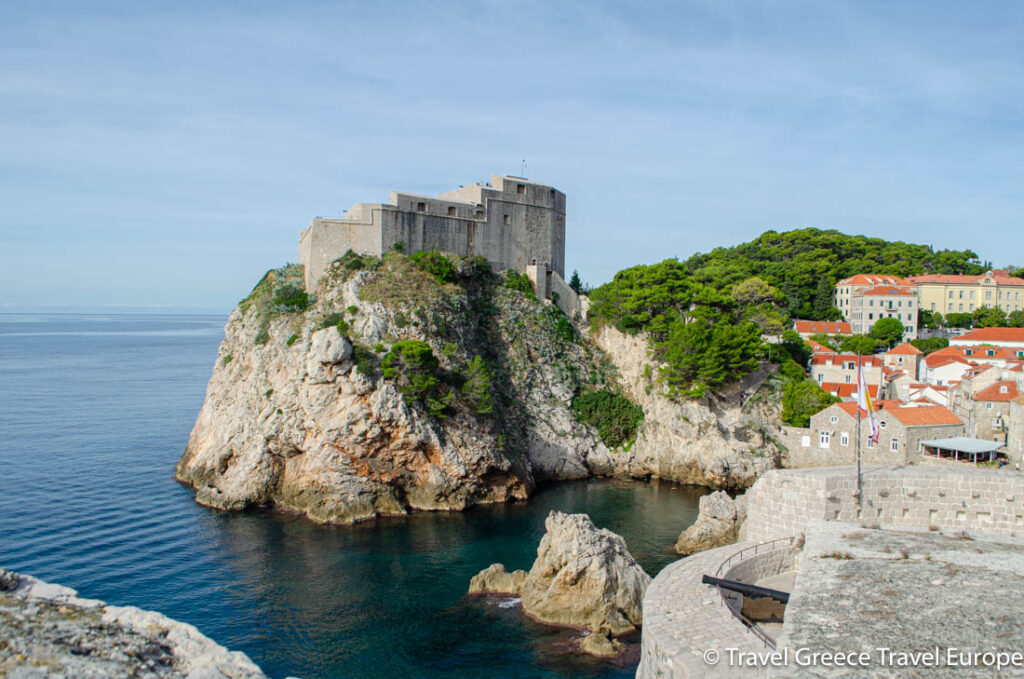
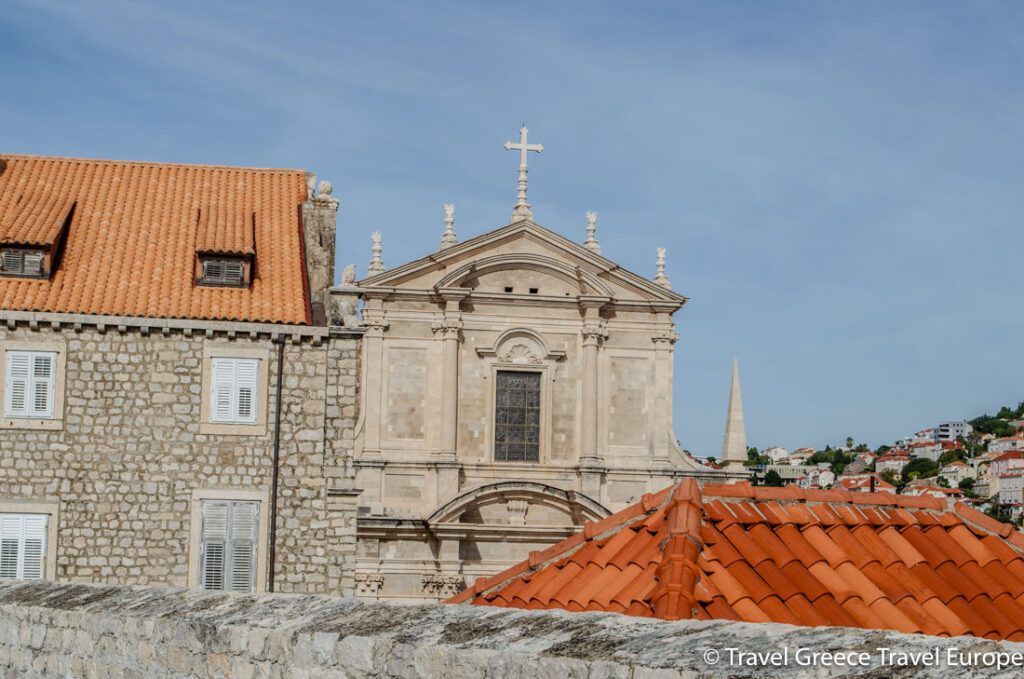

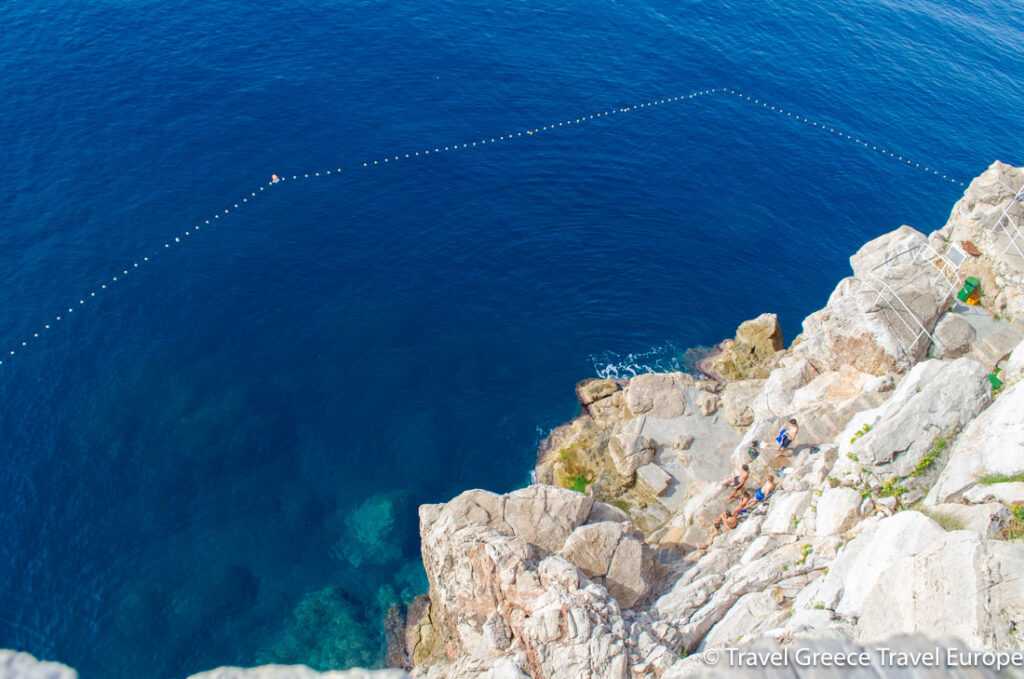
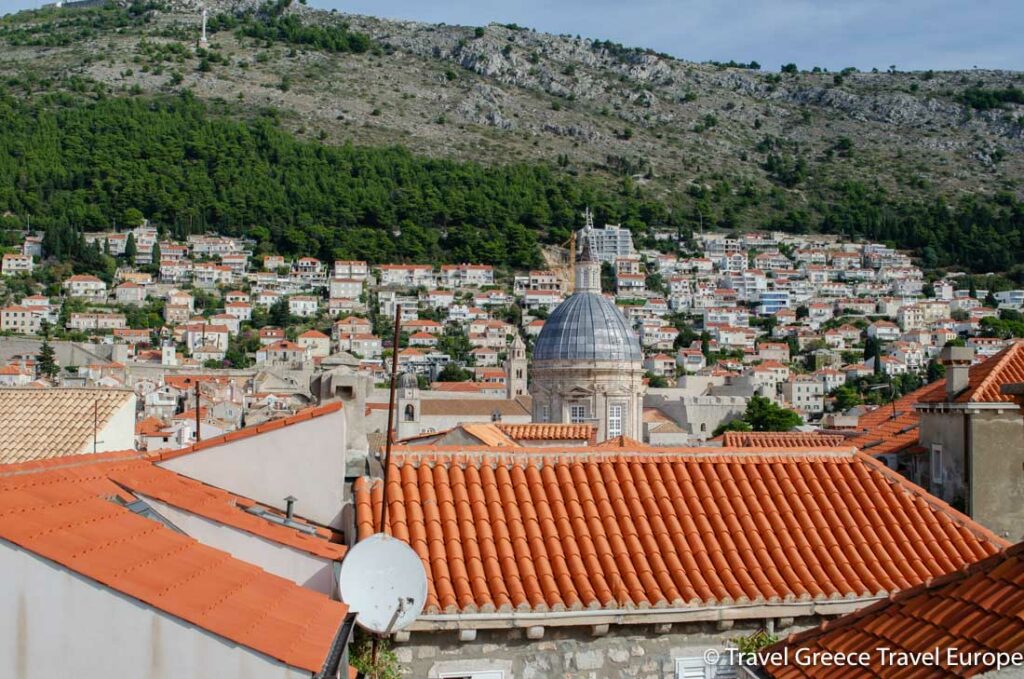
Tickets: Entrance tickets can be purchased at the main entrance gate near Pile Gate, as well as at the Saint John Fortress and Saint Luke Fortress entrances. Tickets include access to the Fort Lovrijenac, a must-visit fortress just outside the city walls. Prices may vary, and discounts may be available for children, students, and seniors. It’s advisable to check the latest ticket prices and opening hours before your visit.
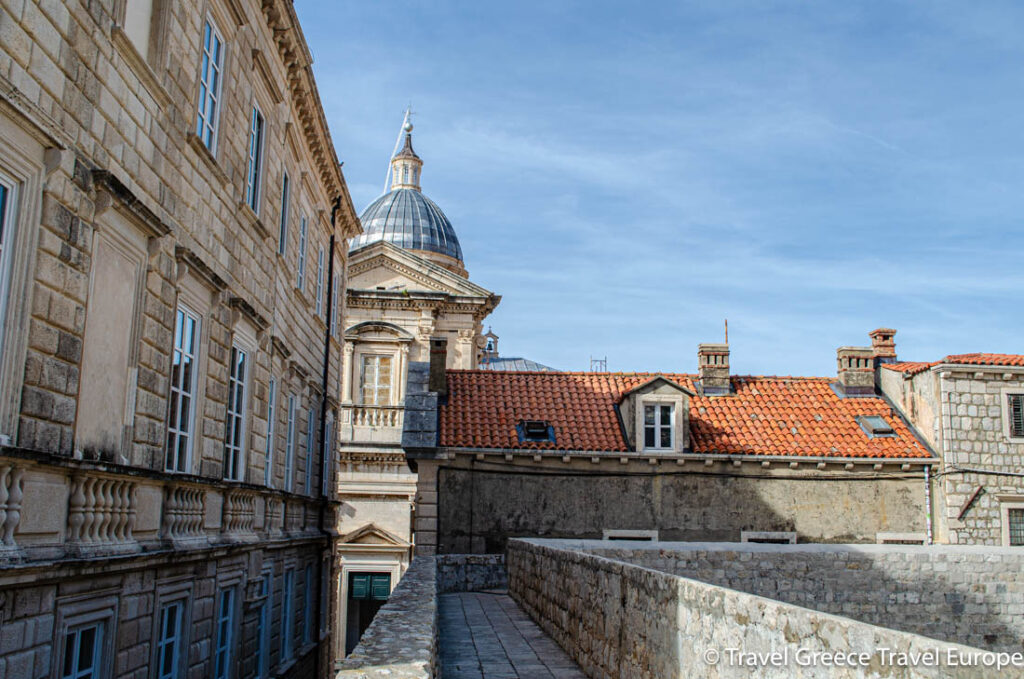
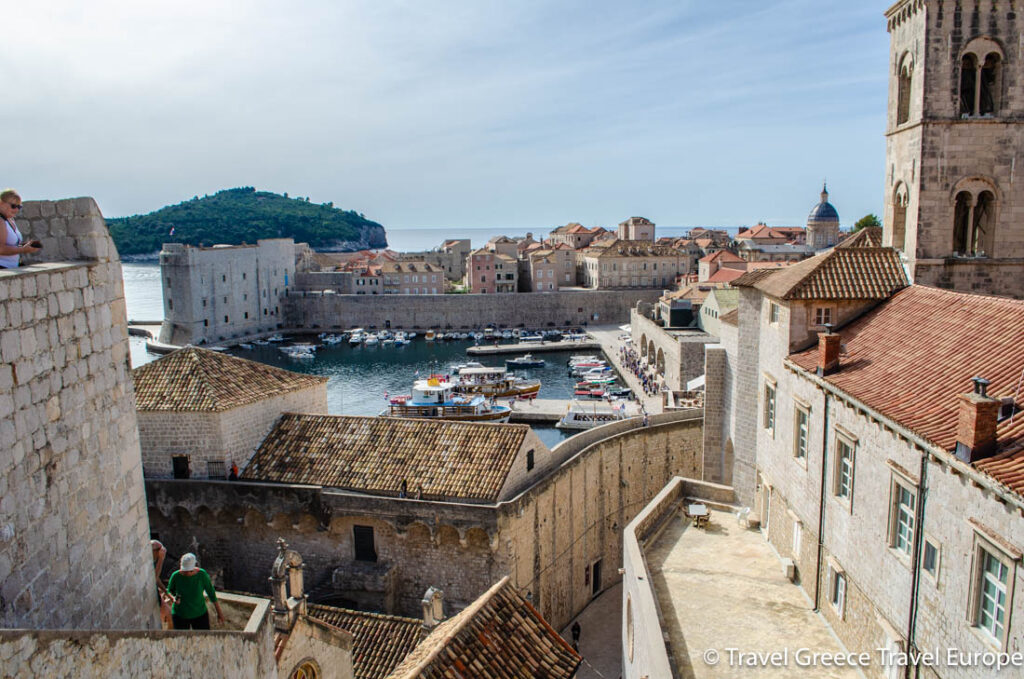
If you plan to visit several museums I recommend buying the Dubrovnik Pass which is a convenient way to explore the city’s rich heritage, providing free entry to many of Dubrovnik’s museums, galleries, and walls, as well as public transportation options within the city. The daily pass costs 15 Euros and the 3 day pass is 25 Euros per person. Please check the official website for more details.
Duration and Distance: The entire walk is approximately 2 kilometers (1.24 miles) long and typically takes about 1 to 2 hours to complete, depending on your pace and how often you stop to take in the views and snap photos.
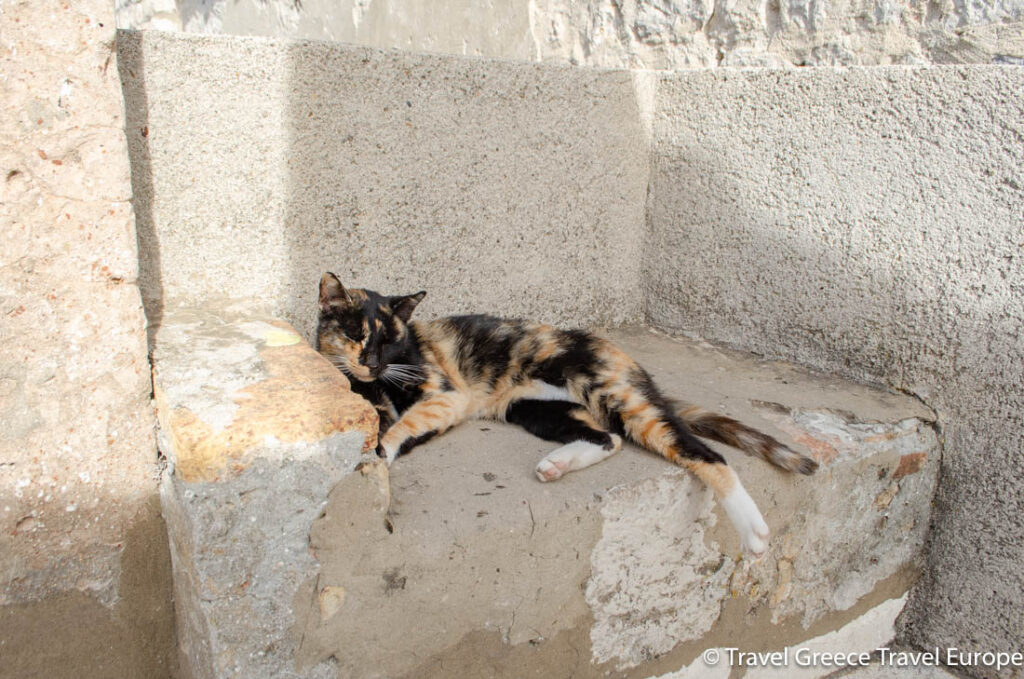
What to Bring
- Comfortable Footwear: Wear sturdy, comfortable shoes as the path can be uneven and involves many steps.
- Water and Snacks: Bring water, especially during the summer months, as there are few places to purchase refreshments along the walls. A small snack might also be a good idea.
- Sun Protection: Sunscreen, sunglasses, and a hat are essential
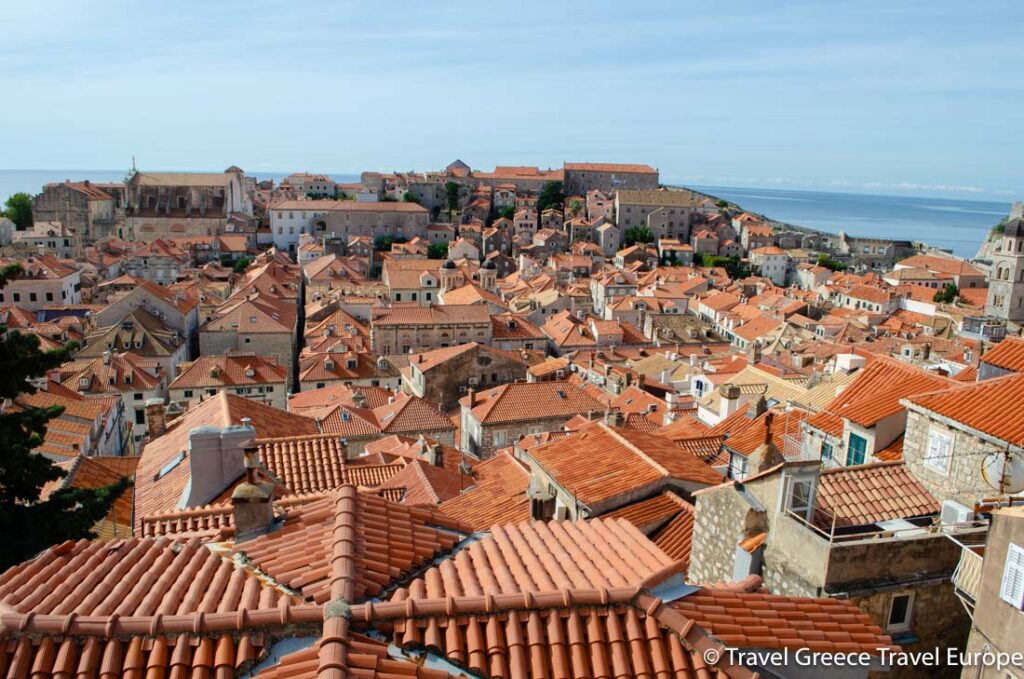
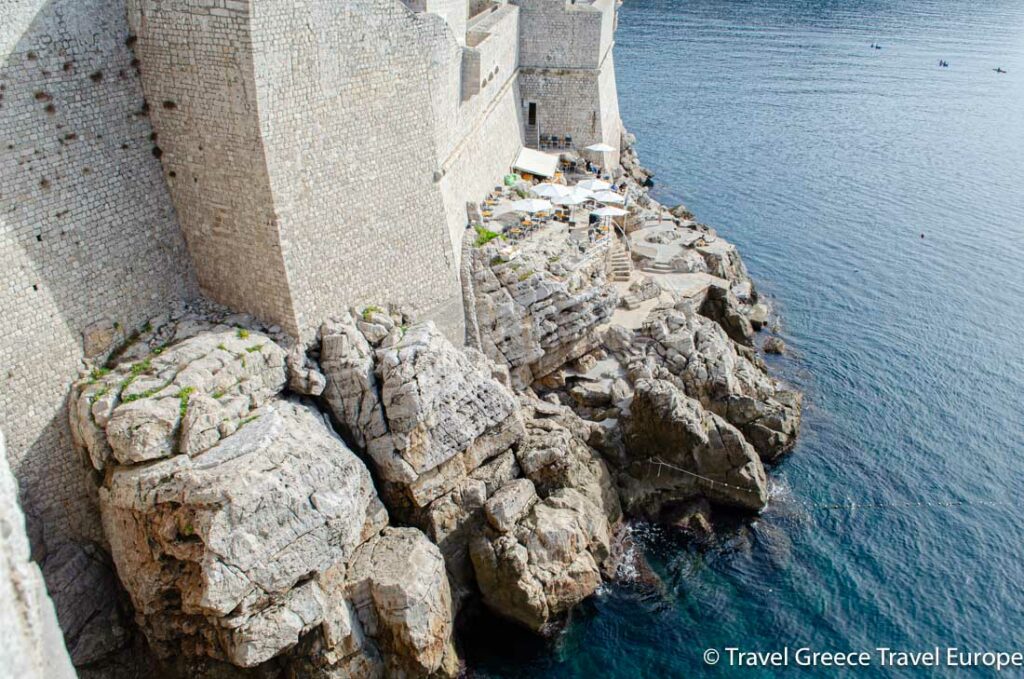
| Tip
Discover Dubrovnik’s city walls before the crowds arrive . Explore this beautiful defensive wall system and admire city views as you hear local history.
Visit Rector’s Palace
Rector’s Palace, a masterpiece of Dubrovnik’s rich history and architectural beauty, stands as a testament to the city’s glorious past.
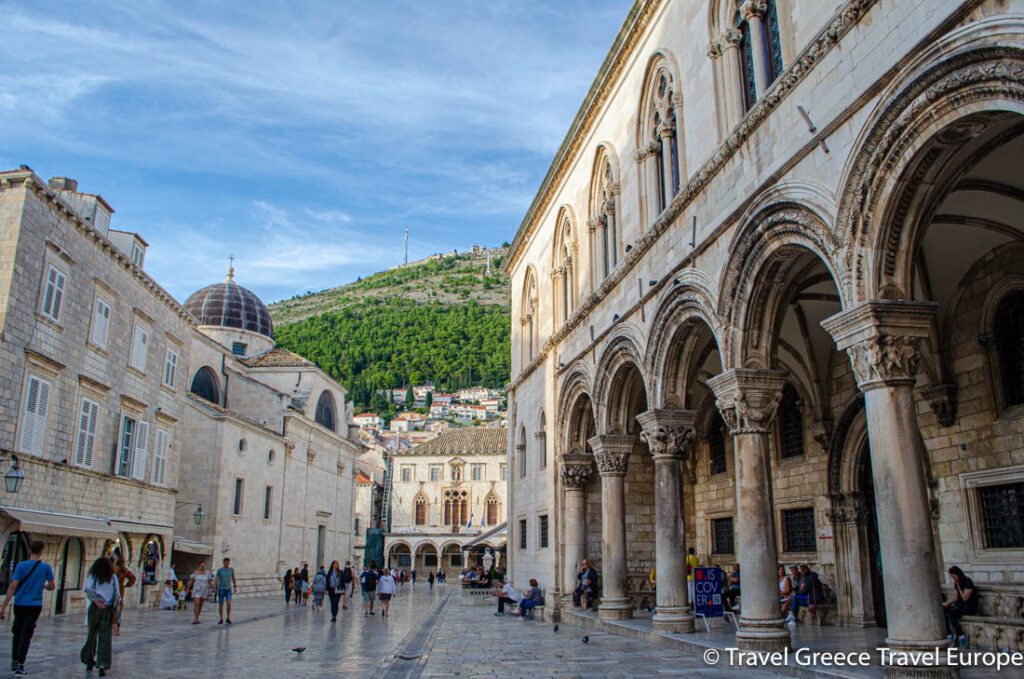
Once the seat of the Rector of the Republic of Ragusa, this Gothic-Renaissance palace is now a museum, captivating visitors with its elegant façade, harmonious courtyards, and the intricate blend of styles that reflect its long history of additions and renovations.
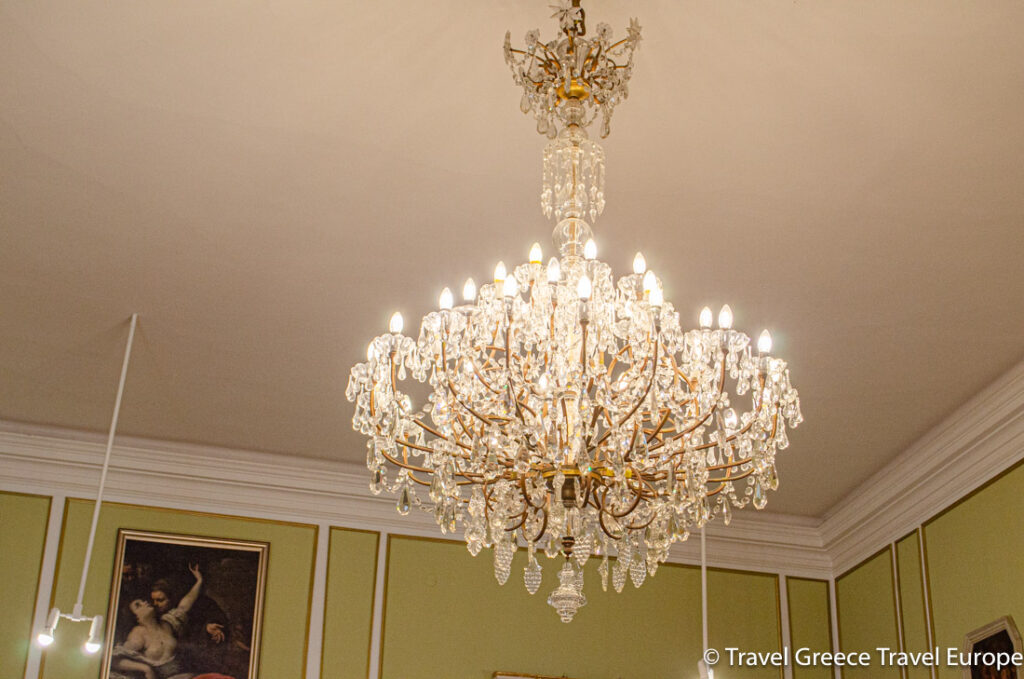
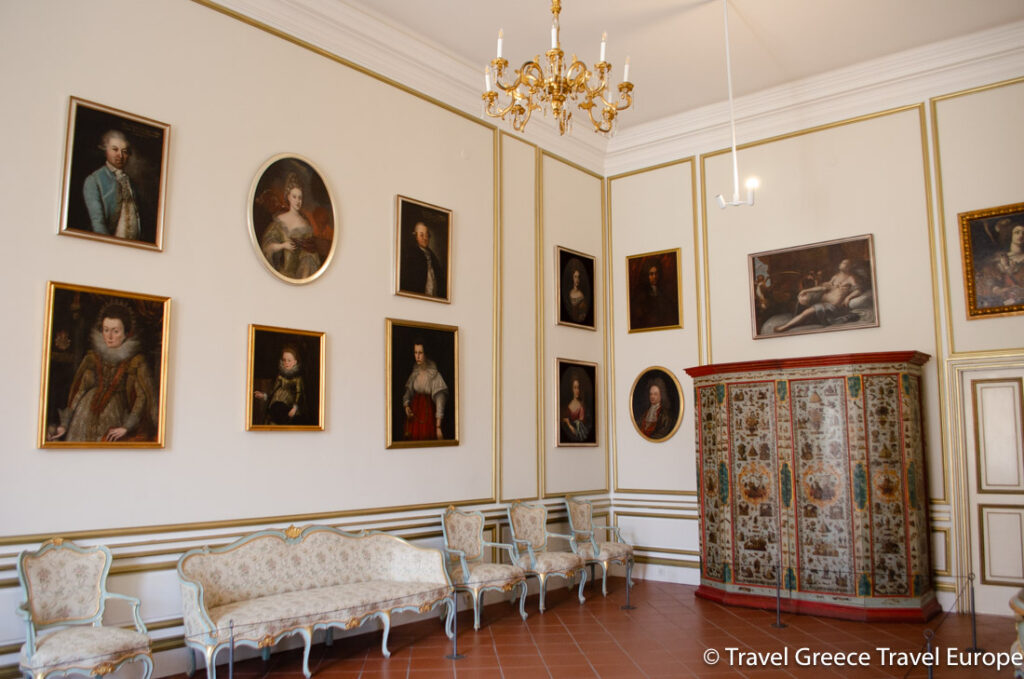
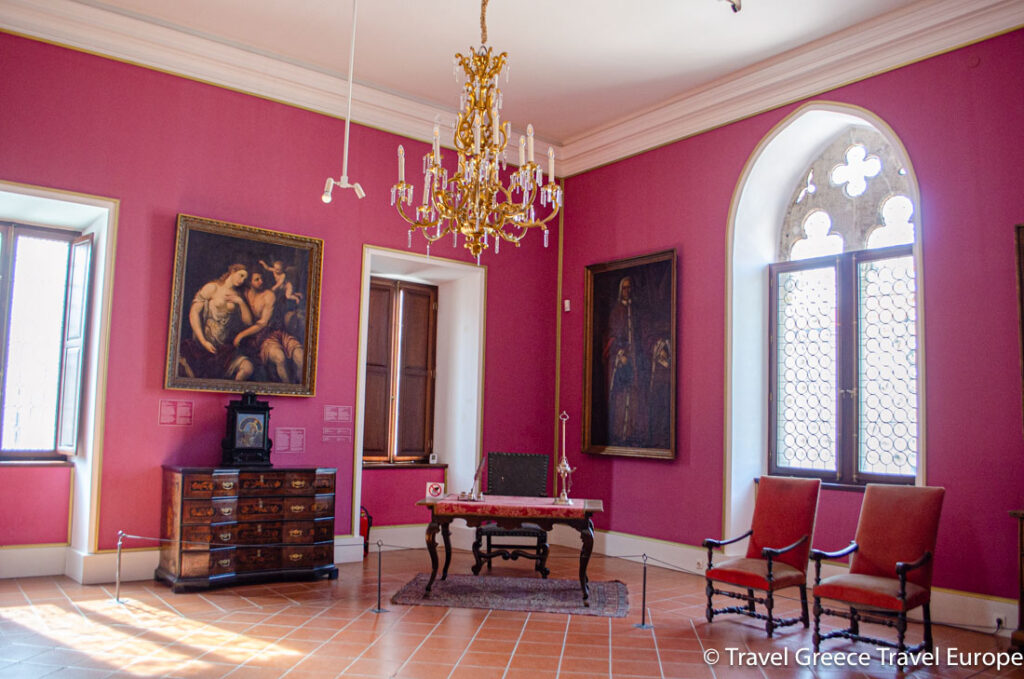
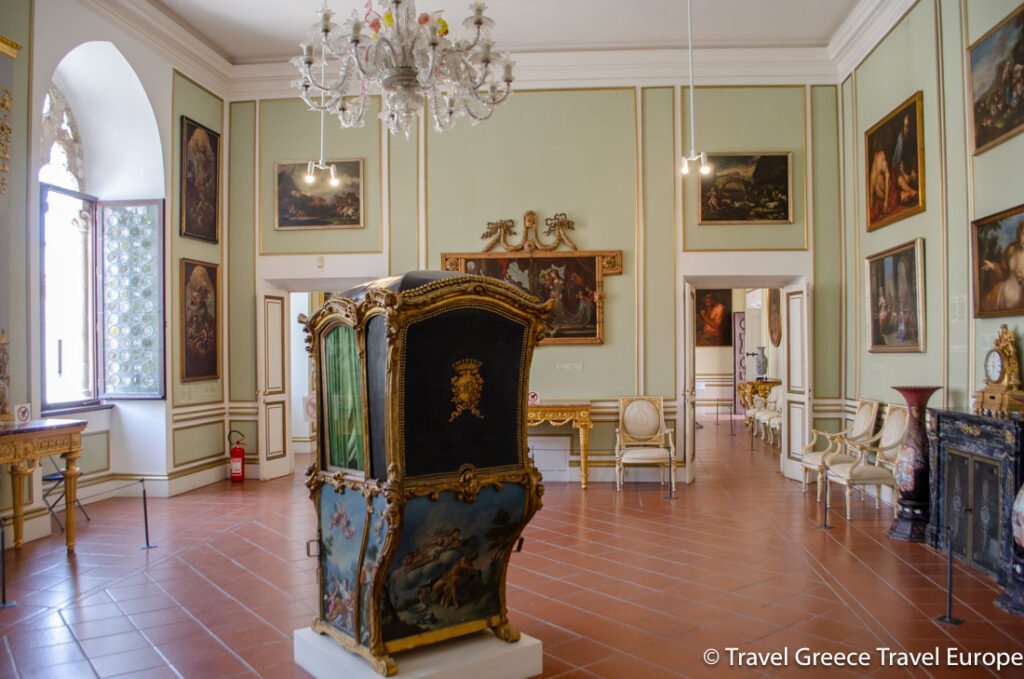
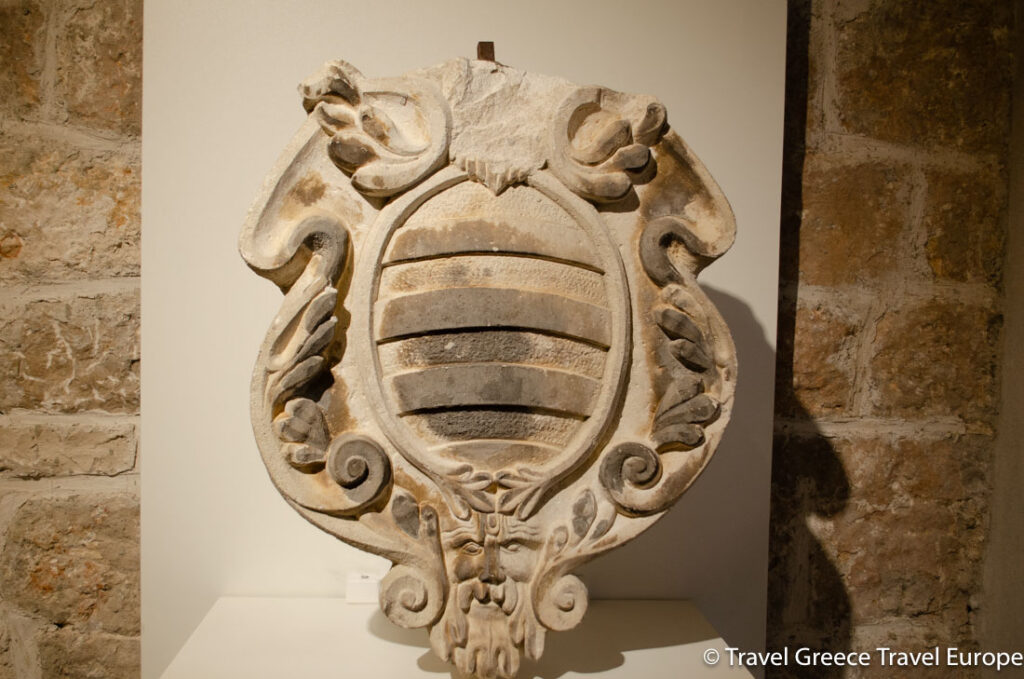
Walking through its halls, one is transported back in time, surrounded by opulent rooms that once served as the administrative center and the Rector’s residence. The palace’s museum houses an impressive collection of artifacts, including original furnishings, portraits, coats of arms, and documents that offer a glimpse into the daily life and governance of the Republic. The harmonious blend of its architectural styles, from the original Gothic to the later Renaissance and Baroque additions, showcases the evolution of Dubrovnik’s artistic and cultural landscape.
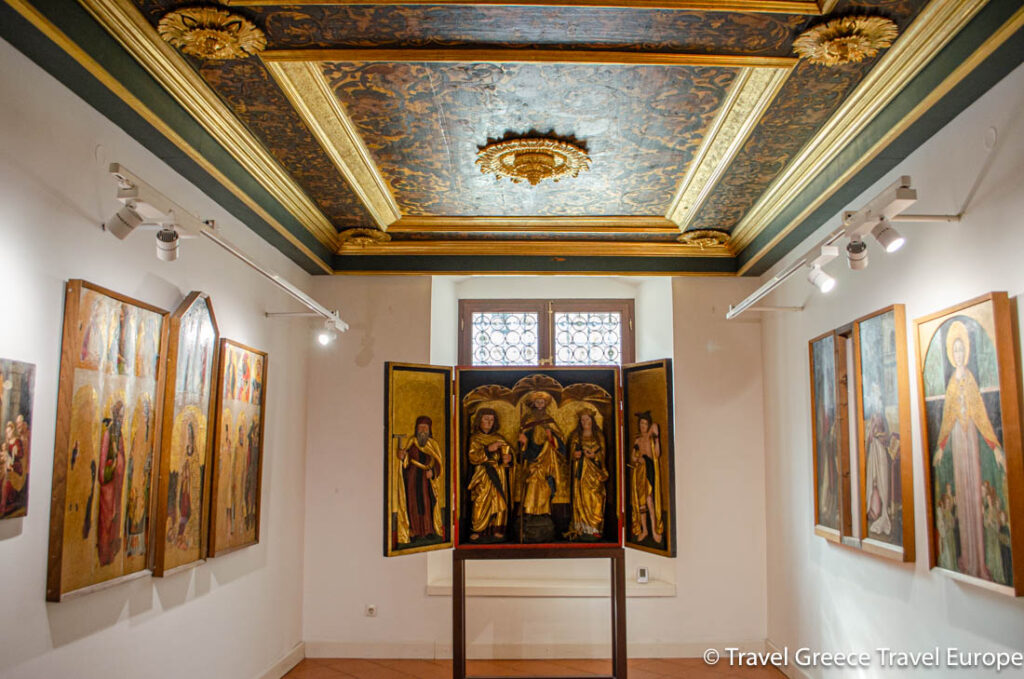
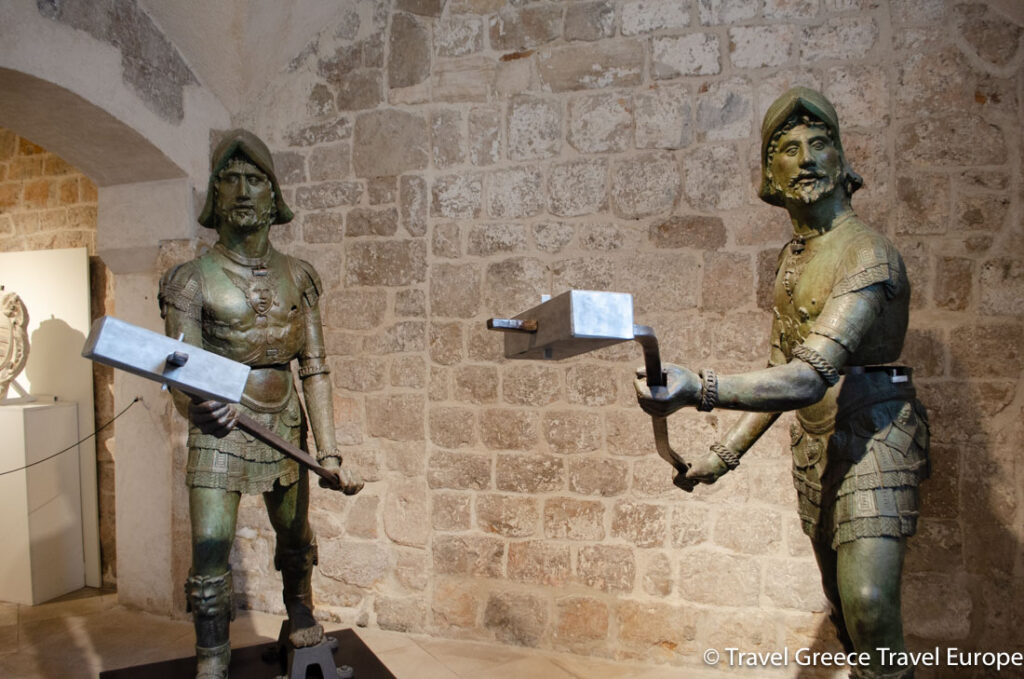
The highlight of the visit is the Rector’s office, a meticulously preserved room where the weight of decisions that shaped Dubrovnik’s history can be felt. The palace’s atrium, with its elegant arches and serene atmosphere, hosts classical music concerts, adding an auditory layer to the historical experience.
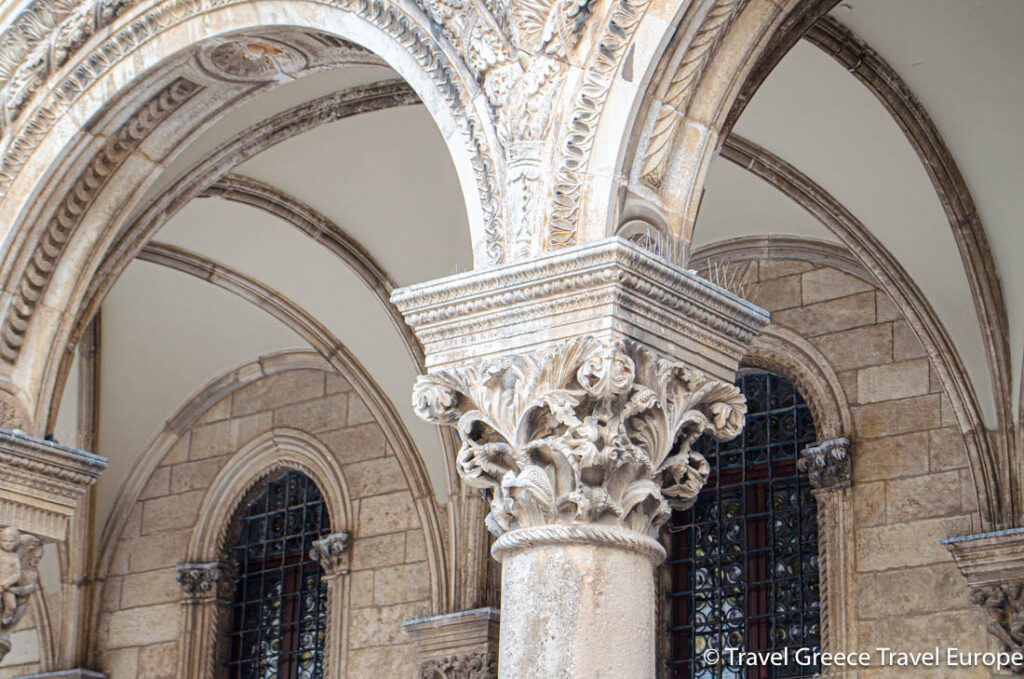
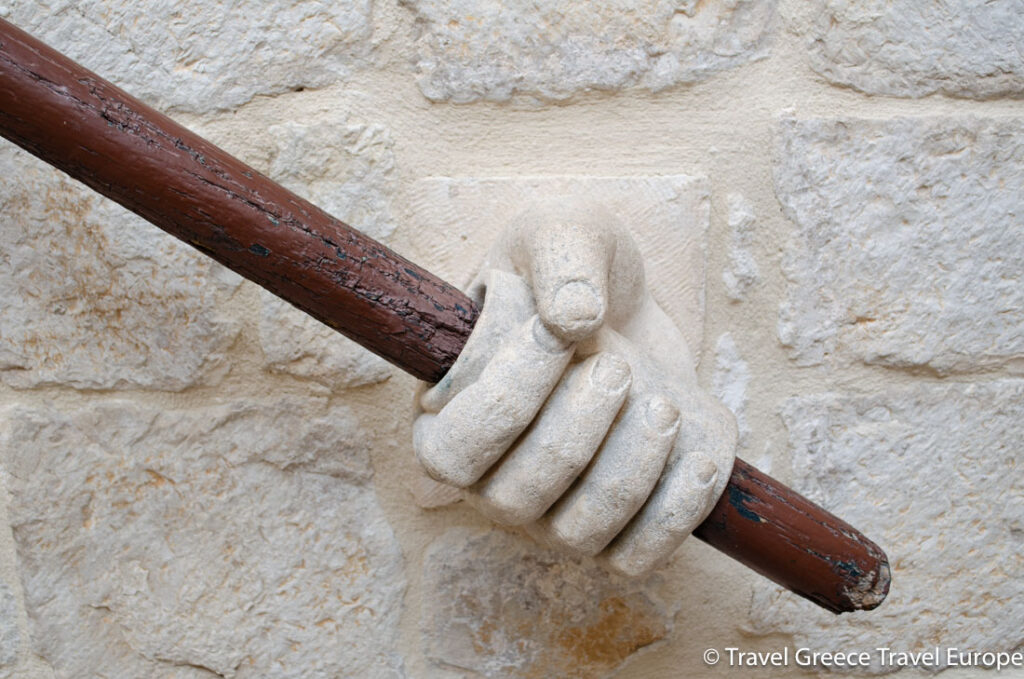
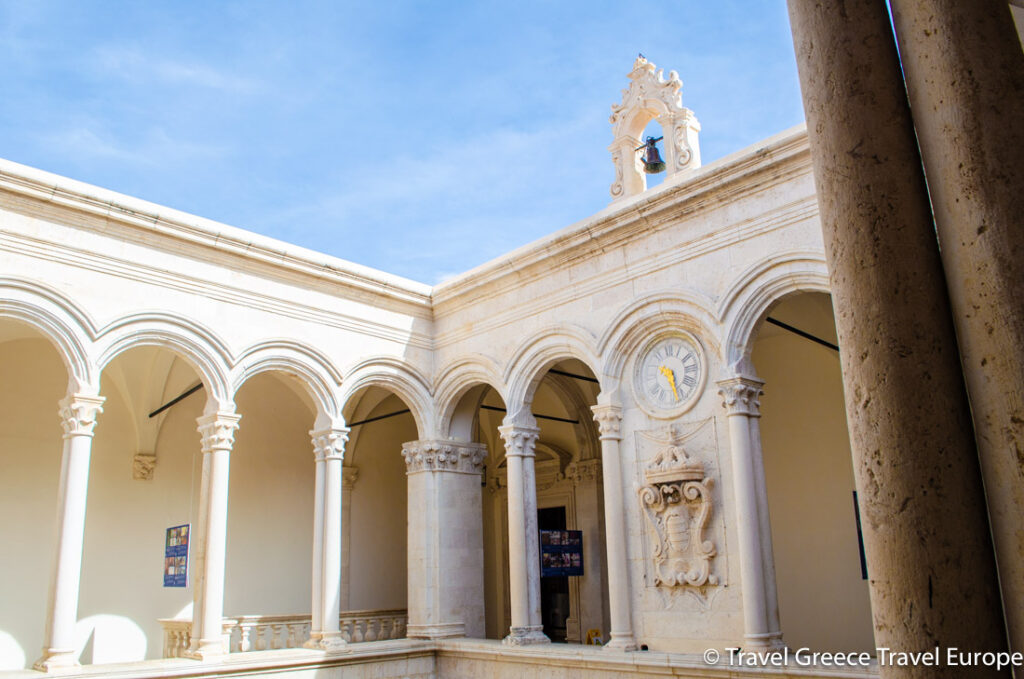
Rector’s Palace is not just a museum; it’s a journey through time, offering insights into the political, cultural, and everyday life of Dubrovnik’s past. Its central location in the heart of the Old Town makes it an essential visit for anyone looking to delve deeper into the city’s heritage, making it a cornerstone of Dubrovnik’s historical narrative.
Take an Eco Tuk Tuk Tour and admire the view from Mount Srđ
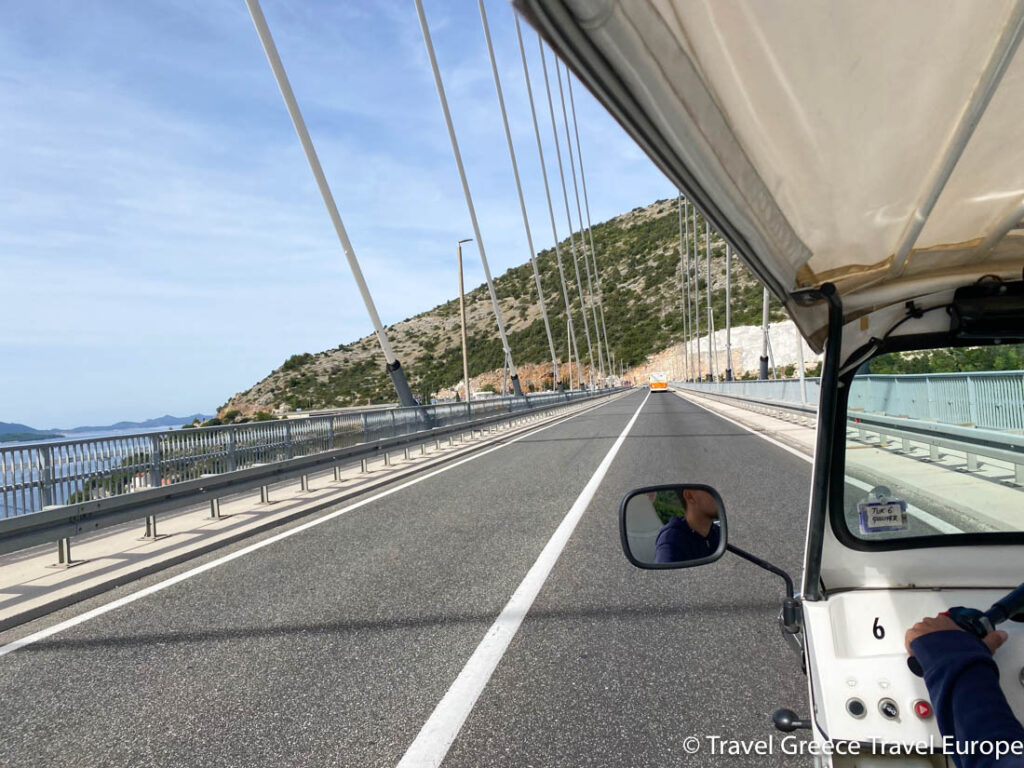
Eco Tuk Tours Dubrovnik offers a unique and environmentally friendly way to explore the stunning city of Dubrovnik and its surrounding beauty. With a variety of carefully curated tours, such as “The Best of Dubrovnik,” “When the Sun Goes Down,” and specialized tours like “Dubrovnik Under Siege,” visitors can enjoy breathtaking views from Dubrovnik’s Franjo Tuđman bridge, the serene beauty of Srdj mountain, and the historic ambiance of the Old Town, all from the comfort of a 100% electric tuk-tuk.
Each tour, led by experienced and passionate guides, promises not only to showcase the city’s best views and hidden gems but also to provide a personal and memorable experience, making Eco Tuk Tours an excellent choice for those looking to discover Dubrovnik in a fun, green, and engaging way. You can book it directly through the company website or through Viator – E-Tuk Tuk Tour in Dubrovnik.
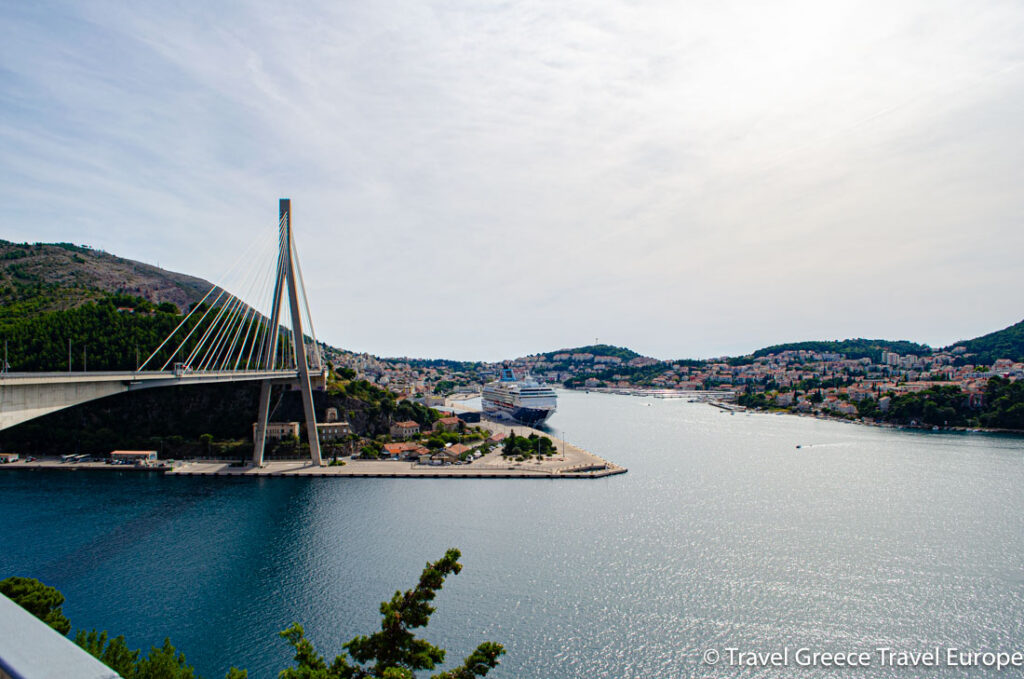
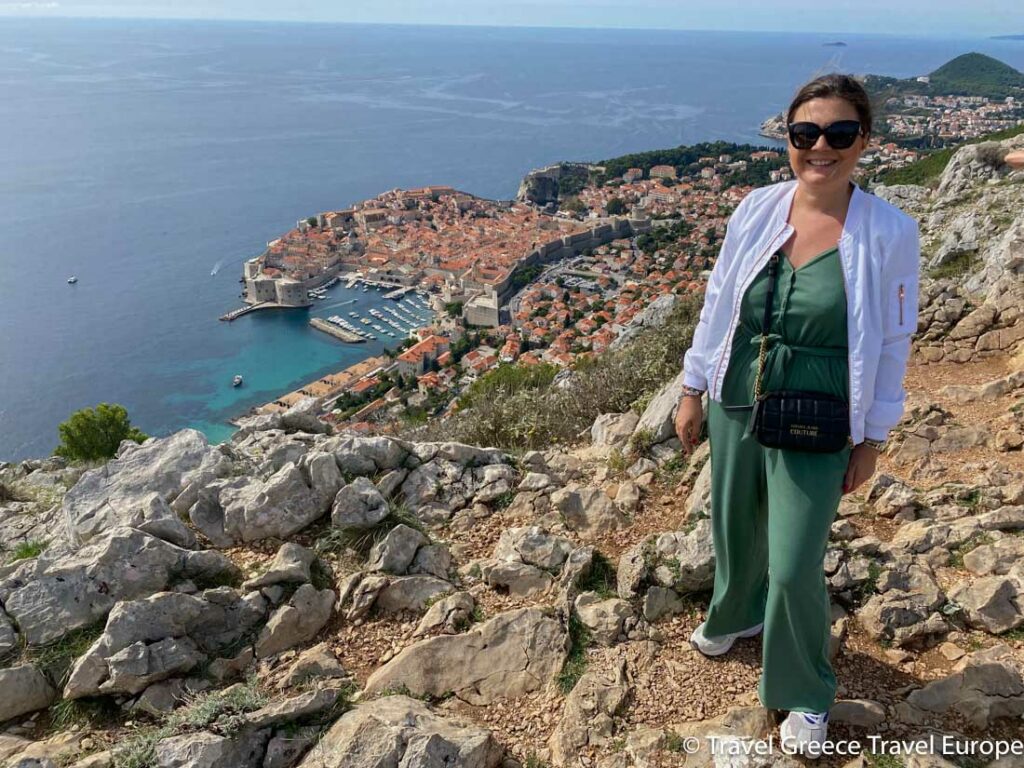
Tip: Another way to get to Mountain Srdj is via a cable car which costs 27 Euro for a round trip per person – the When the Sun Goes Down Eco Tuk Tuk tour is at 40 Euros per person, lasts two hours and you get to experience much more of Dubrovnik. If you do wish to take the cable car and combine it with a walking tour check out Dubrovnik: Cable Car, Walking Tour and City Walls Combo
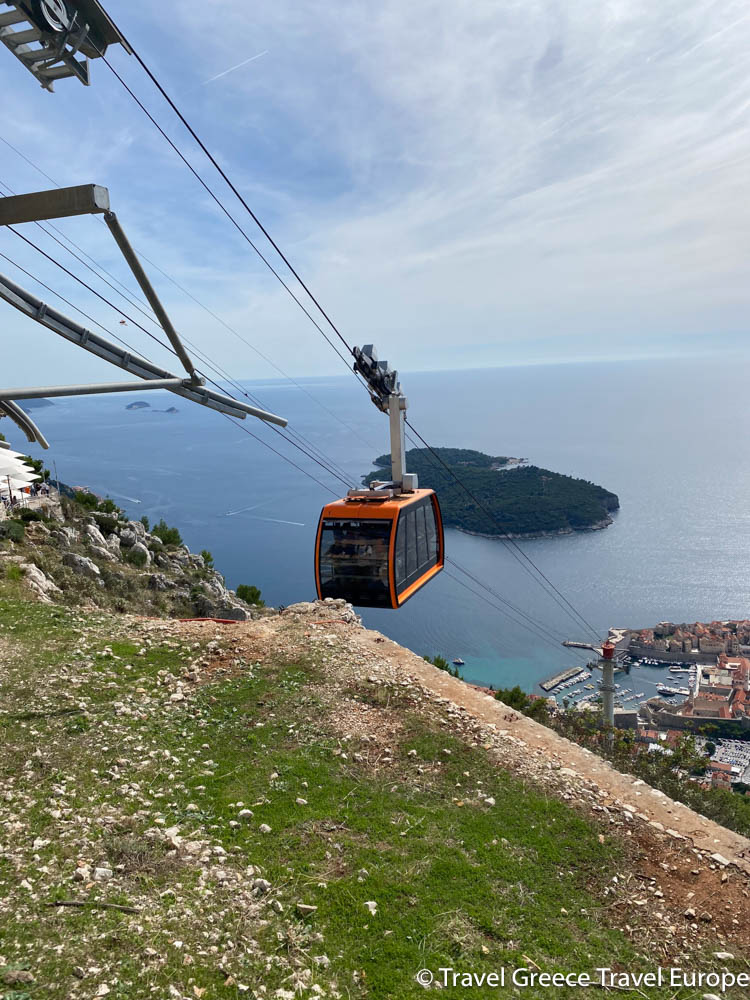
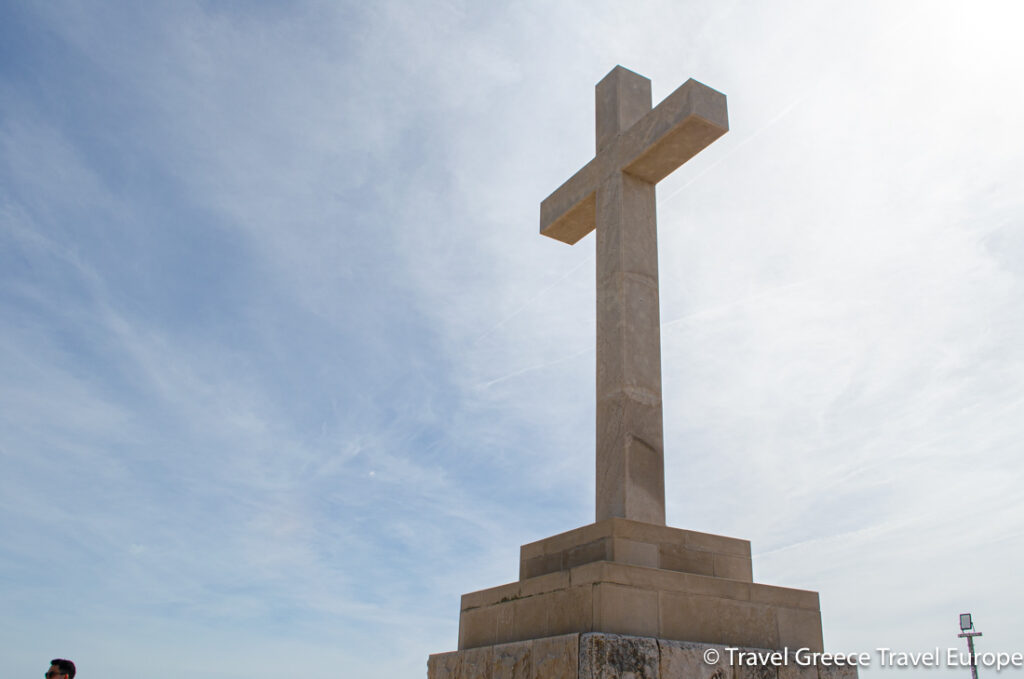
Enjoy lunch within the Dubrovnik City Walls
Dining within the ancient city walls of Dubrovnik offers a unique culinary journey through a variety of charming restaurants that cater to every palate. From cozy, family-run eateries serving traditional Dalmatian dishes to sophisticated establishments offering modern interpretations of Mediterranean cuisine, the options are as diverse as they are delightful.
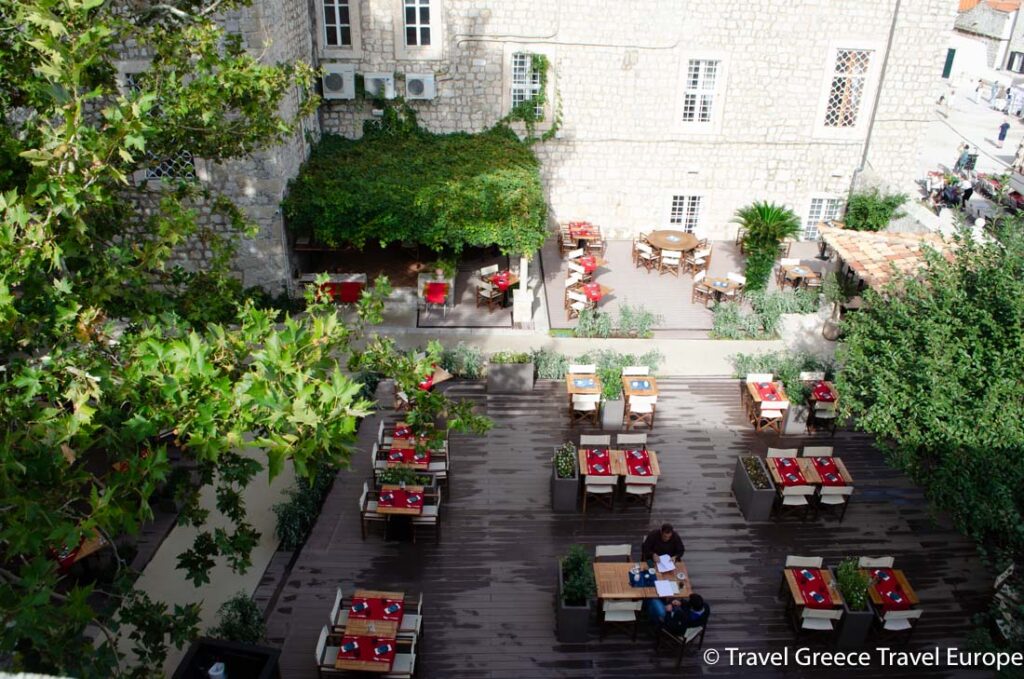
Many of these restaurants are nestled in picturesque settings, from secluded courtyards and vibrant piazzas to spots with stunning views of the Adriatic Sea. Whether you’re seeking the comfort of freshly caught seafood, the warmth of homemade pasta, or the adventure of trying local specialties like black risotto, lunch inside Dubrovnik’s city walls promises an unforgettable gastronomic experience.
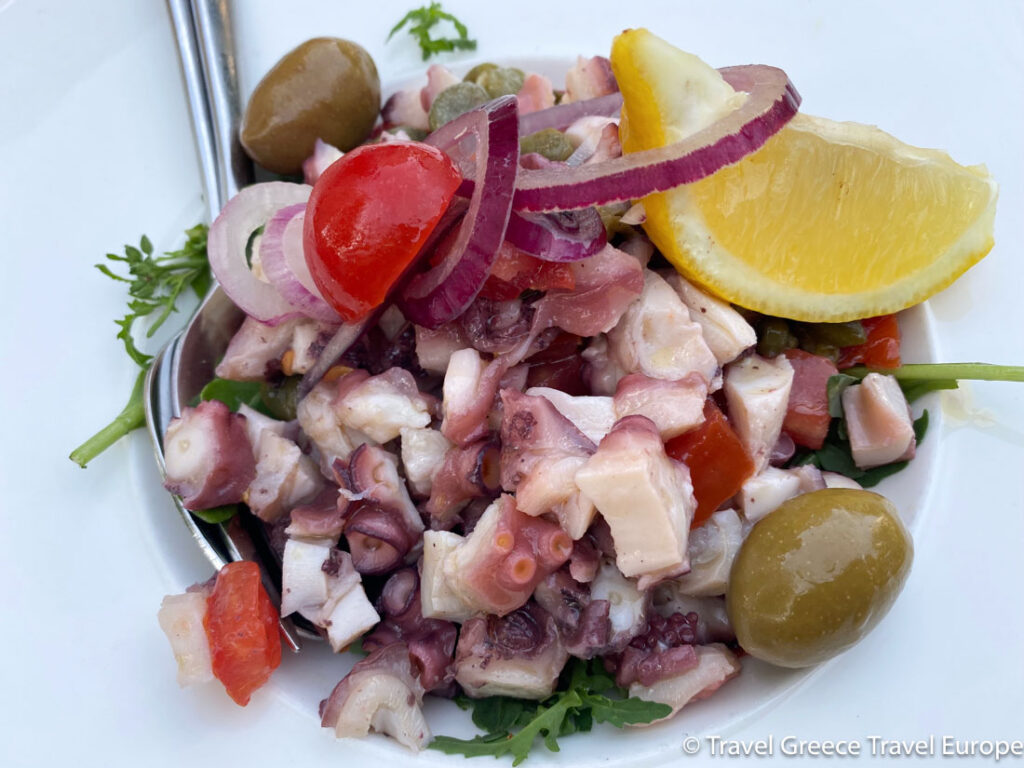
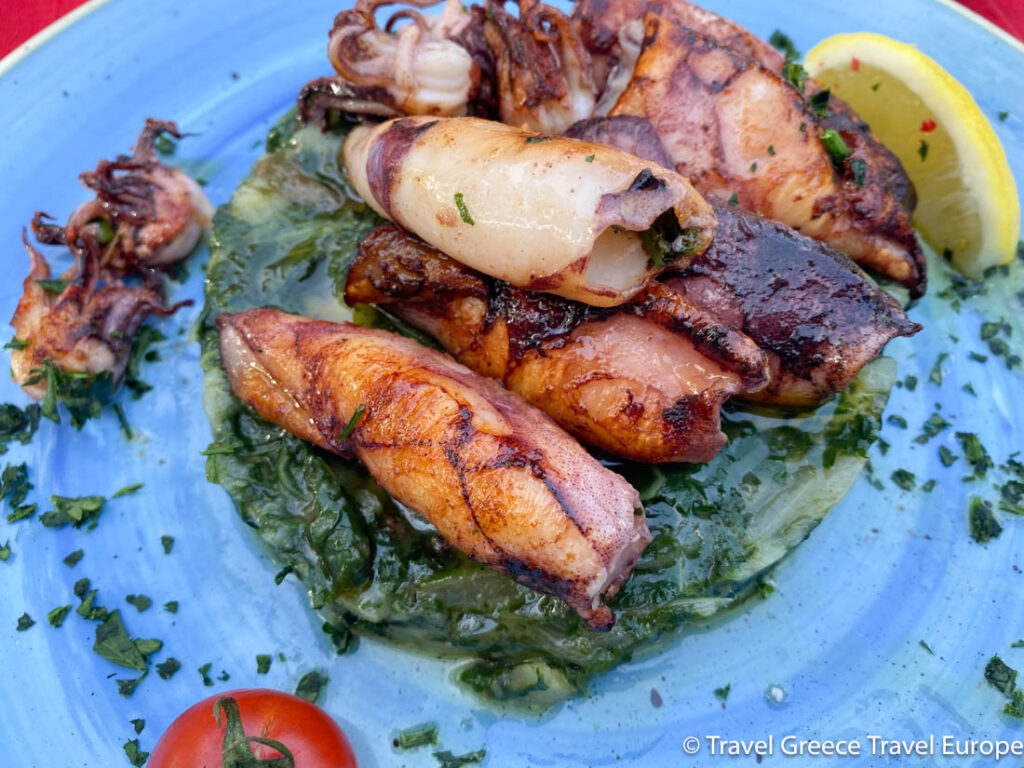
Afternoon:
Explore the Museum of Modern Art
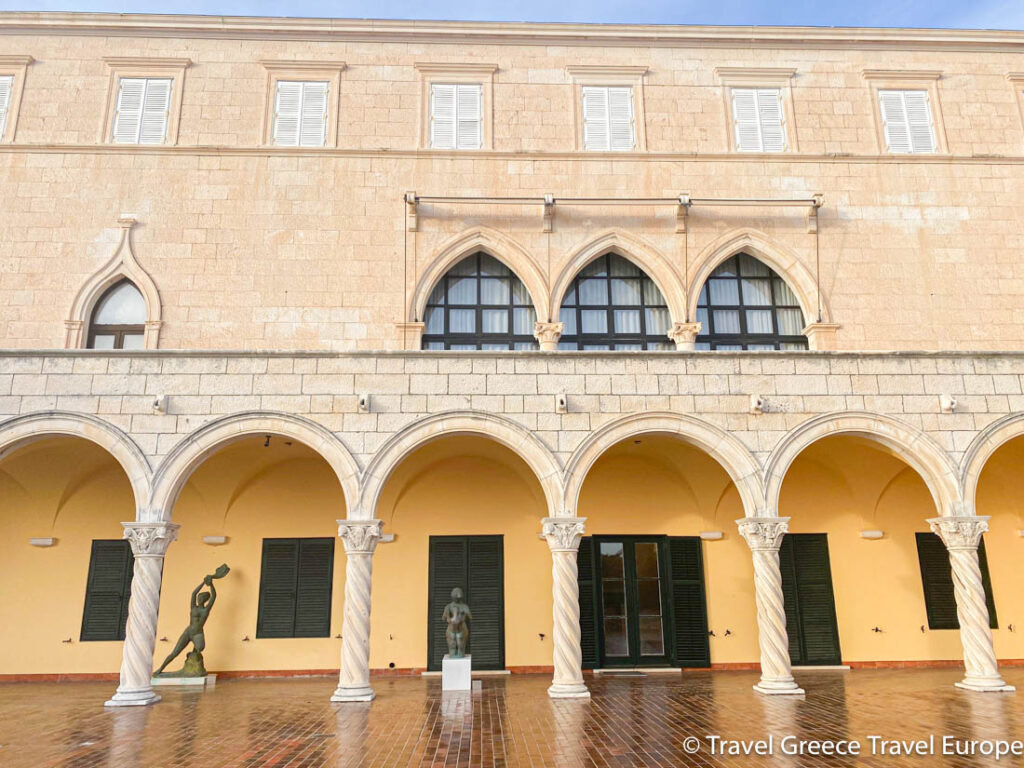
If you love art then a visit to the Museum of Modern Art Dubrovnik is something that I recommend that you add to your 4-day Dubrovnik itinerary. The entrance to the museum was included in the Dubrovnik Pass which I purchased for the day.
The museum was established in 1945 and housed since 1948 in the architecturally notable Banac mansion designed by Lavoslav Horvat and Harold Bilinić, it highlights the wealth of modern and contemporary art within the historic city. Reflecting the Gothic and Renaissance styles of Dubrovnik’s architectural heritage, the museum, along with its associated Dulčić, Masle, and Pulitika Gallery and the Pulitika Studio at Fort St John, showcases a rich collection of over 3,000 artworks.
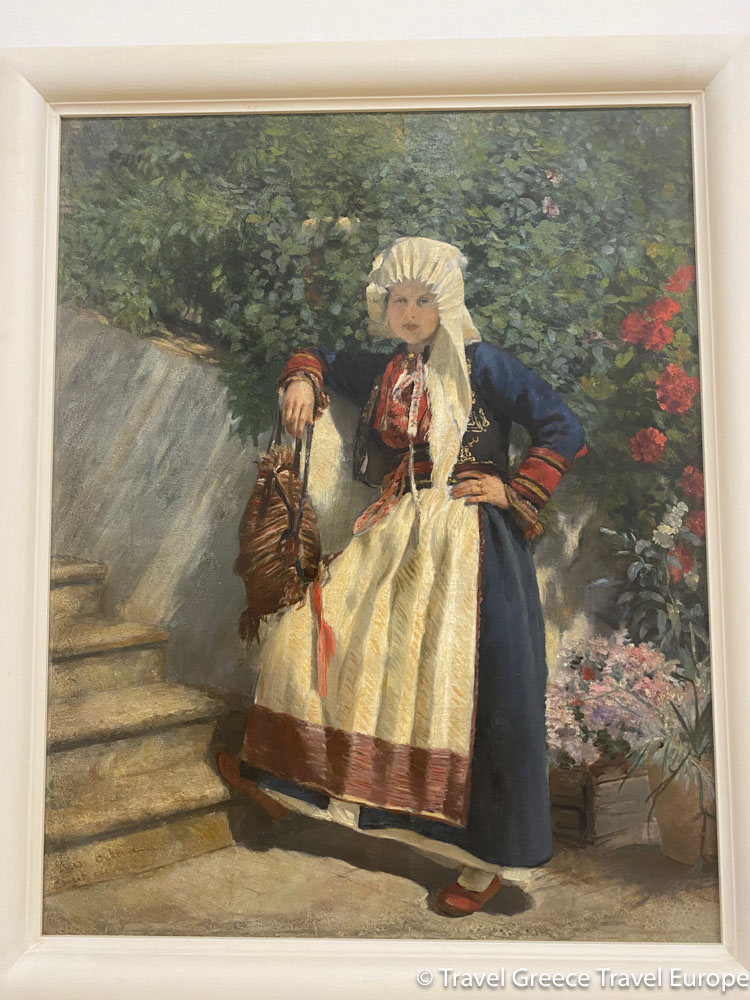
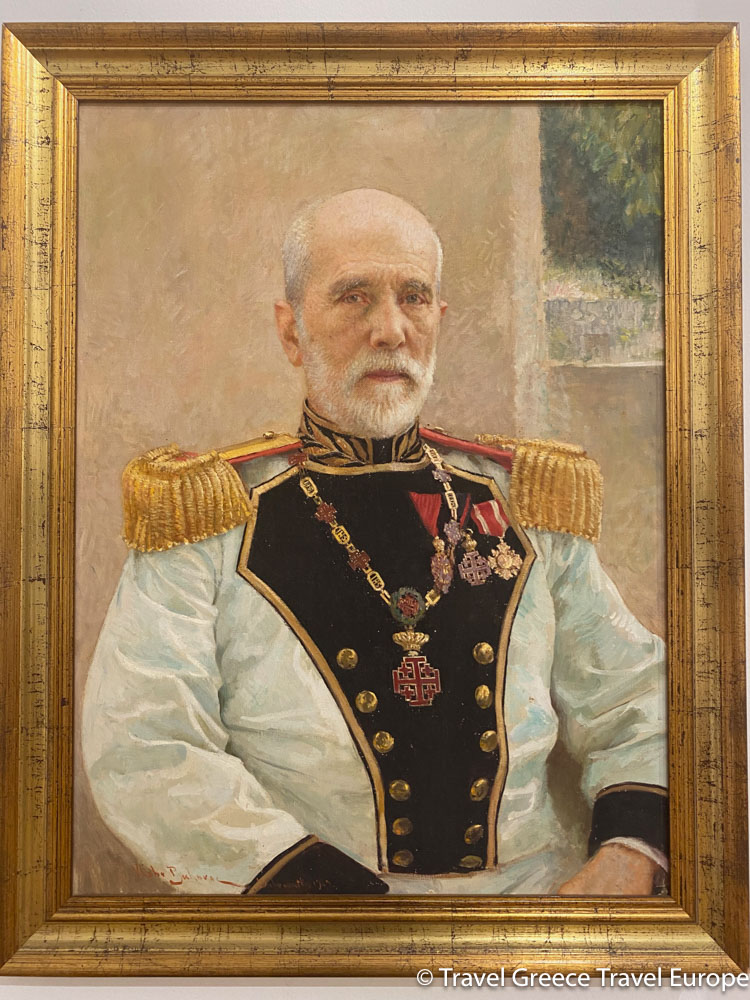
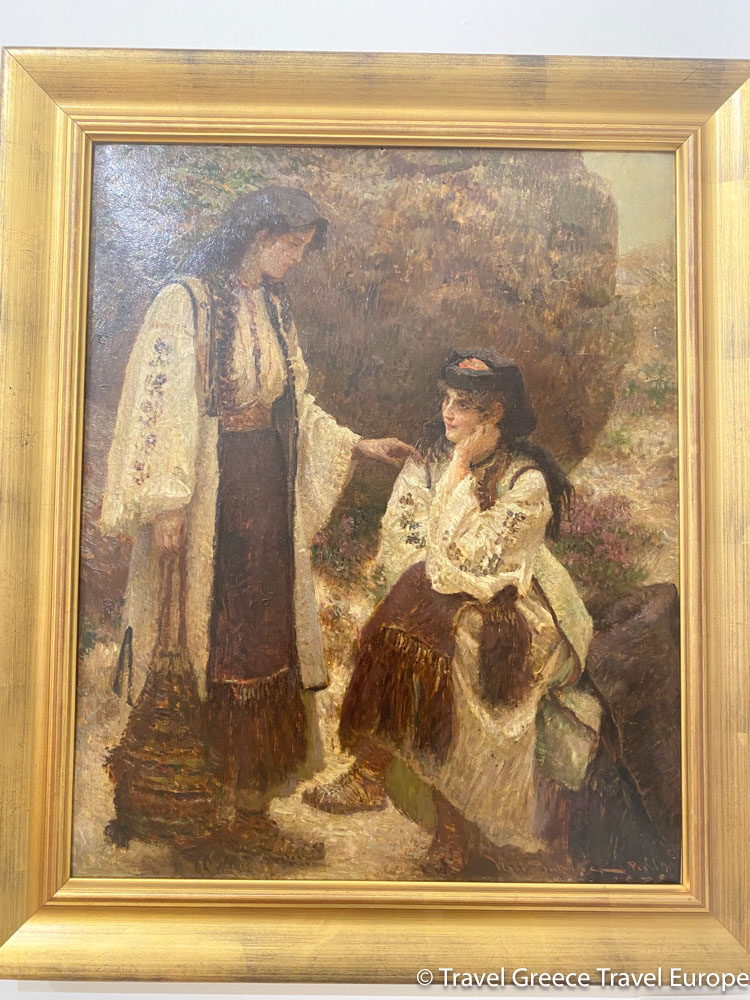
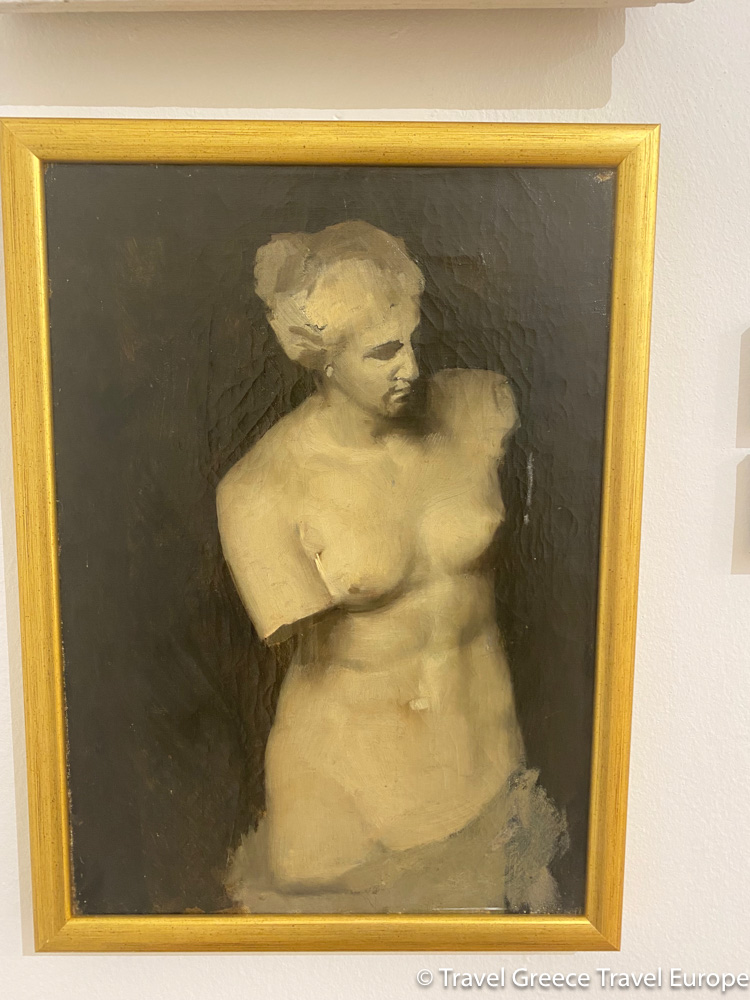
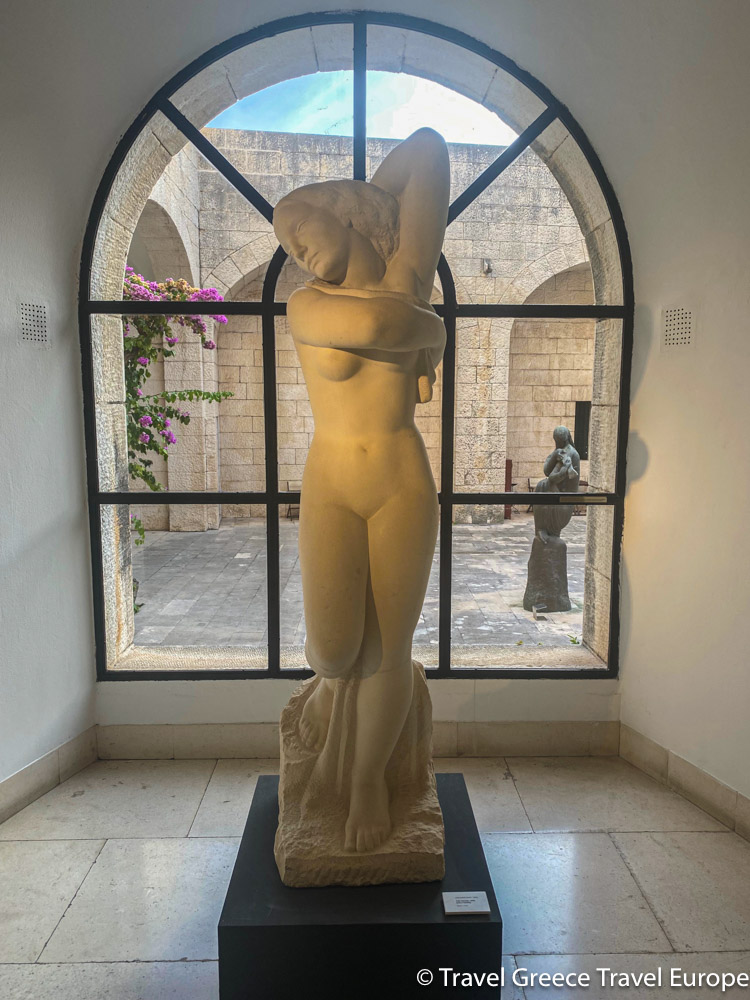
Highlights include a comprehensive modern art collection spanning from the late 19th century to the end of World War II, featuring artists with strong ties to the Dubrovnik region, and a contemporary art collection that encompasses sculpture, painting, prints, photographs, video works, and artistic installations, offering a broad overview of visual art from the post-war period to the present day.
Enjoy A Delightful Dinner at a Local Home
Dubrovnik Eat with Locals invites you into the warm and inviting home of hosts Marija and Zlatko for a dining experience that goes beyond the plate. For those who cherish delectable cuisine and seek a genuine connection with local traditions, an evening filled with authentic Croatian dishes and meaningful conversations awaits. This immersive culinary journey is designed for enthusiasts eager to dive deep into the heart of Dubrovnik’s culture through its flavors and stories shared around the table.
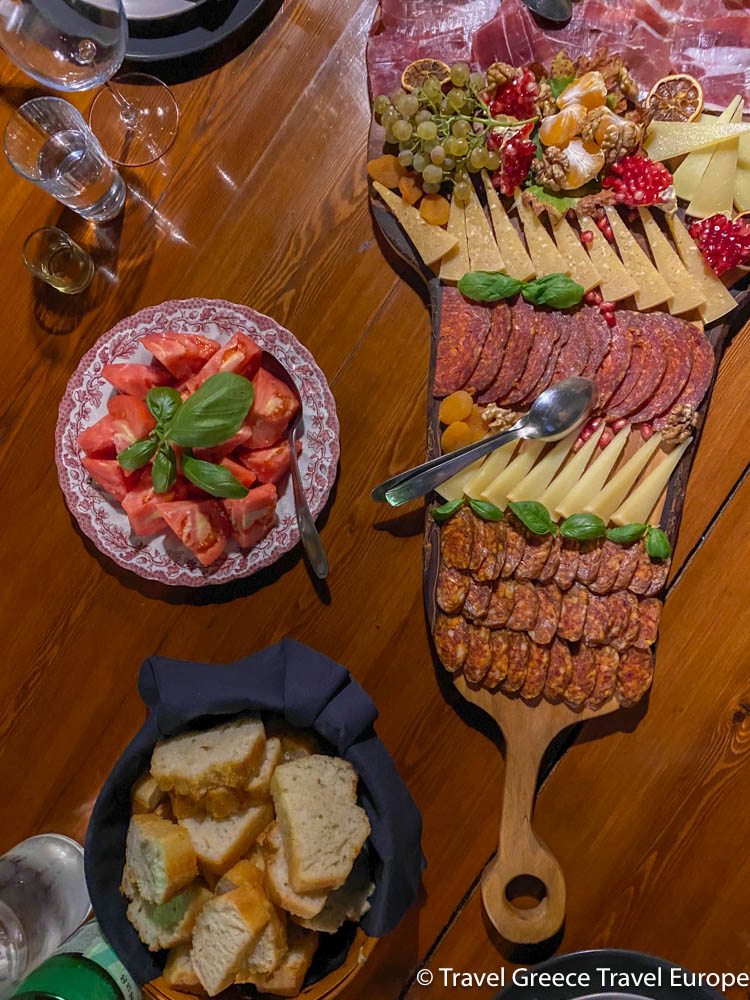
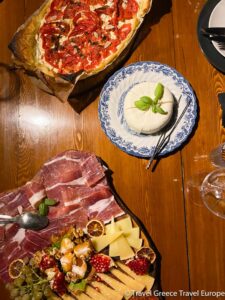
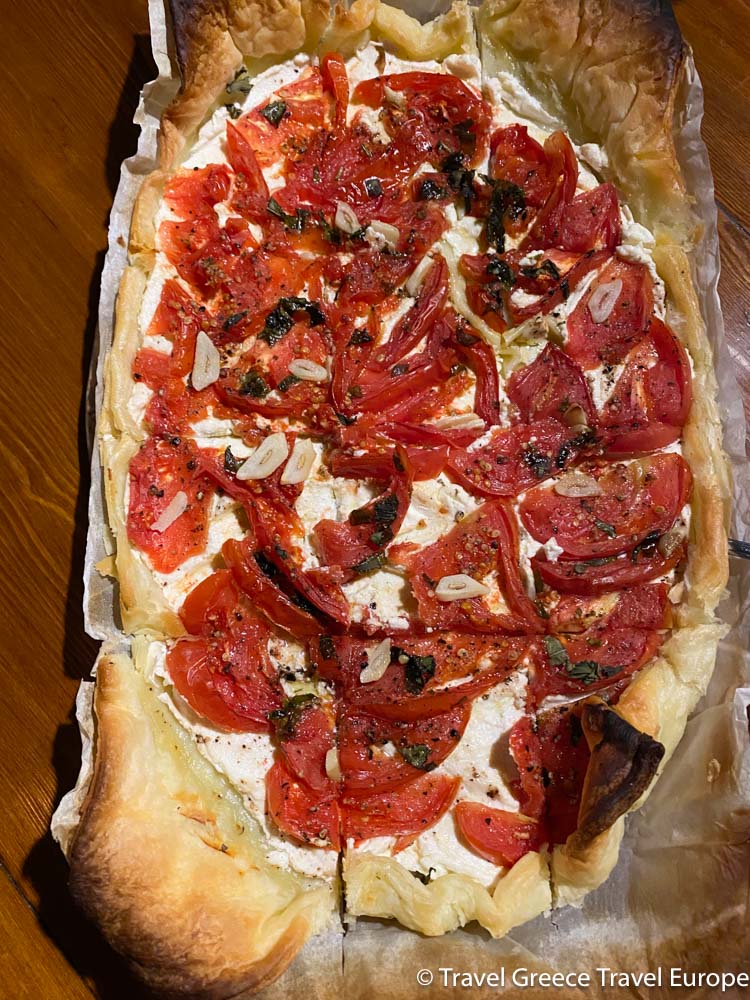
The cozy and green backyard setting, combined with the hosts’ graciousness, transforms a simple meal into a memorable cultural exchange. From the succulent Peka, slow-cooked to perfection (cooking time about 3 hours) by Zlatko (as you will see in the photos), to the delicious and beautifully presented charcuterie and the delightful homemade liqueurs, the experience is a culinary journey through Dubrovnik’s rich flavors and traditions.
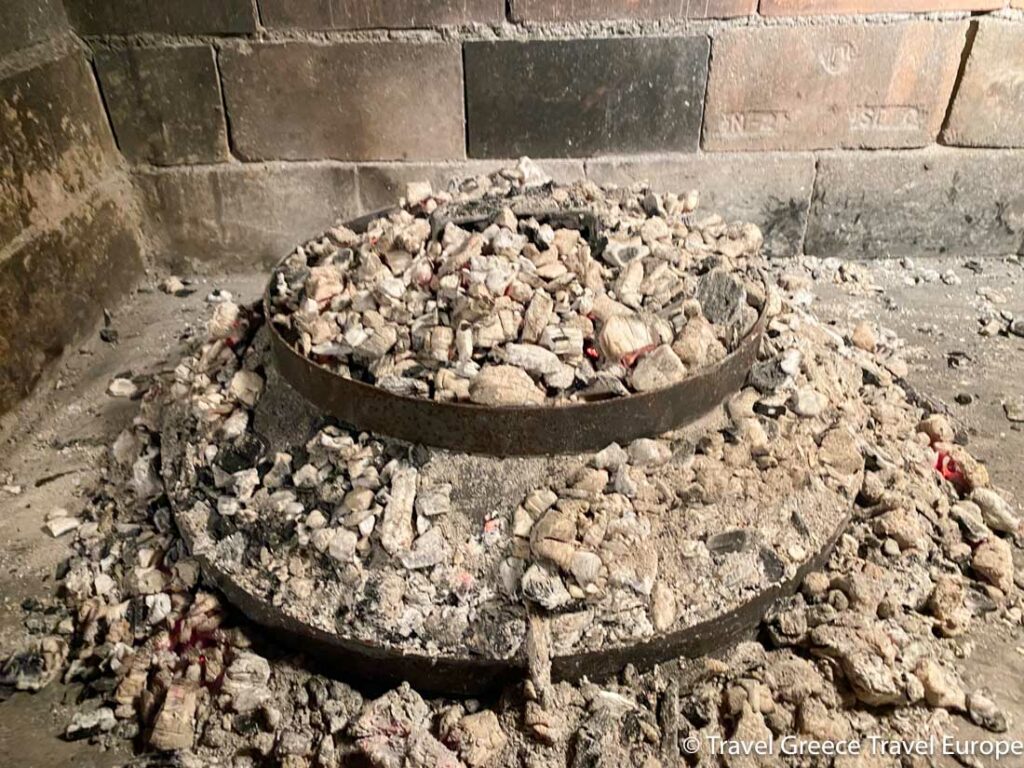
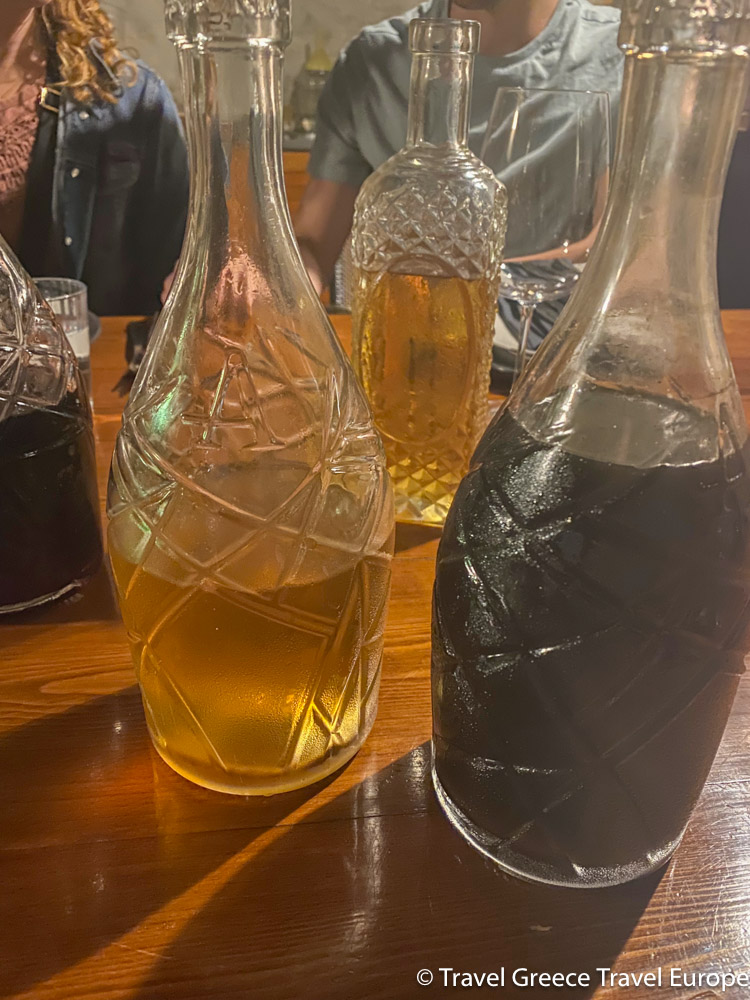
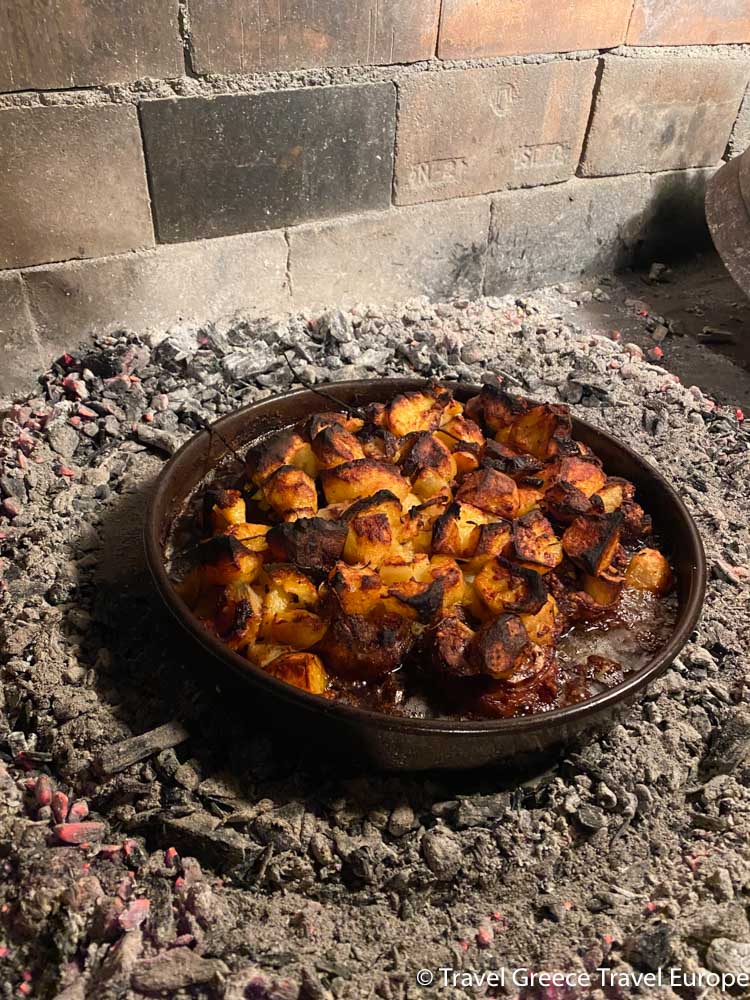
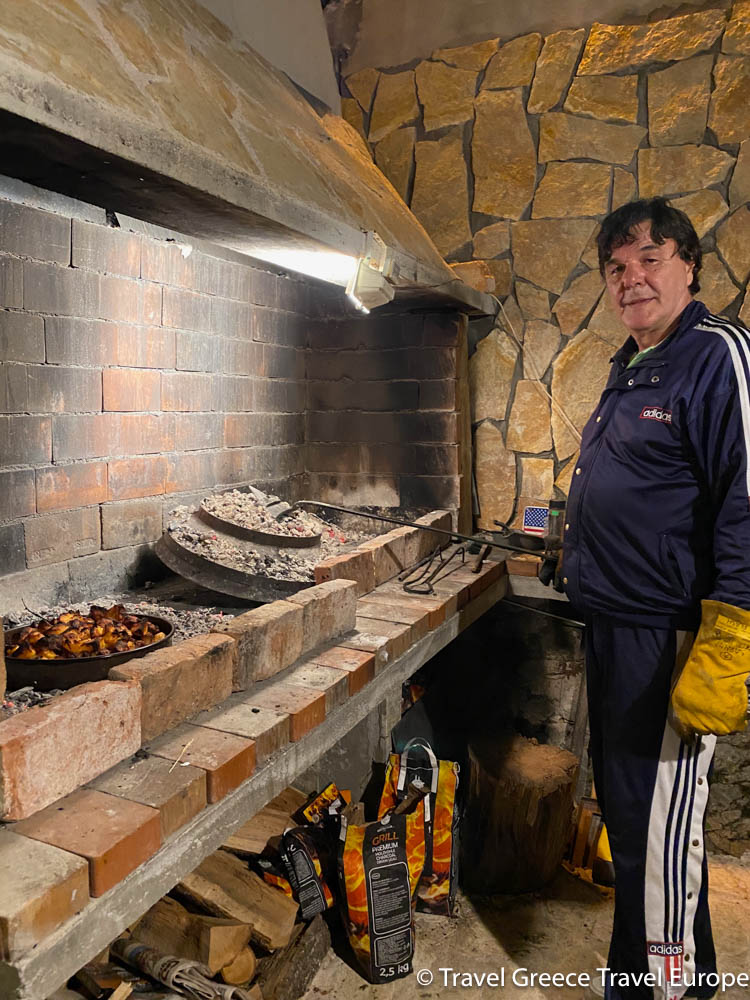
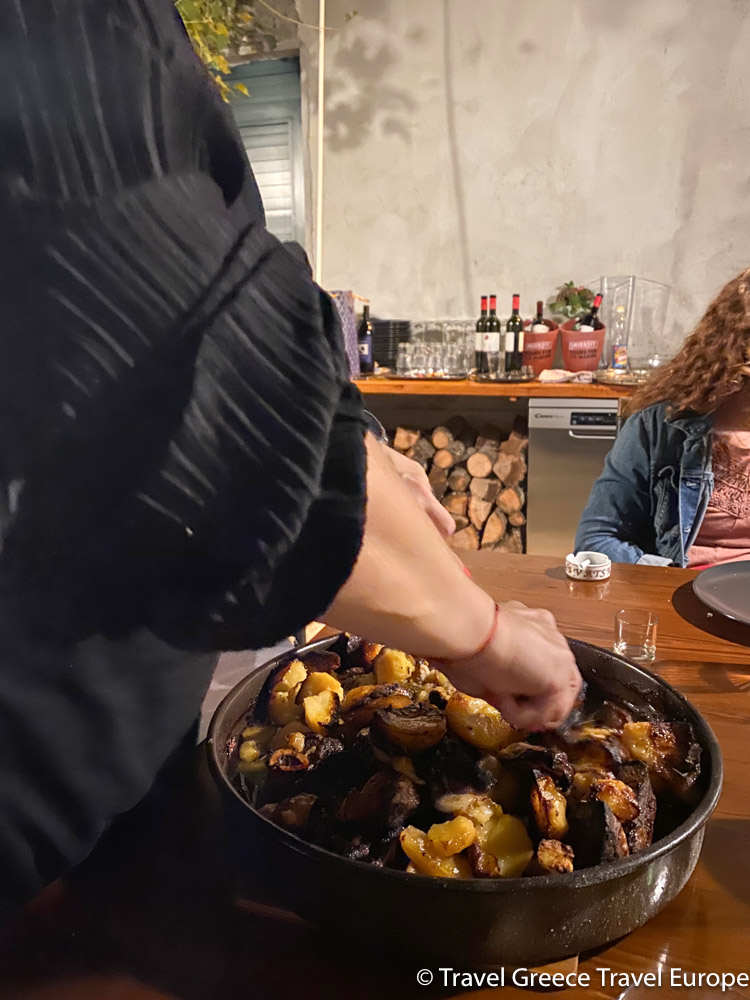
Guests leave not just with satisfied palates but with lasting memories of a city’s culture experienced through its food, drink, and the warmth of its people.
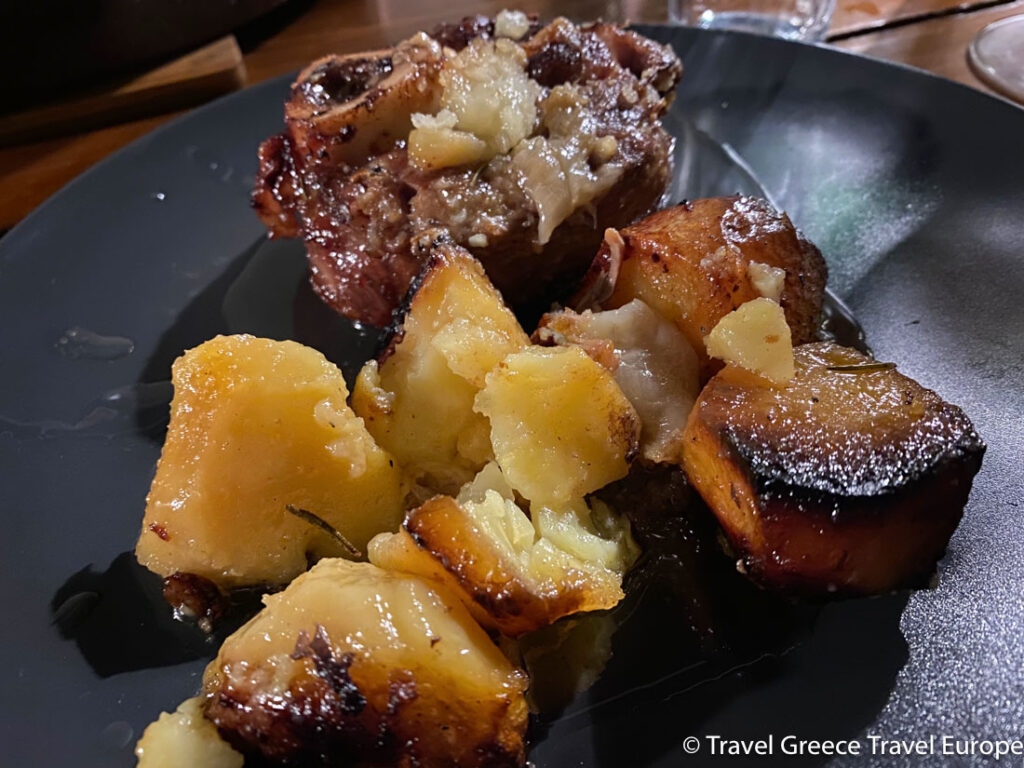
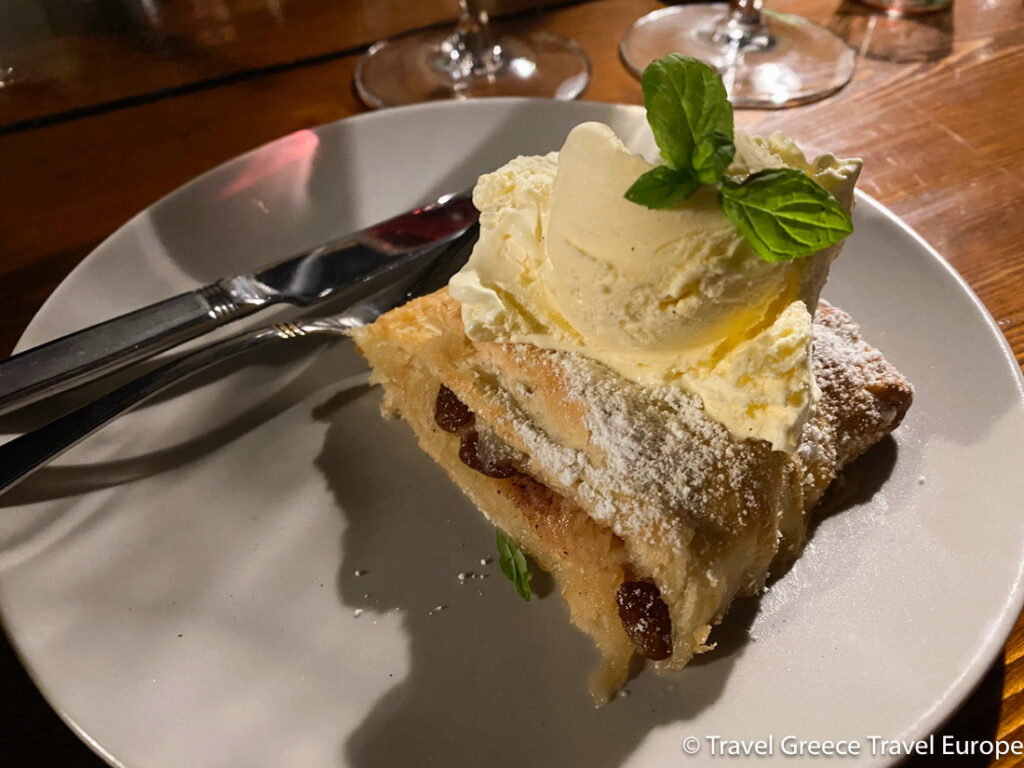
Day 3: Explore the Dubrovnik’s Surroundings
Morning: On your third day of the 4-days in Dubrovnik itinerary venture beyond the city to the Lokrum Island, a serene oasis located a mere 600 meters from Dubrovnik’s historic Old Town, which is an easily accessible and popular destination for visitors seeking nature, history, and tranquility. Here’s a detailed guide on how to reach this enchanting island:

By Ferry:
The most common and convenient way to reach Lokrum Island is by ferry. The ferry service operates from the Old Port of Dubrovnik, located just a short walk from the Ploče Gate, one of the main entrances to the Old Town.
- Departure Point: The ferry to Lokrum departs from the small pier at the Old Port, easily recognizable by the signs and usually a queue of people waiting to board.
- Schedule: Ferries run frequently during the tourist season, typically starting from early morning until late afternoon, with departures every half hour or hour. It’s advisable to check the current schedule as it can vary depending on the time of year.
- Journey Time: The ferry ride to Lokrum Island takes approximately 14-15 minutes, offering beautiful views of Dubrovnik’s walls and the Adriatic Sea along the way.
- Tickets: Tickets can be purchased at the booth near the departure point. The ticket price usually includes the return trip and entrance to the Lokrum Island Nature Reserve. Prices may vary, so it’s recommended to check the latest information. Tickets are at 7 Euros per way (prices may change).
| Tip
Admire the beauty of Dubrovnik’s ancient City Walls from the water and have free time to explore Lokrum islandwith this boat tour. Go swimming and snorkeling at St. Jacobs Beach and Betina cave.
What to Do Upon Arrival:
Once you arrive at Lokrum, you’ll find a variety of attractions and activities to explore:
- Botanical Garden: Home to exotic plants and trees from around the world. (Forestry reserve protected by Unesco)
- The Dead Sea: A small salt-filled lake perfect for a relaxing swim.
- Fort Royal Castle: Offers panoramic views of Dubrovnik and the surrounding sea.
- Monastery and Museum: Learn about the island’s rich history and legends.
- Peacocks and Rabbits: The island is known for its friendly wildlife, including peacocks and rabbits that roam freely.
Tips for Visiting Lokrum Island:
- Wear Comfortable Shoes: Exploring the island involves some walking, often on uneven paths, so comfortable footwear is recommended.
- Respect the Nature Reserve: Lokrum is a protected nature reserve. Visitors are encouraged to respect the environment, stick to marked paths, and not disturb the wildlife.
Afternoon: Return to the mainland and seek the tranquility of Dubrovnik’s beaches. Whether it’s the secluded coves of Betina or the vibrant pulse of Banje Beach, let the Adriatic’s cool embrace refresh your spirit. Or explore the area surrounding Cavtat (20 minutes drive from Dubrovnik Old Town)
Looking for a car in Dubrovnik?
Rentalcars can help you find affordable options for your road trip
Lunch at the Konavoski Dvore Eco Green Restaurant
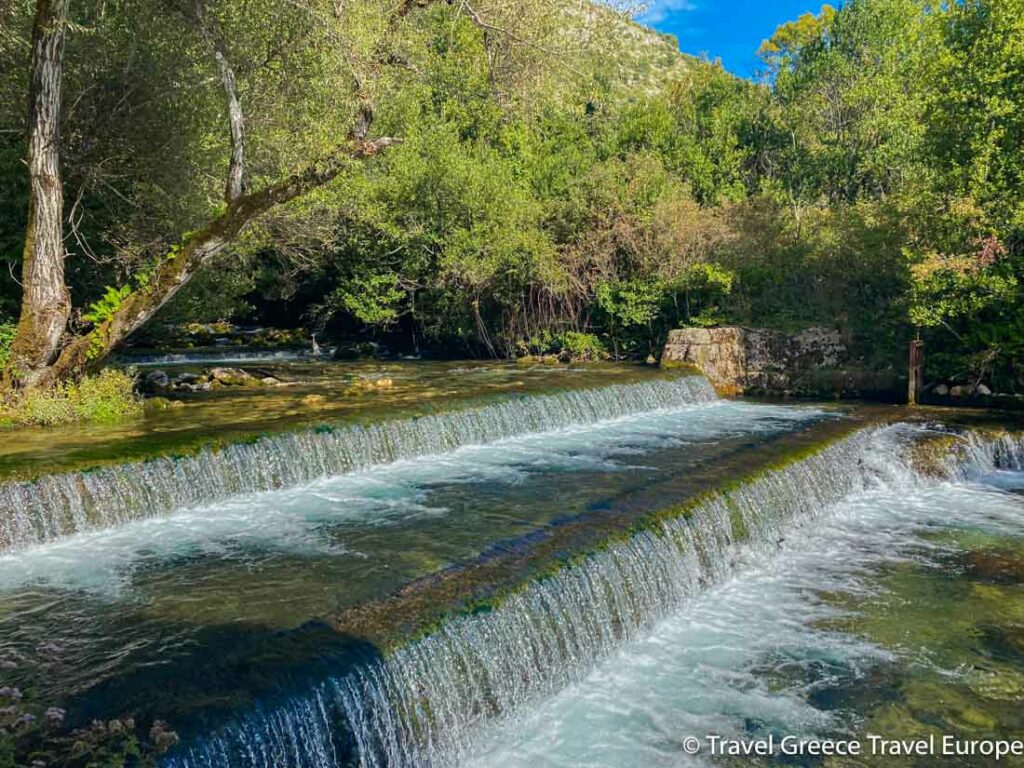
Konavoski Dvori Eco Green Restaurant, nestled in the picturesque Konavle region near Dubrovnik, offers a unique dining experience that marries the tranquility of the Ljuta river with the rich culinary traditions of Croatia. This esteemed restaurant, celebrated for its traditional dishes from all Croatian regions, is a favorite among both locals and visitors. Highlights include the high-class prosciutto, cheese in olive oil, lamb and veal baked under a baking bell (peka/sače), home-made bread, and grilled trout, all prepared with ingredients sourced from the Dubrovnik area.
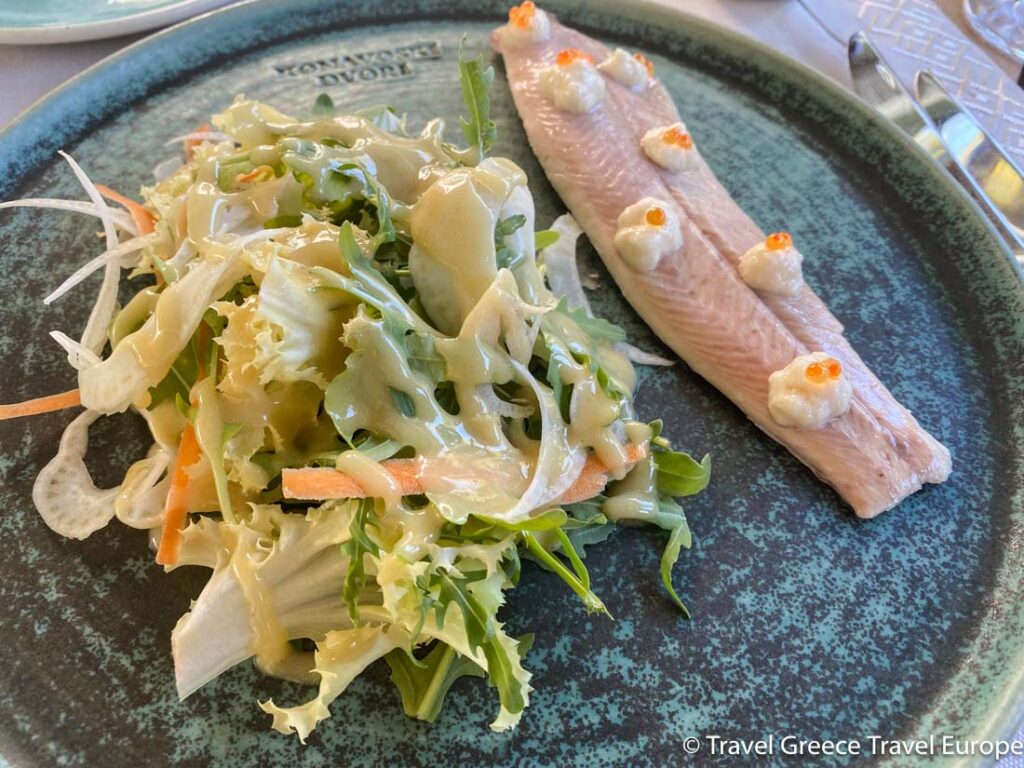
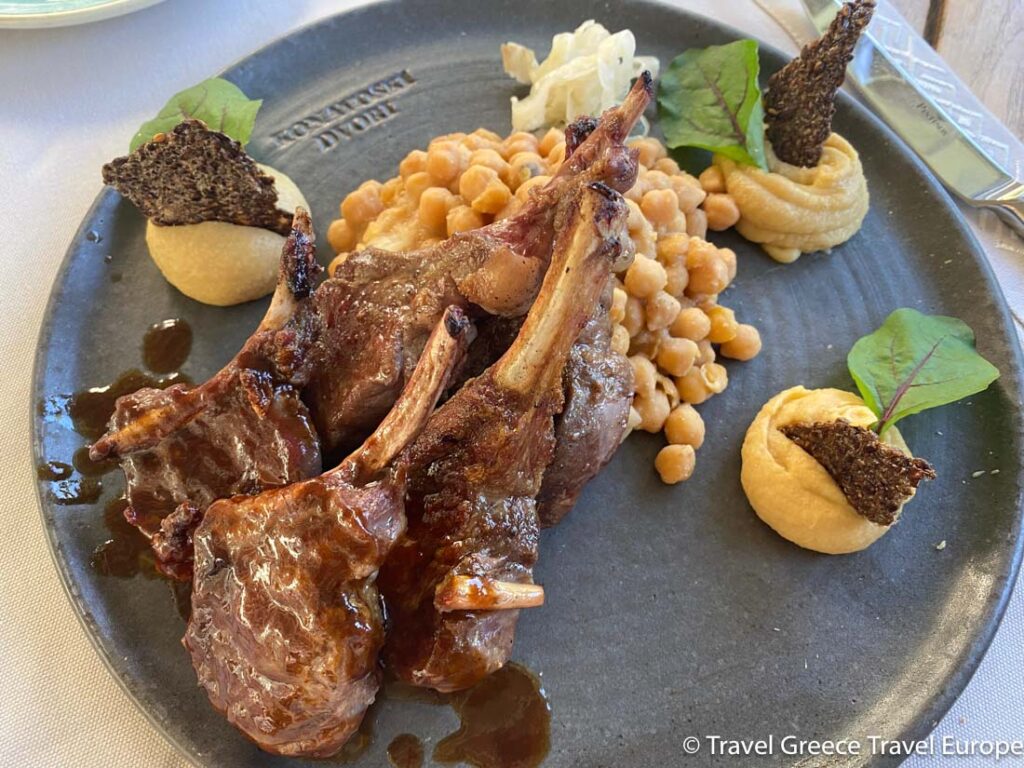
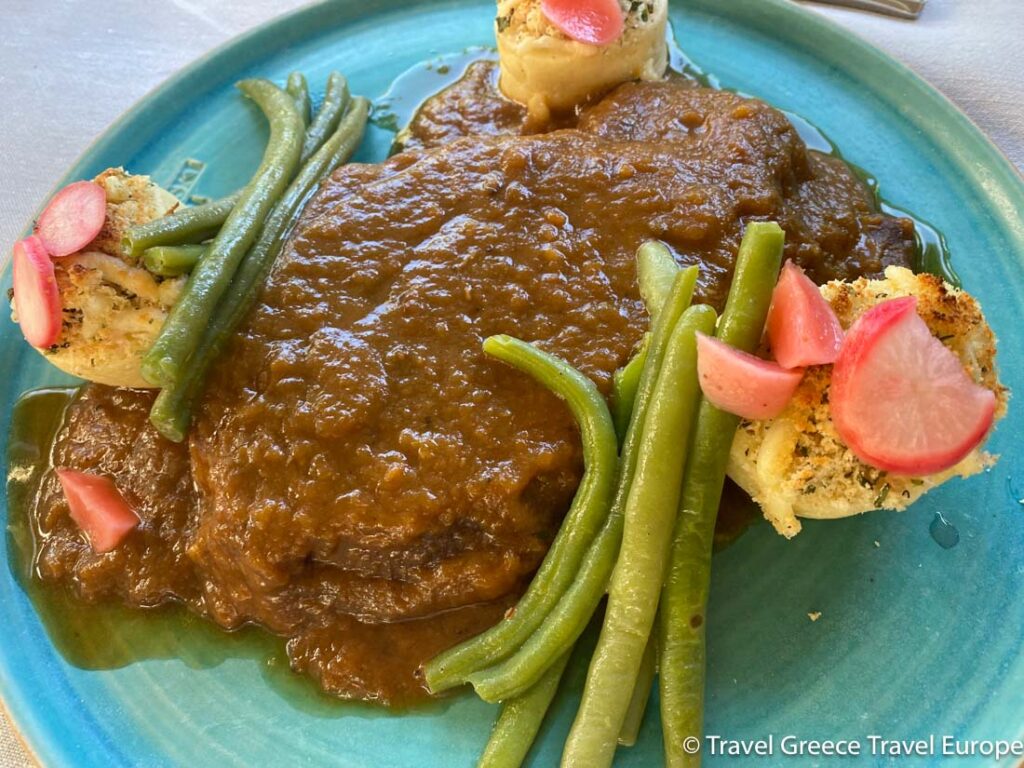
The setting, amidst old water mills and under the shade of centennial plane trees, provides a cool retreat during the hot summer months, making every meal a moment to remember. With its commitment to eco-friendly practices, traditional folk attire worn by the staff, and the serene backdrop of the Ljuta’s jubilant stream, Konavoski Dvori is not just a meal but an immersive journey into the heart of Croatian heritage.
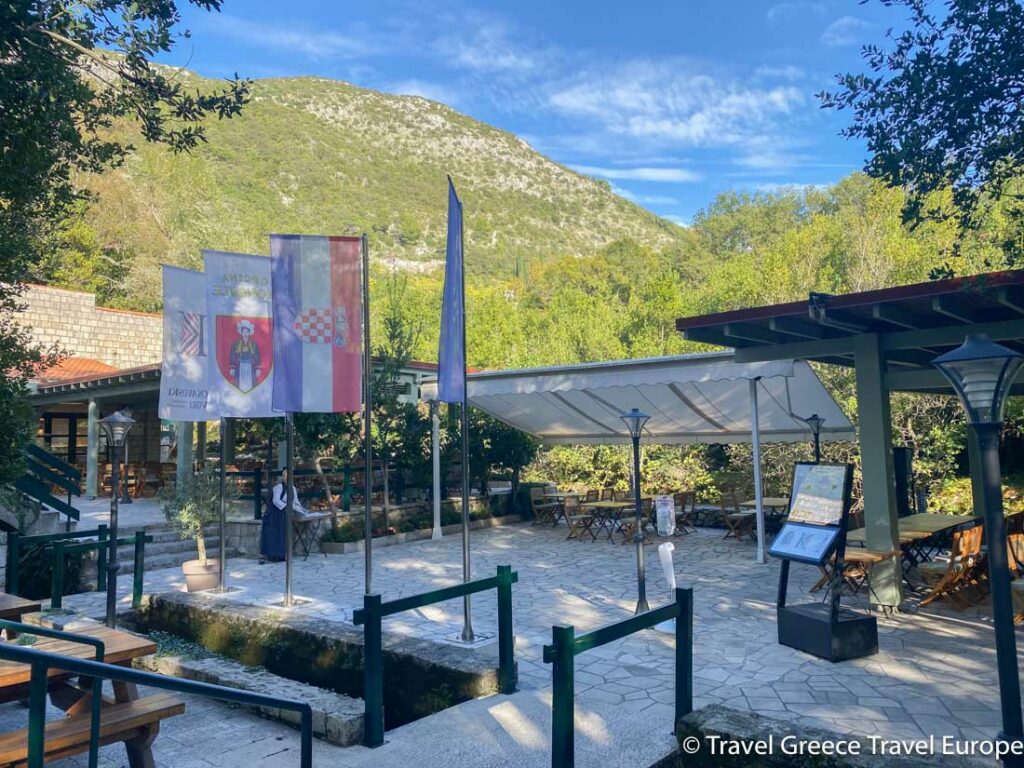
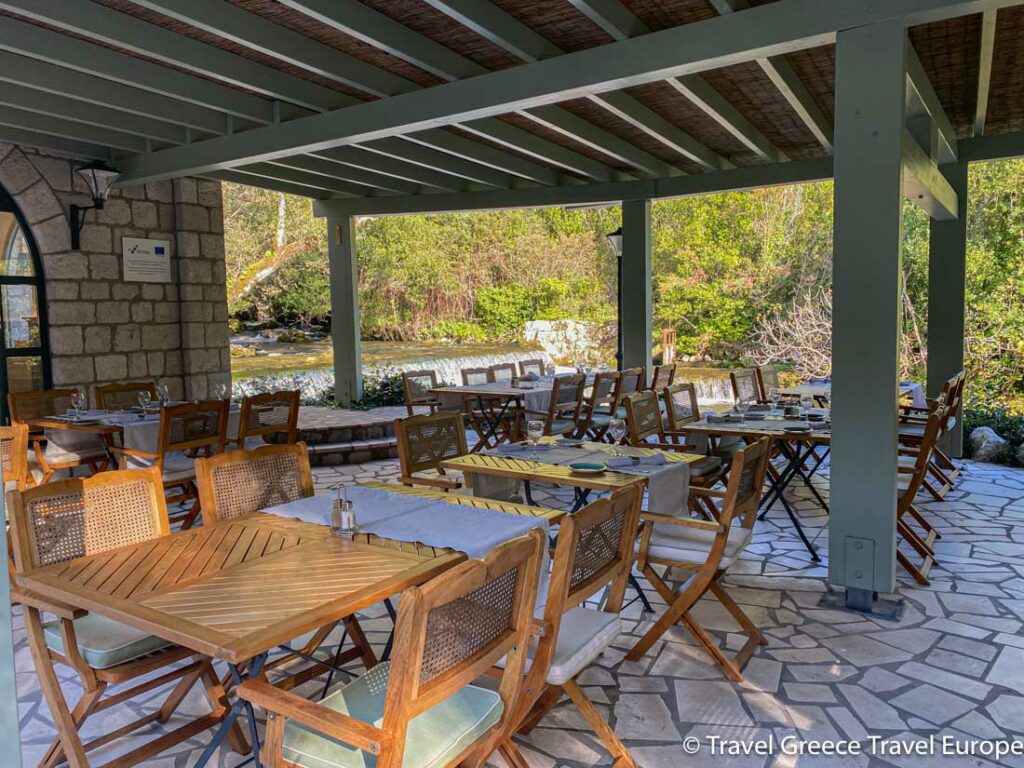
Explore the Charming Cavtat with a stunning waterfront reminiscent of Saint Tropez
Cavtat emerges as a hidden gem nestled between the enchanting city of Dubrovnik and the lush Konavle region, often likened to the Croatian Tuscany for its scenic beauty and cultural richness. This picturesque town, celebrated for its serene ambiance and stunning waterfront reminiscent of Saint Tropez, offers a perfect blend of relaxation and exploration.
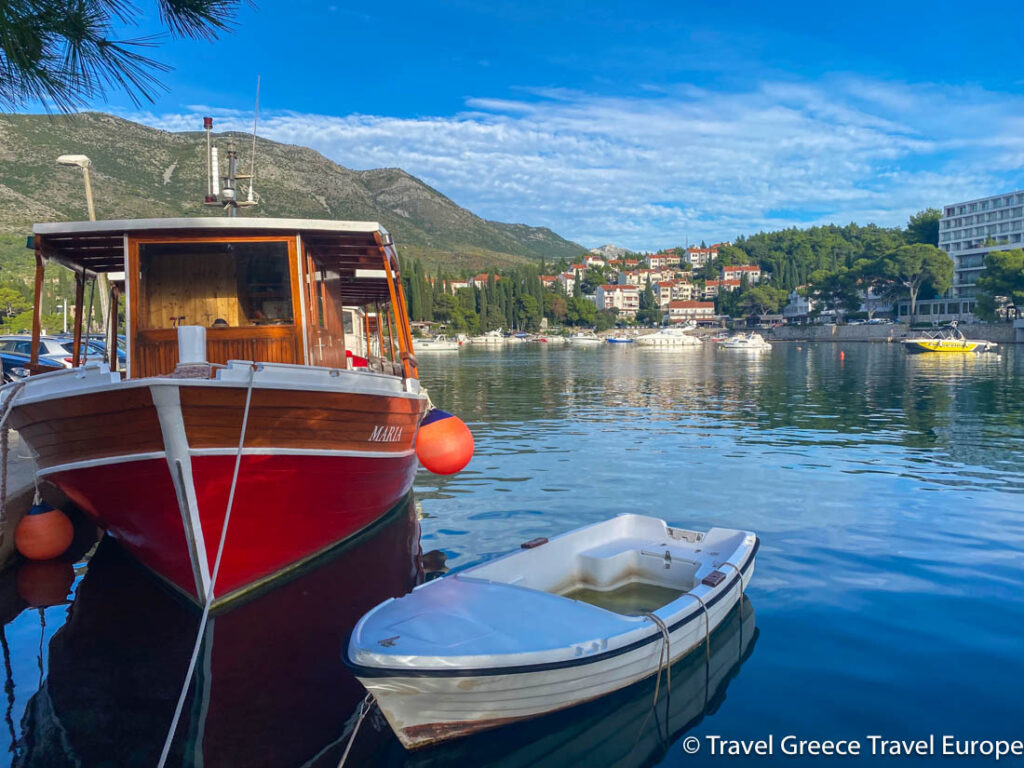
Visitors to Cavtat can indulge in a variety of activities, from leisurely strolls along palm-lined promenades to engaging in outdoor adventures like cycling, hiking, and horse-back riding.
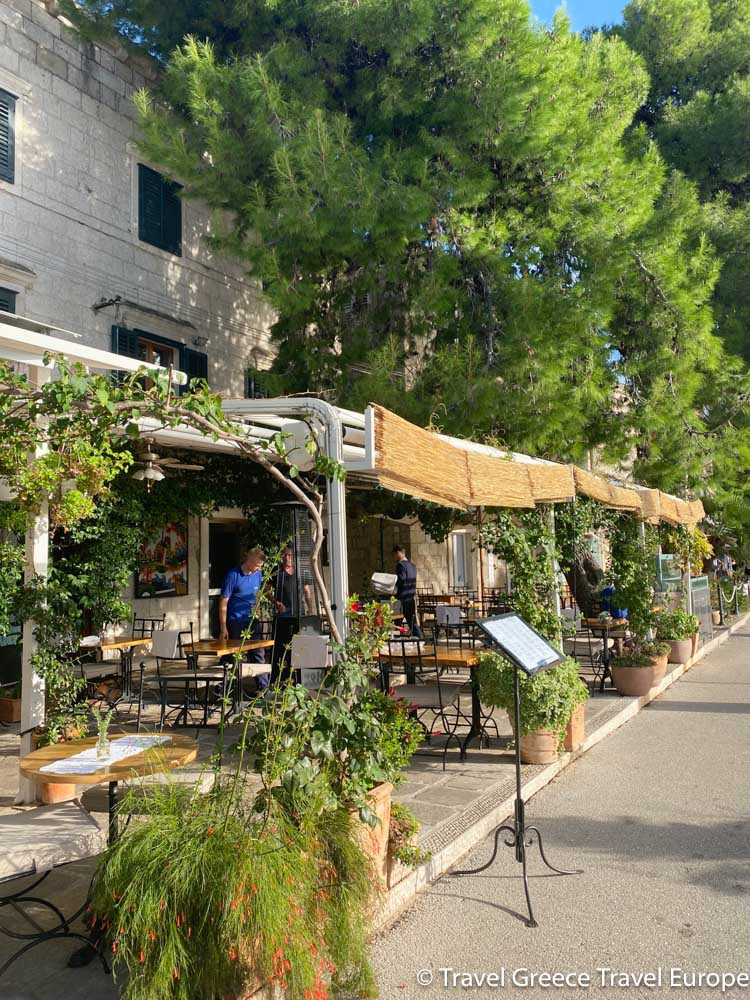
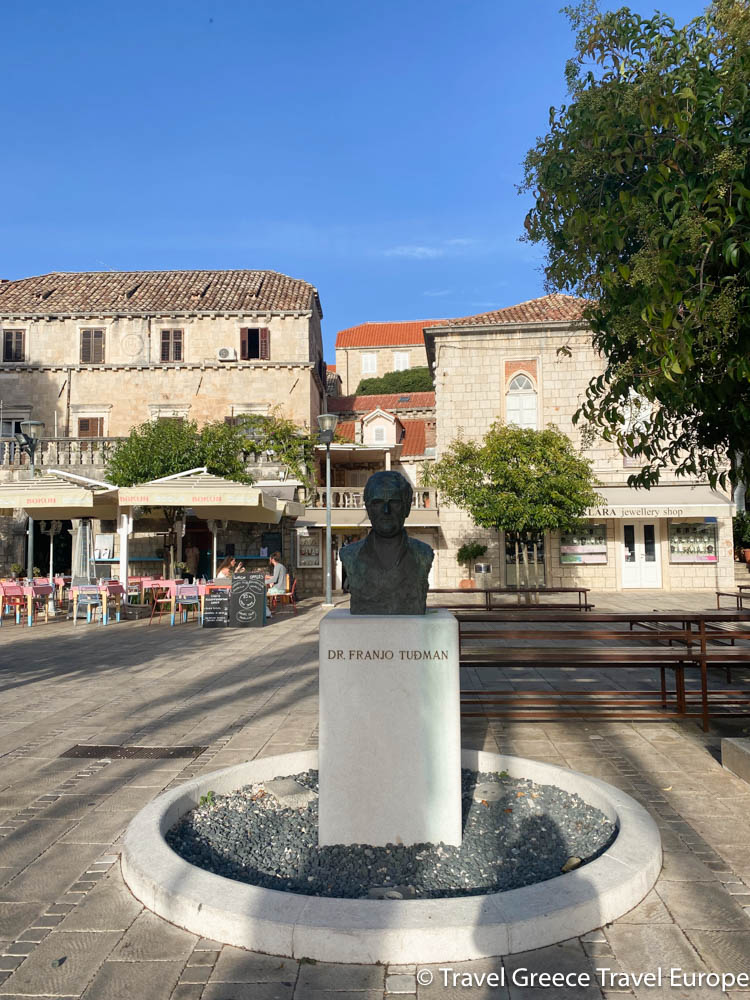
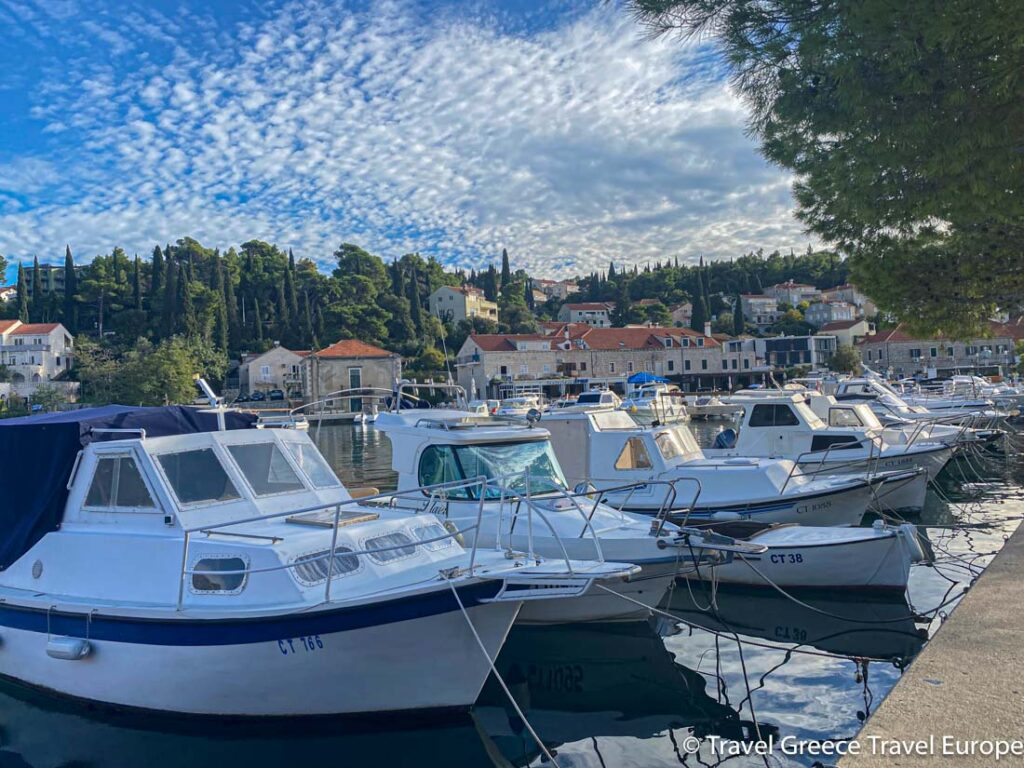
The town’s culinary scene is a highlight, with restaurants and taverns serving Mediterranean delicacies alongside exquisite local wines, against the backdrop of breathtaking landscapes. Cavtat’s proximity to Dubrovnik allows for easy exploration of the UNESCO World Heritage site, while its own offerings of walking trails, wine tasting tours, and a rich historical and cultural heritage make it an irresistible destination for those seeking both tranquility and adventure.
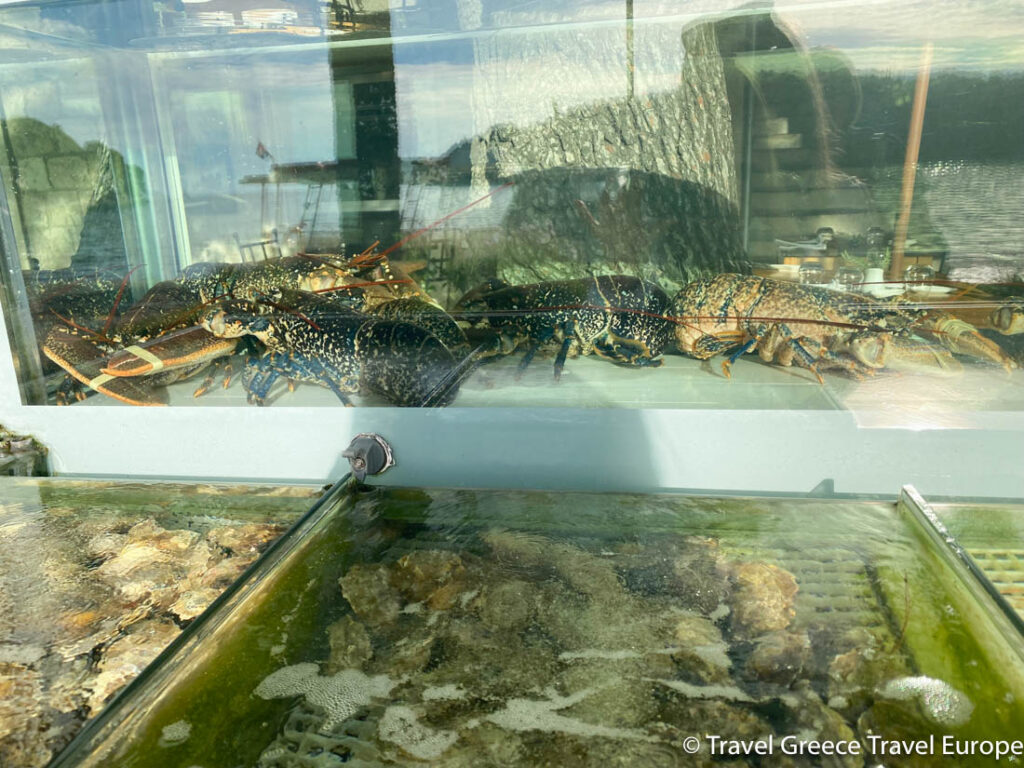
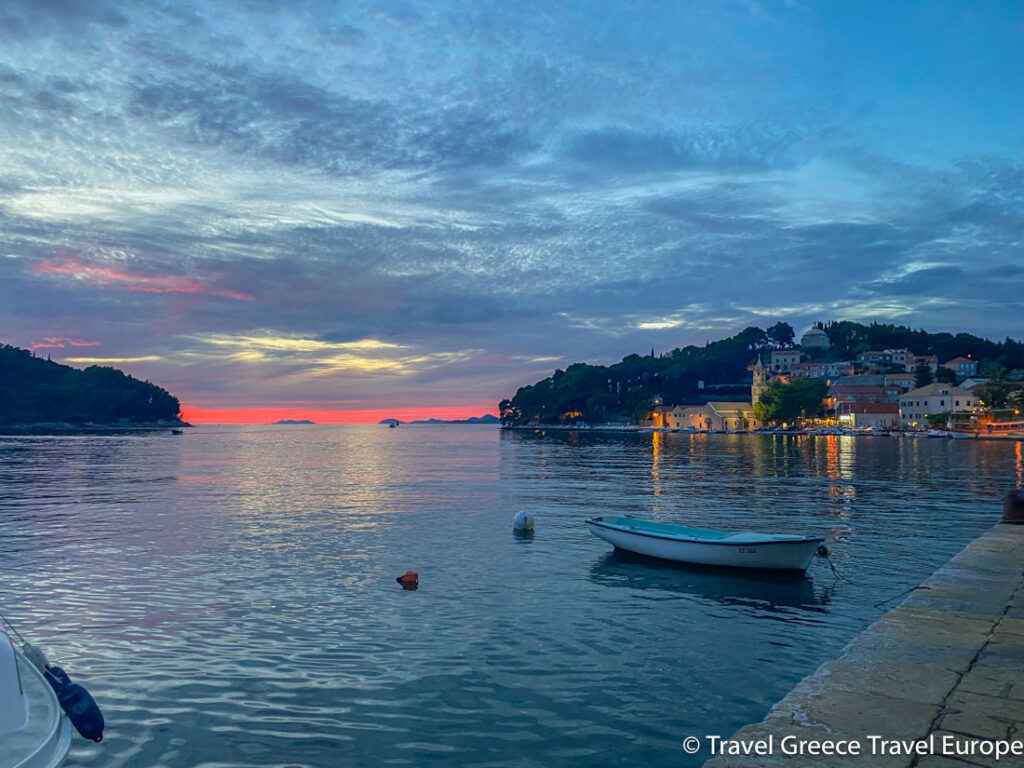
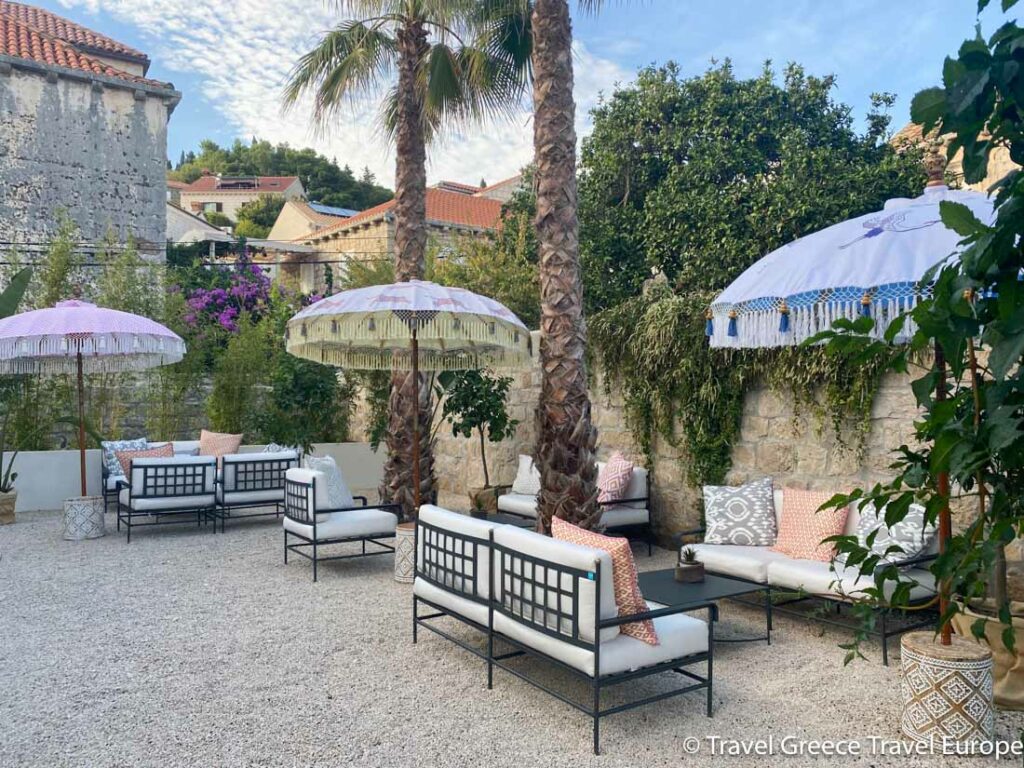
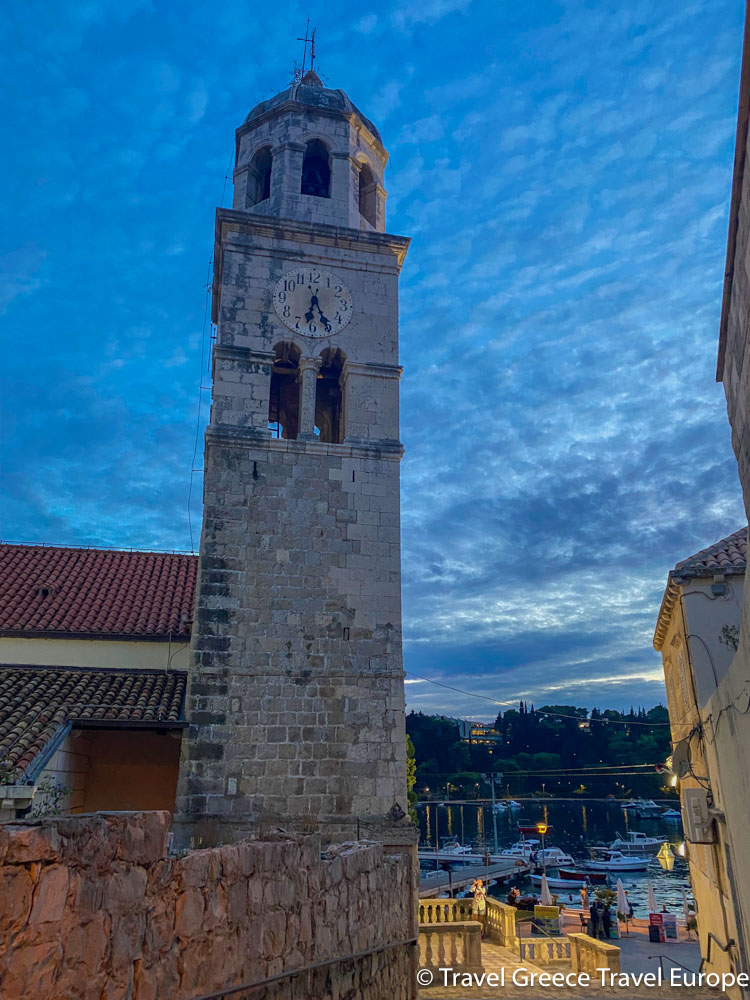
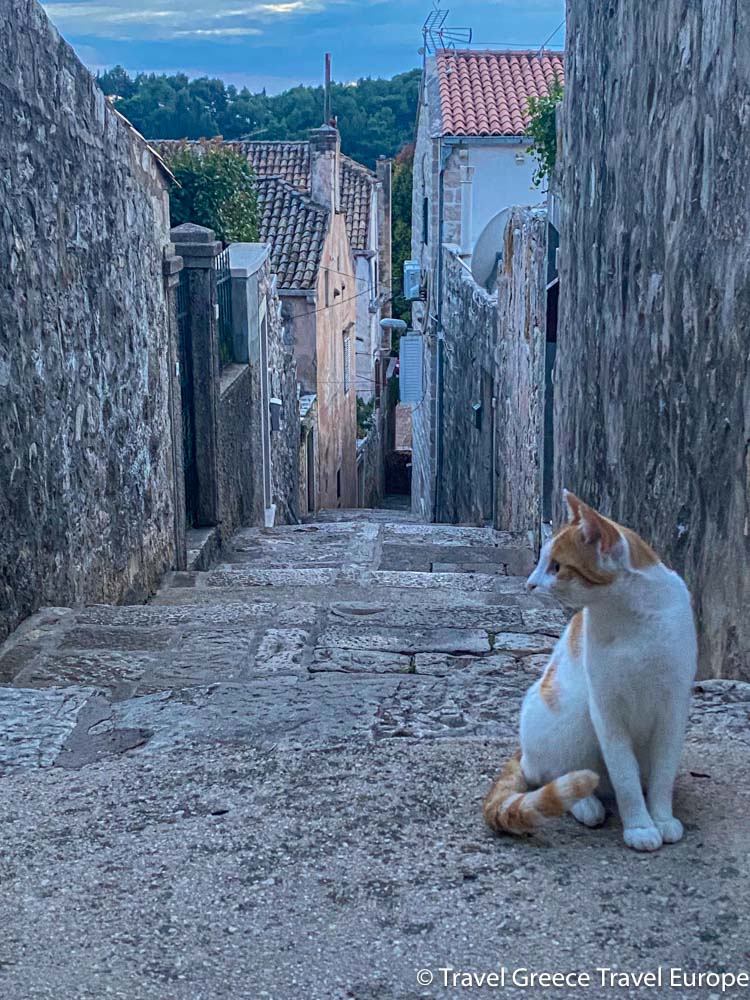
Tip: Walk up to the Saint Rocco Cemetery, perched on the highest point of the Rat Peninsula, above the urban centre of Cavtat from here you can admire the view of the whole town.
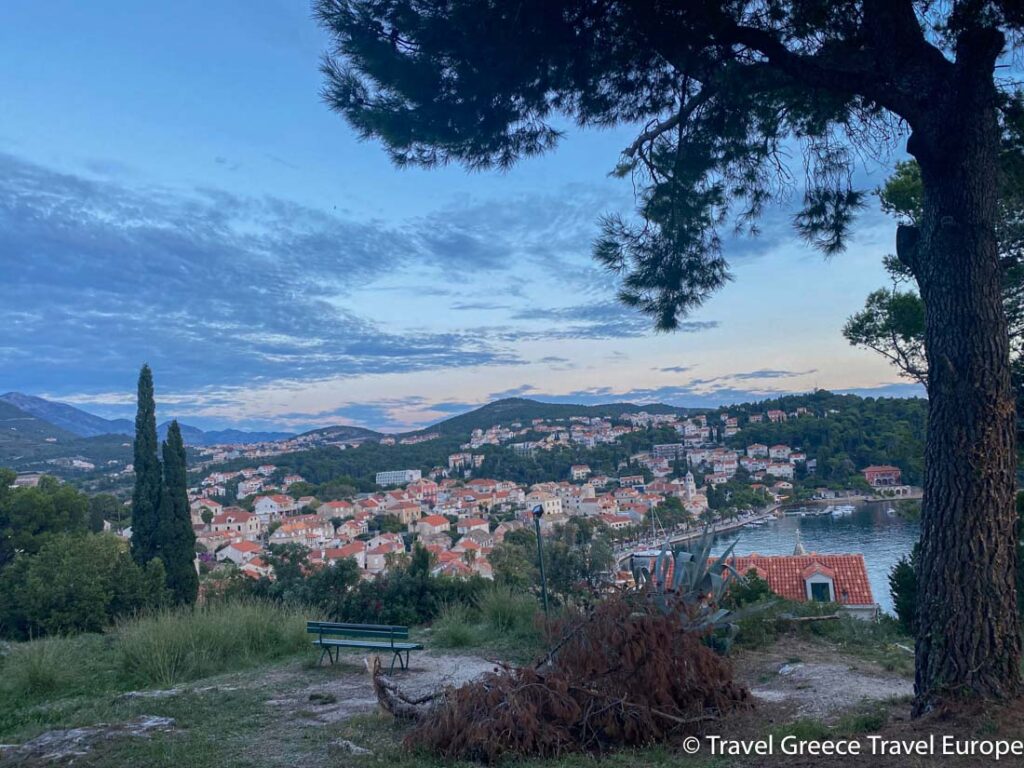
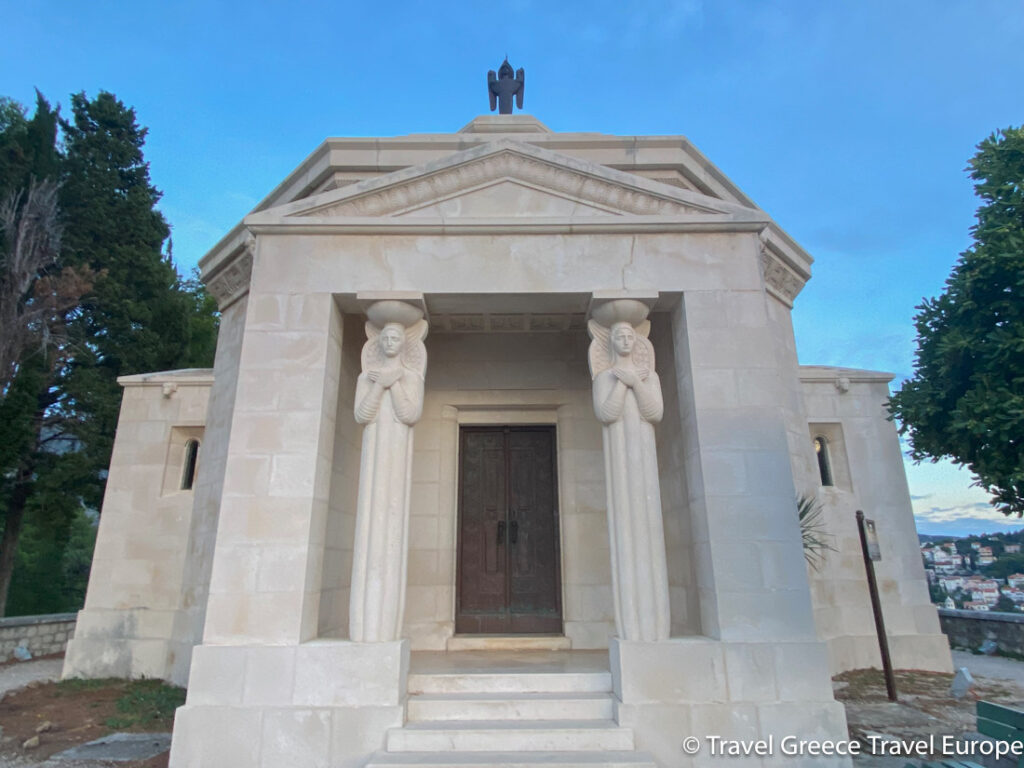
Day 4: Try the world-famous oysters & Spend the Event Eating your way around dubrovnik’s old town
Croatian oysters from Ston, specifically the European flat oyster (Ostrea edulis), are celebrated as some of the finest and most flavorful oysters in the world. The small town of Ston, located on the Pelješac Peninsula near Dubrovnik, is renowned for its ideal oyster-farming conditions, thanks to the clean, nutrient-rich waters of the Mali Ston Bay. This unique environment, combined with traditional farming methods passed down through generations, contributes to the distinctive taste and high quality of Ston oysters.
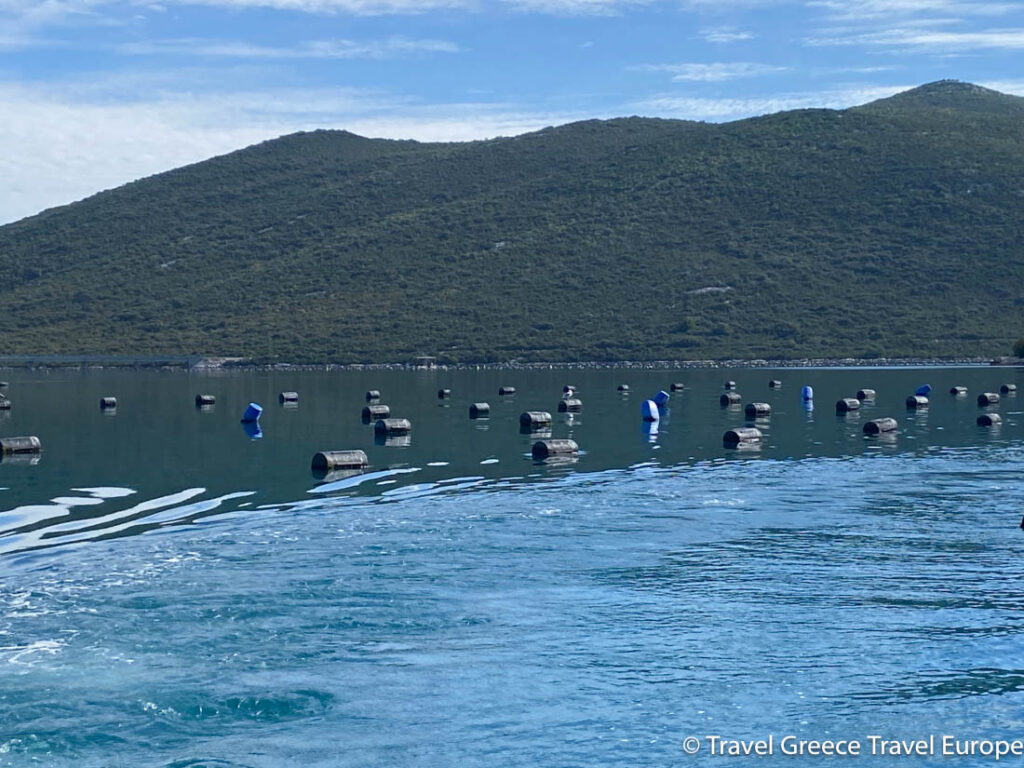
Historical Significance of the oyster cultivation in croatia
The tradition of oyster cultivation in Ston dates back to Roman times, making it a deeply rooted aspect of the local culture and economy. The Romans recognized the area’s potential for shellfish cultivation and left behind a legacy that has flourished over the centuries. Today, Ston’s oyster farming is a blend of ancient techniques and modern sustainable practices, ensuring the preservation of both the oysters and their natural habitat.
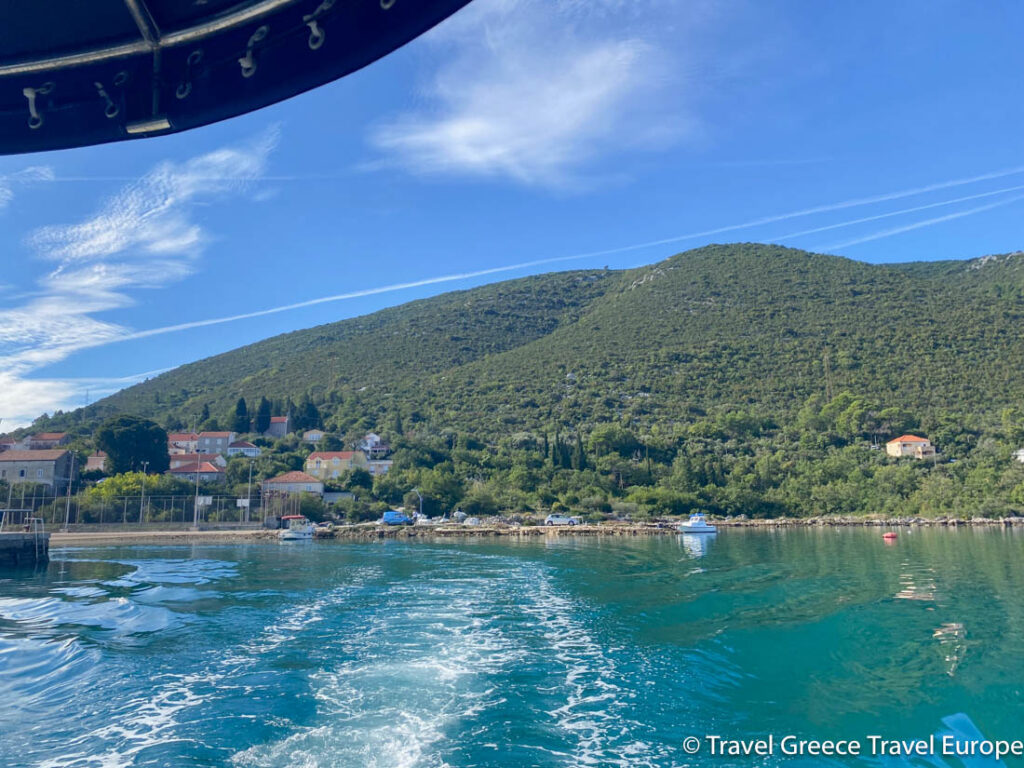
Culinary Delight
Ston oysters are prized for their rich, creamy texture and a perfect balance of sweetness and brininess, reflecting the purity of the Adriatic Sea. They are often served raw, simply opened and drizzled with a few drops of lemon juice to enhance their natural flavors. This simplicity allows the oysters’ freshness and quality to shine, making them a must-try delicacy for seafood lovers.
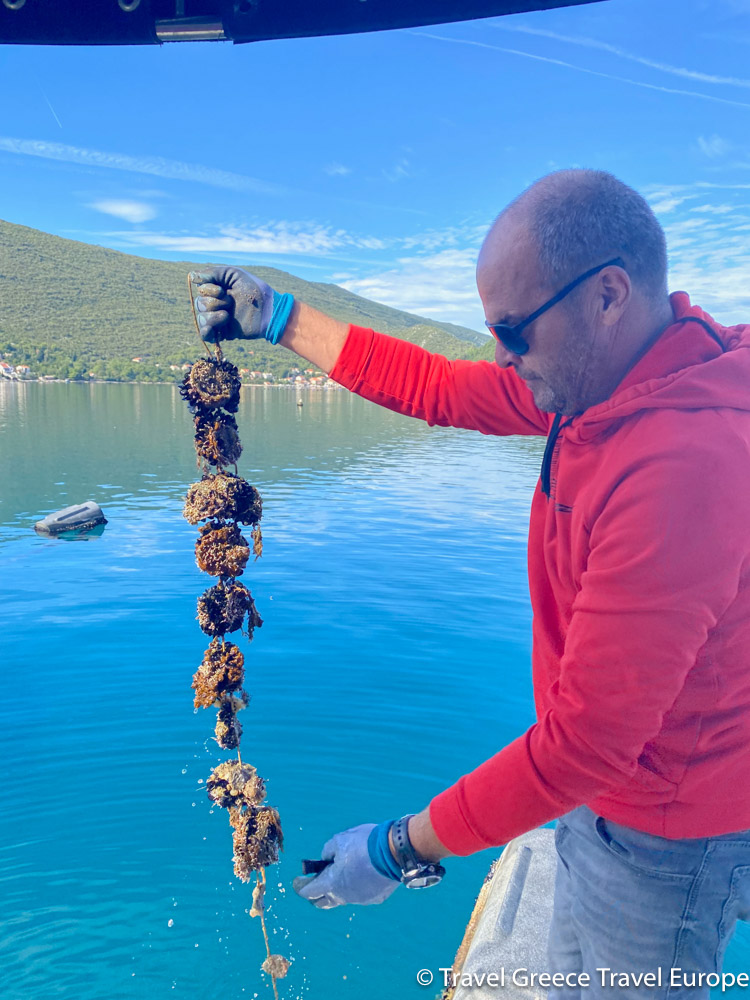
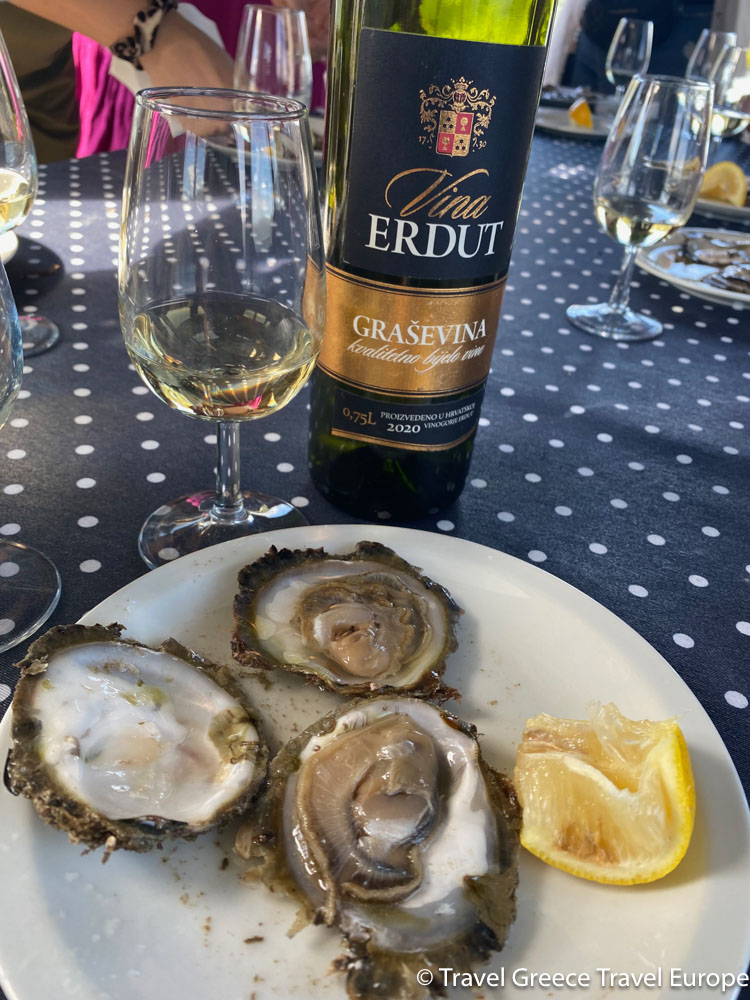
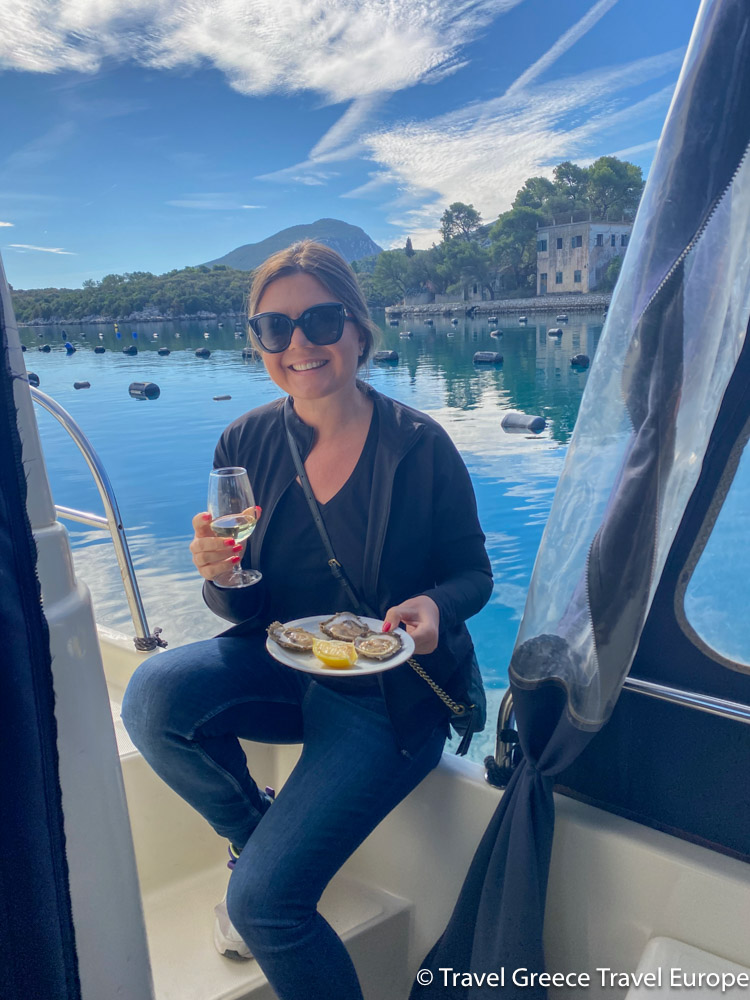
I took a Half Day Tour from Dubrovnik with Dubrovnik Wine Tours , founded by Mario Sehic AIWS, WSET Certified Wine Educator and Diploma holder, and actually after this tour I was inspired to embark on the WSET course. I currently hold WSET Level 1 and plan to continue my studies in the near future.
Following a fantastic introduction to Croatia’s prized oysters we visited Vukas winery to try Croatia’s staple wines.
Winery Vukas Experience
Winery Vukas, nestled in the picturesque landscape between Ston and Ponikve on the historic “Napoleon way,” offers a breathtaking experience that harmoniously blends the beauty of Croatia’s natural scenery with the rich tradition of winemaking. As you ascend the hill, you are greeted by stunning views of ancient walls and the expansive blue sea stretching towards the island of Mljet, culminating in a vista of meticulously arranged stone terraces prepared for the cultivation of Plavac Mali, the region’s prized grape variety.
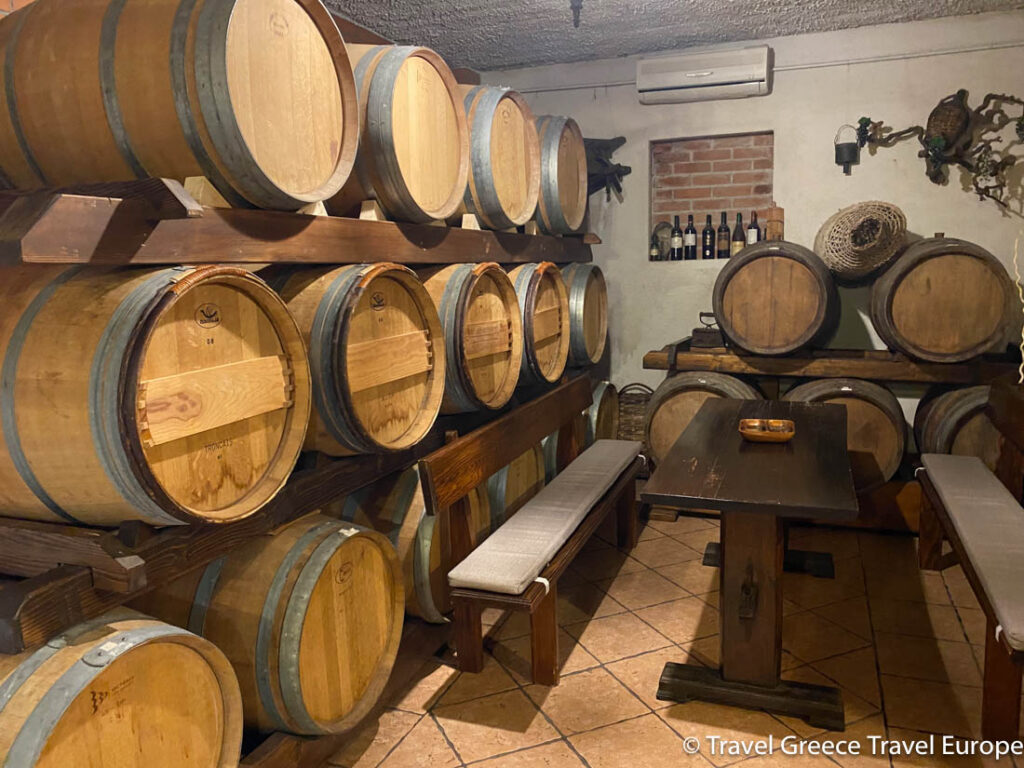
The winery boasts a selection of wines that showcase the depth and quality of Croatian viticulture. During our tasting we tried the Cuvée Blanc 2021, a cuvee of the three most prominent grape varieties (Dubrovnik Malvasia, Pošip and Rukatac), the white Pošip, the Mato 2019, a top-quality red wine that exemplifies the best of Plavac Mali; and the Plerej 2018, a premium red wine that stands as a testament to the winery’s commitment to excellence.
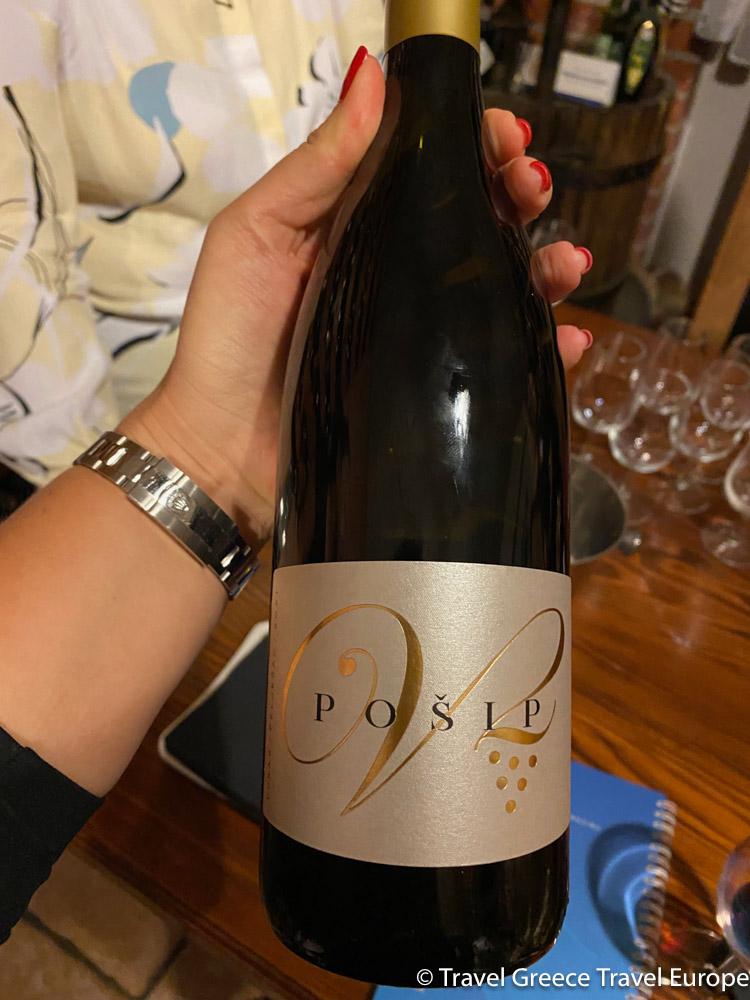
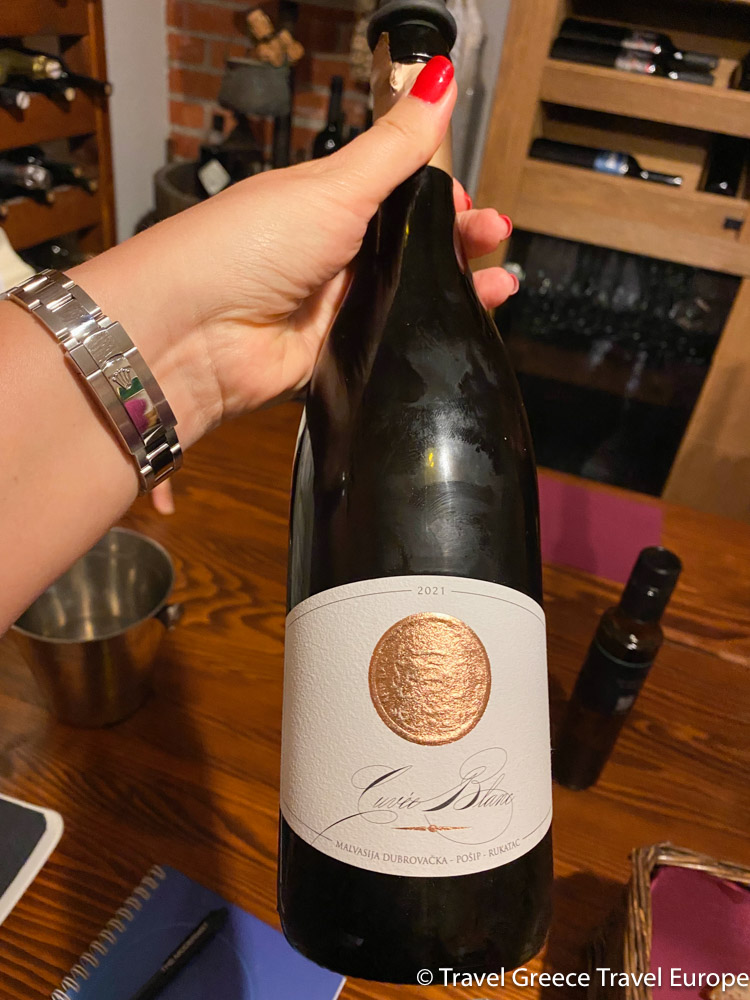
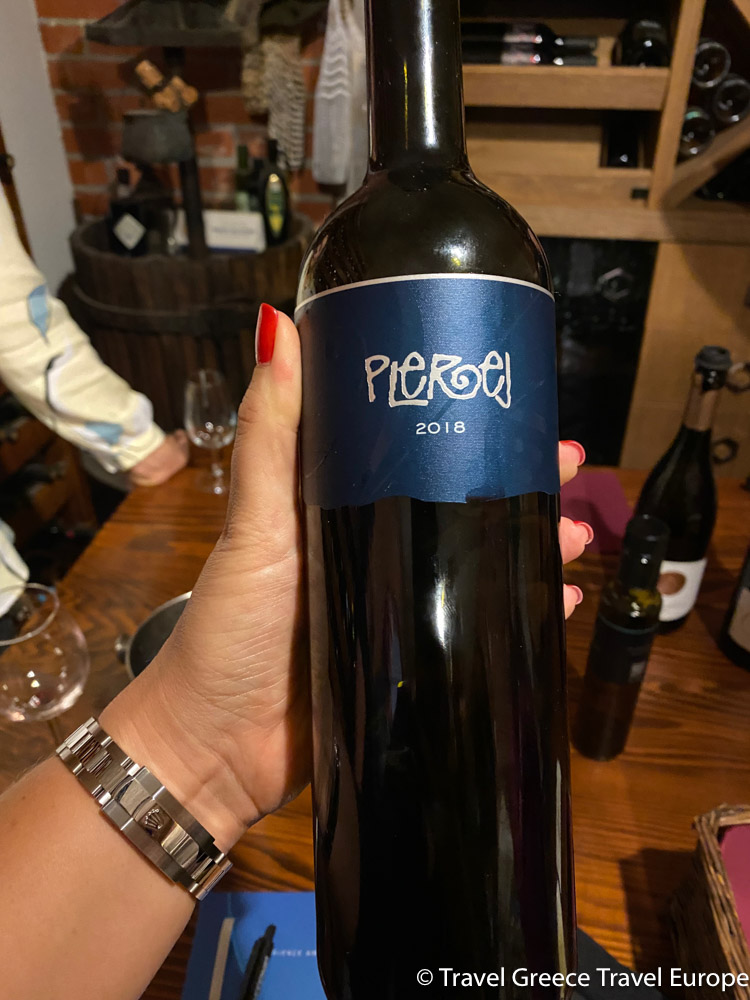
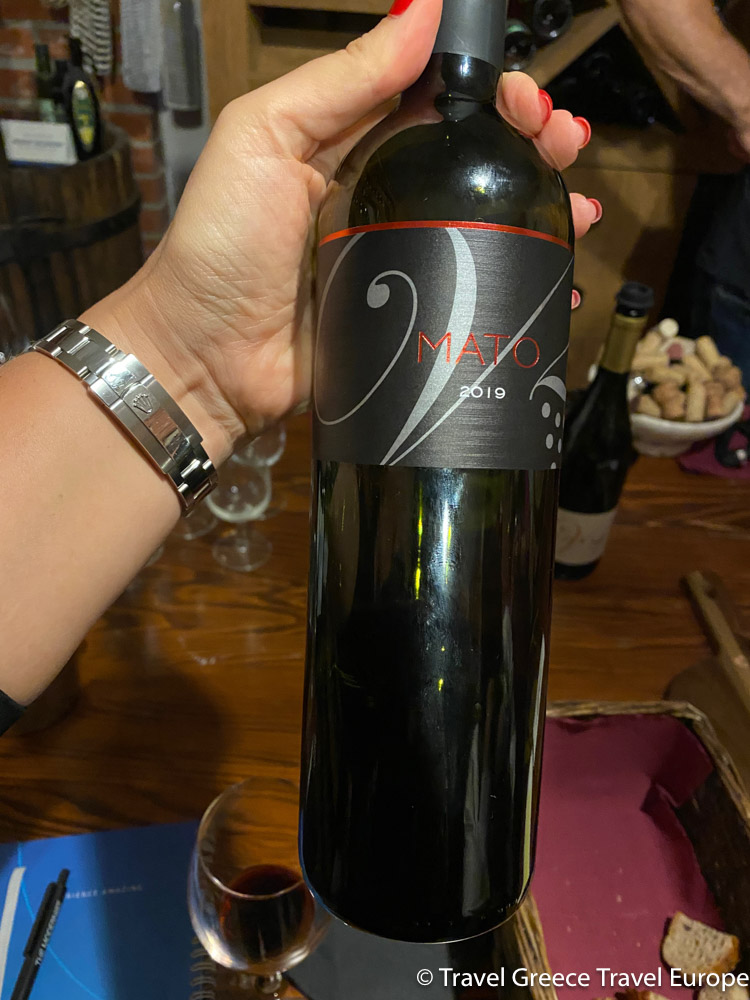
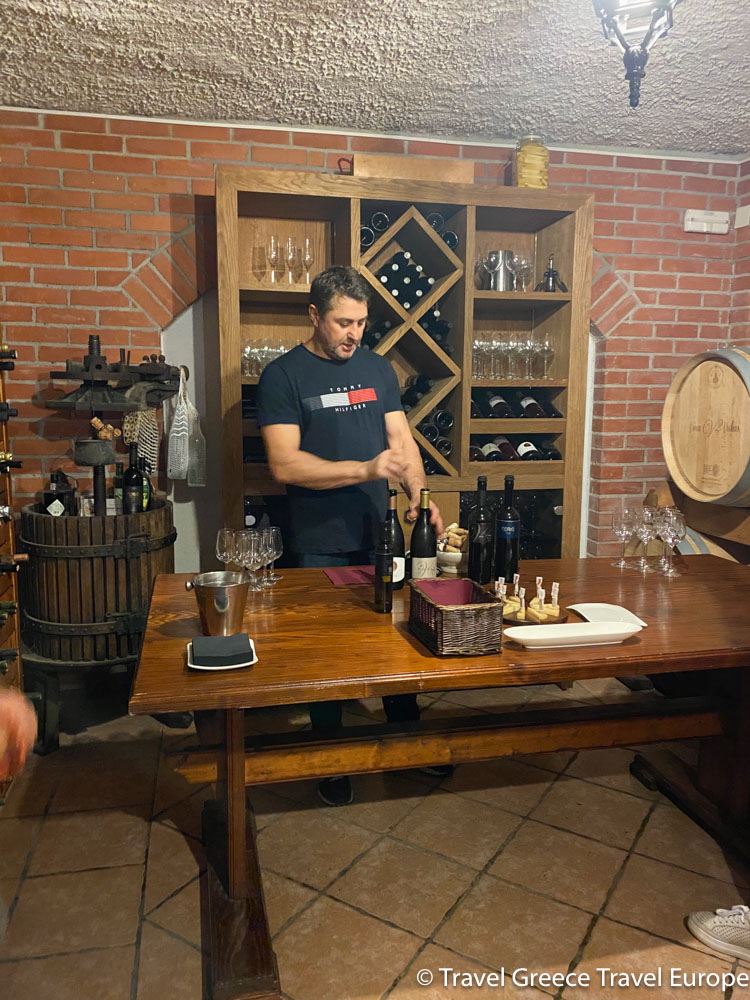
The Highlights of Ston
We ended our visit with some time to explore Ston, a small but historically significant town located on the Pelješac Peninsula in Croatia, a hidden gem that offers a unique blend of natural beauty, architectural wonders, and gastronomic delights. Here are a few aspects that make Ston particularly special:
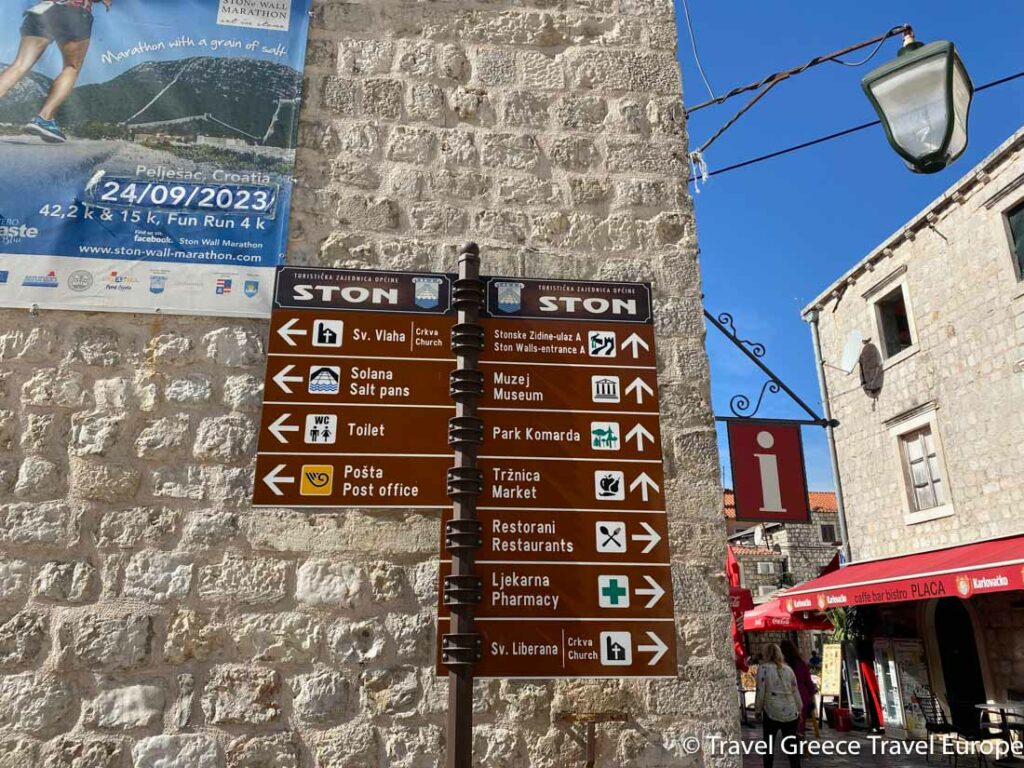
The Walls of Ston
Often referred to as the “European Wall of China,” the Walls of Ston are among the longest preserved fortification systems in the world. Originally constructed in the 14th century to protect the valuable salt pans, these impressive walls stretch approximately 5.5 kilometers from Ston to its smaller counterpart, Mali Ston. The walls are a remarkable feat of medieval engineering and offer stunning views of the surrounding area for those who walk along them.
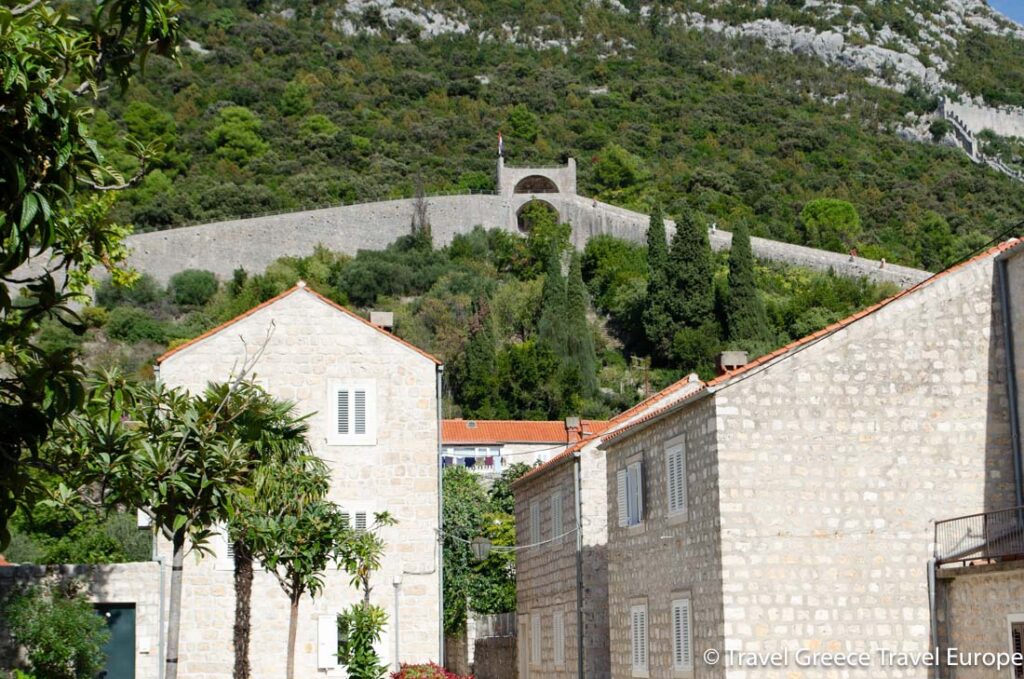
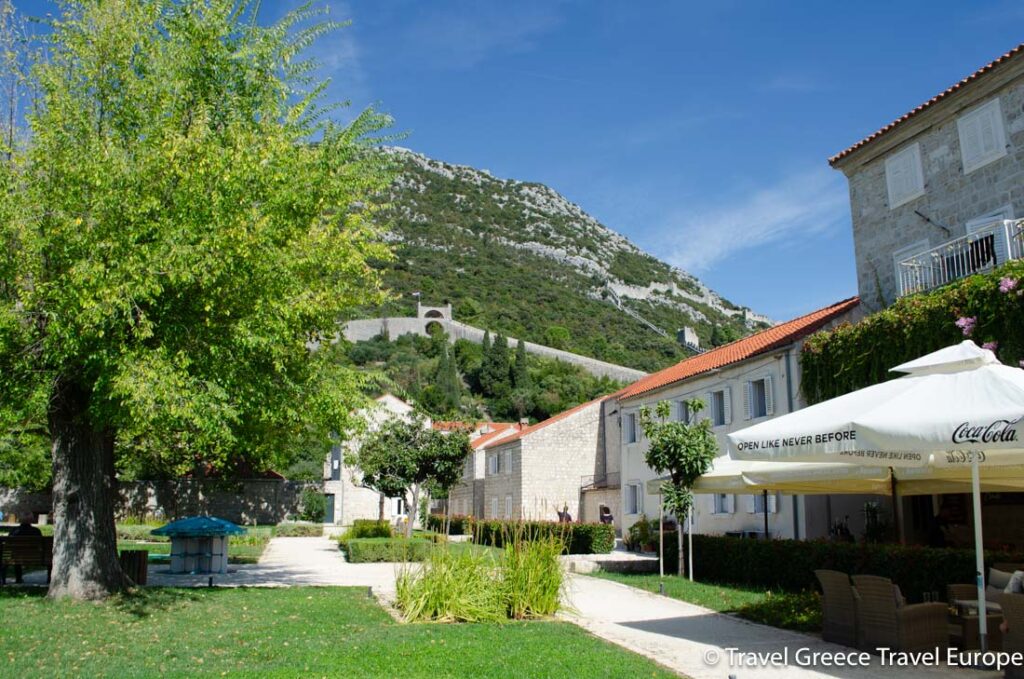
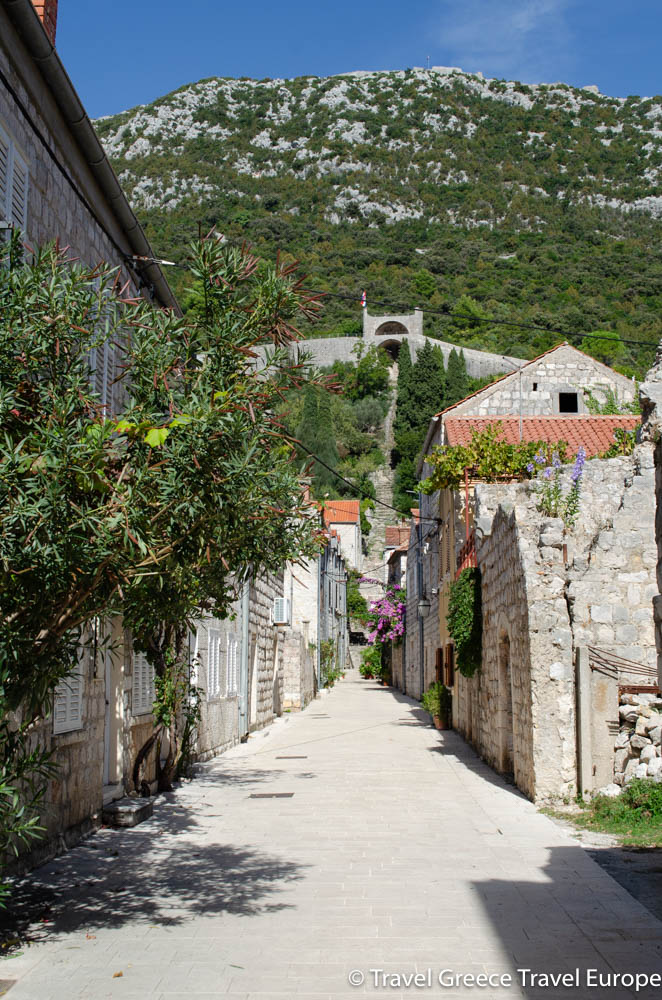
Mali Ston Bay
Mali Ston Bay, situated between Ston and its smaller sibling Mali Ston, is renowned for its oyster and mussel farming. The clean, nutrient-rich waters of the bay create an ideal environment for shellfish cultivation, making the area famous for its delicious oysters and mussels. These shellfish are considered some of the best in the world and are a must-try for any visitor, often enjoyed fresh with a squeeze of lemon and a glass of local wine.
Gastronomy
The region’s culinary offerings are a highlight, with seafood taking center stage. Restaurants in Ston and Mali Ston serve dishes that showcase the freshness and quality of the local catch, paired with the region’s excellent wines, particularly those made from the Plavac Mali grape. The town is a gastronomic paradise for those looking to savor the flavors of the Dalmatian coast. If you like pie, head over to Liberty 93 bakery right in the heart of the town and try their meat pie, it was delicious.
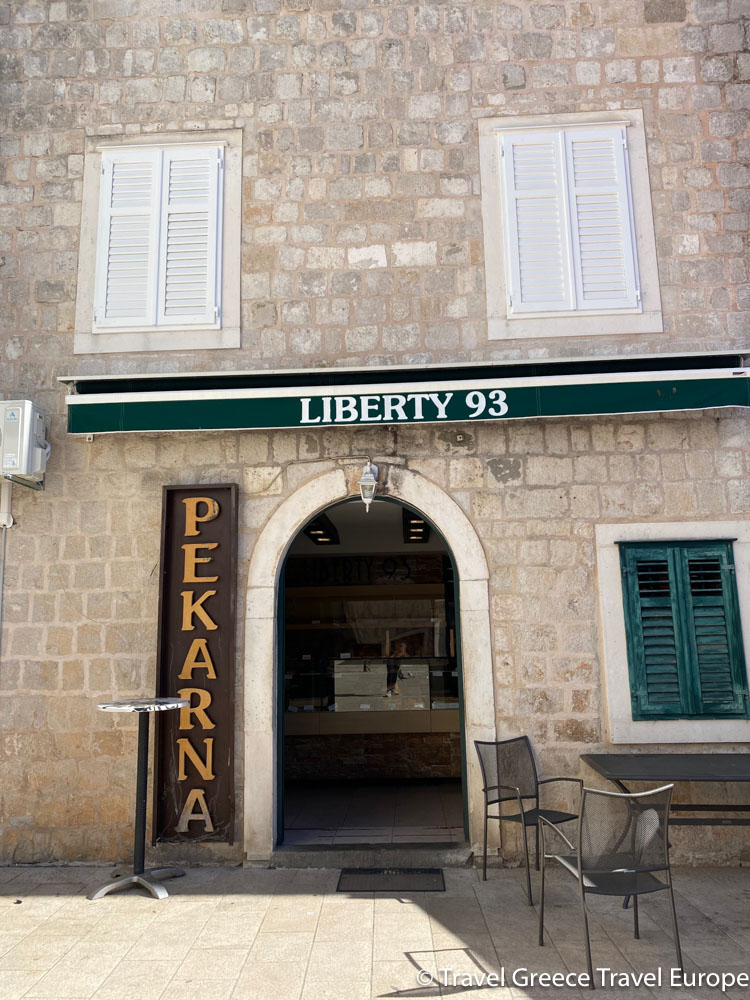
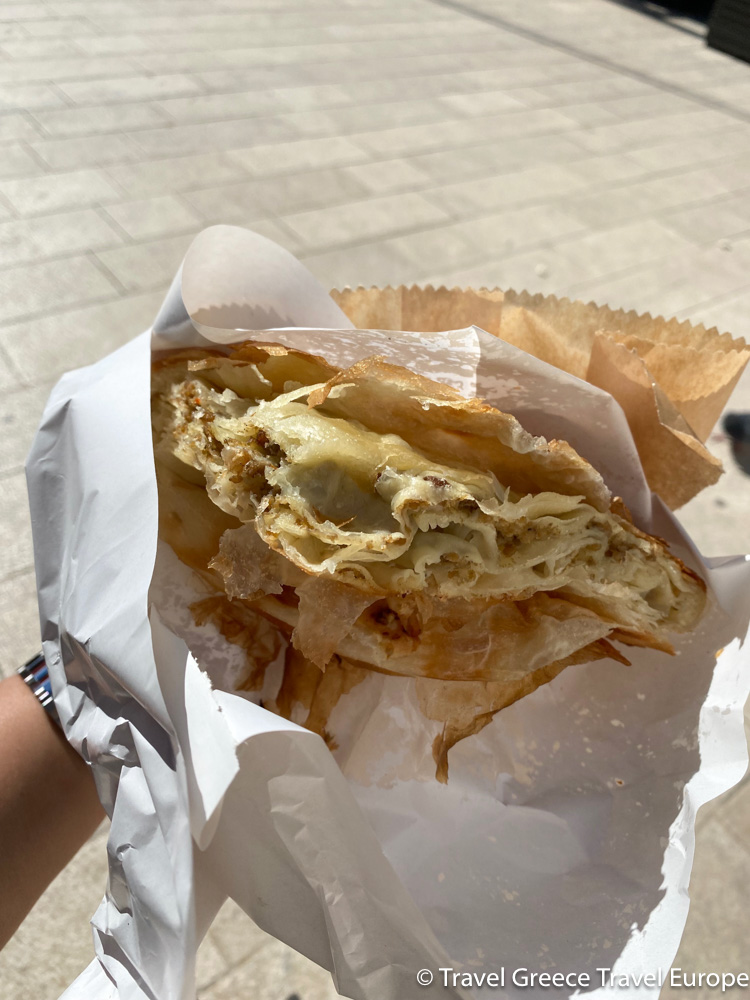
Historical Significance
Beyond its walls and salt pans, Ston has a rich history that is reflected in its architecture, including medieval churches, monasteries, and the remnants of its once-thriving salt industry. The town’s layout, with its narrow streets and stone houses, offers a glimpse into the past and invites exploration.
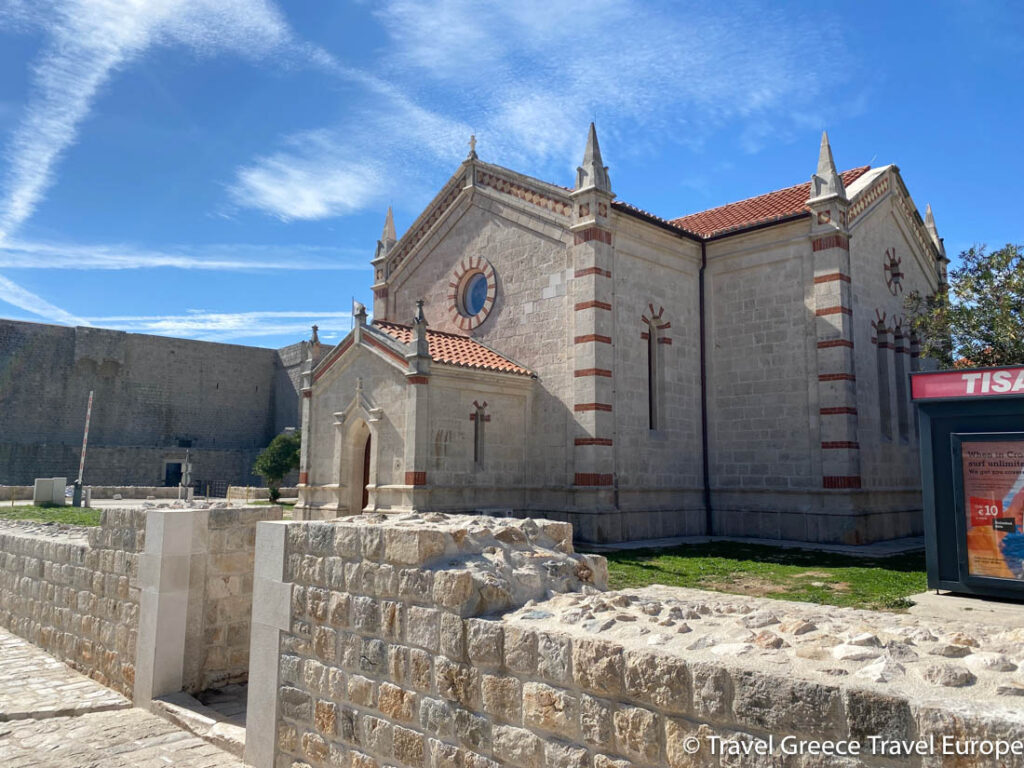
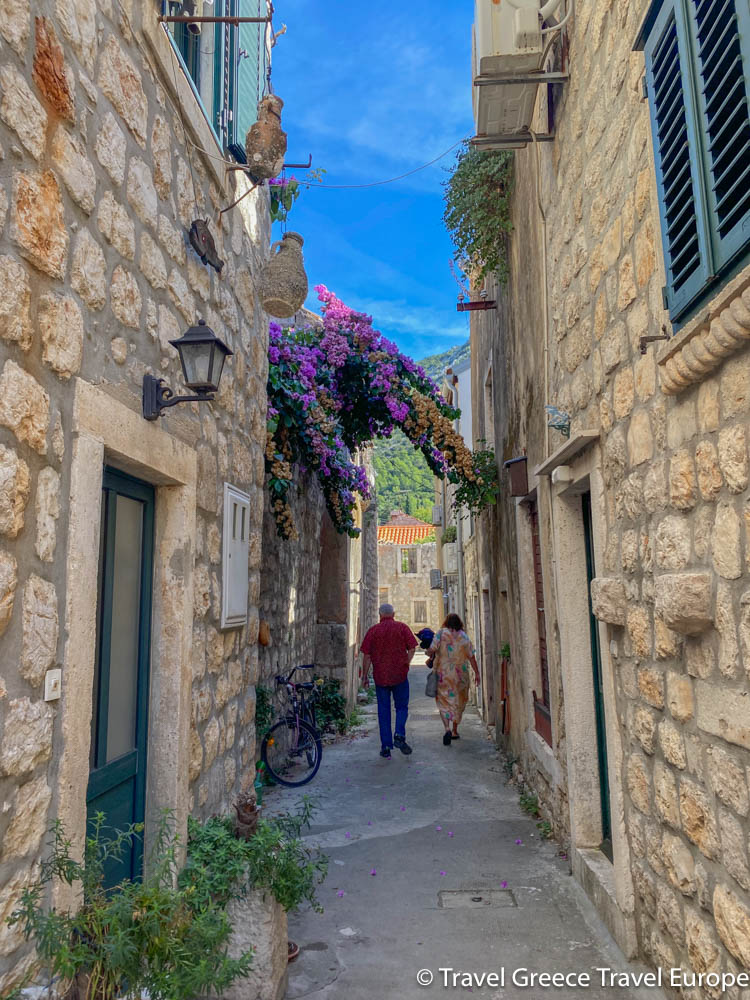
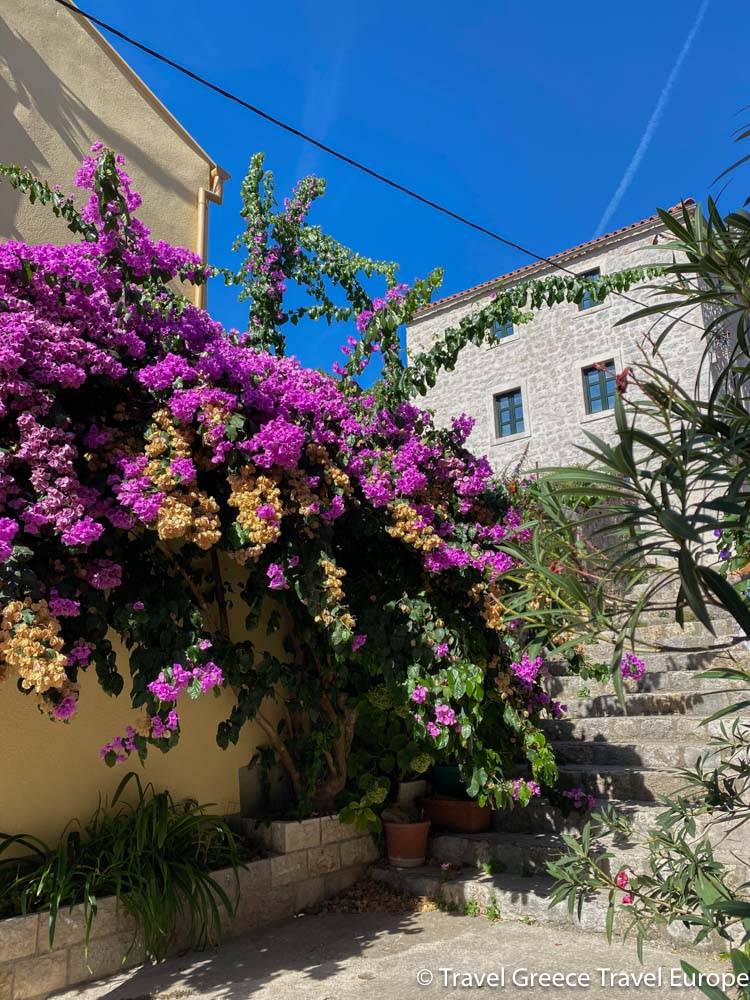
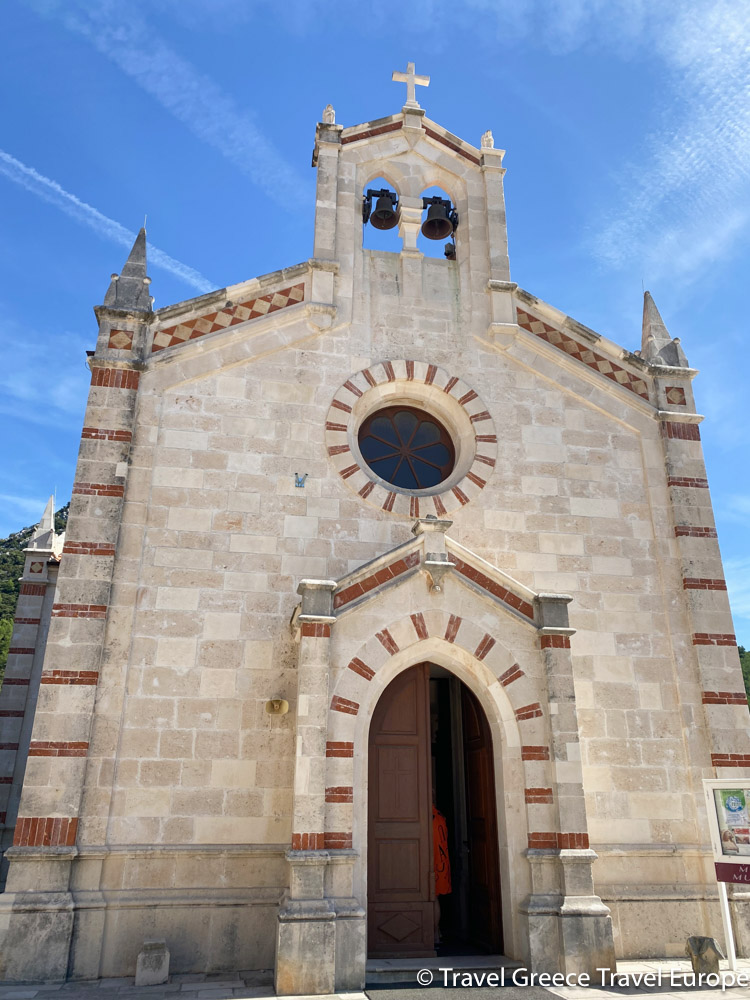
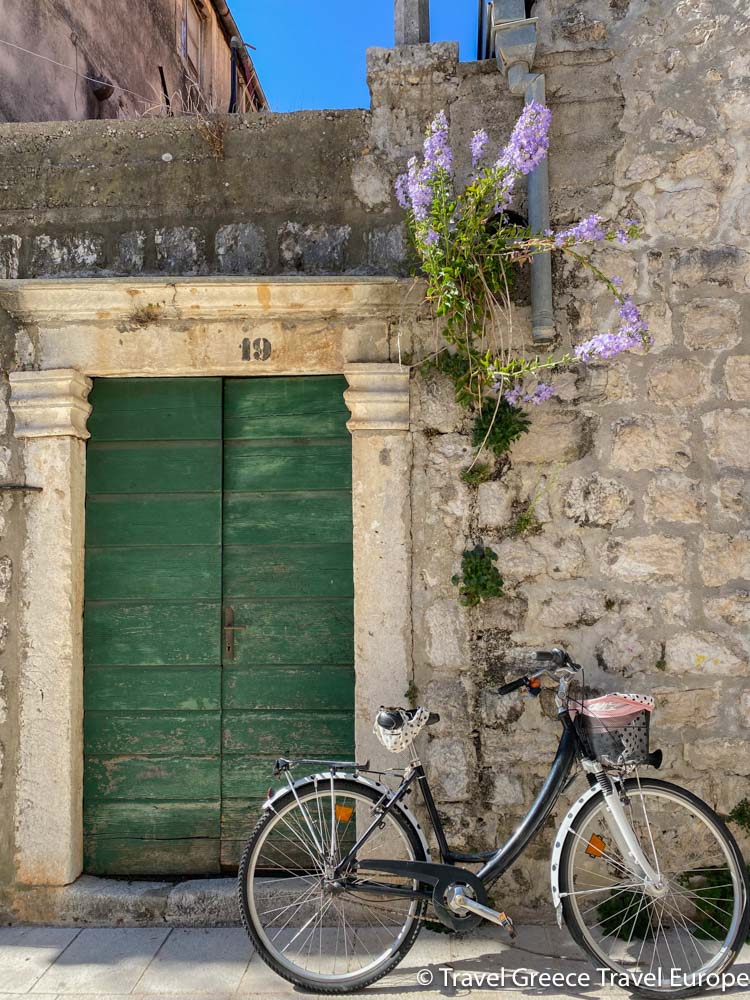
End the Evening with a walking food tour
Embarking on the 3-hour tour with Dom, a guide whose expertise extends far beyond the ordinary, was an exceptional journey through the heart of Dubrovnik. With a Master’s degree in viticulture and enology, and currently furthering his education as a PhD student conducting experiments with local wine varieties, Dom brings a depth of knowledge to the tour that is both rare and fascinating.
His passion for Dubrovnik’s rich history, especially its vibrant food and wine culture, is palpable and infectious. As a licensed olive oil sommelier, Dom’s insights into the local olive oil production add another layer of intrigue to the experience.
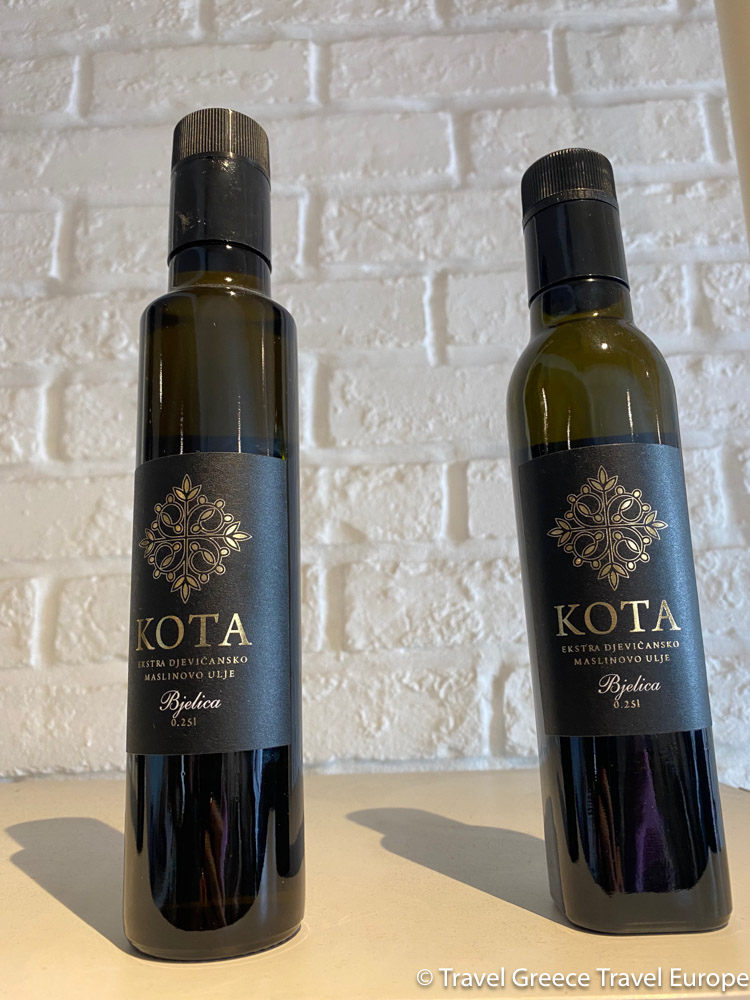
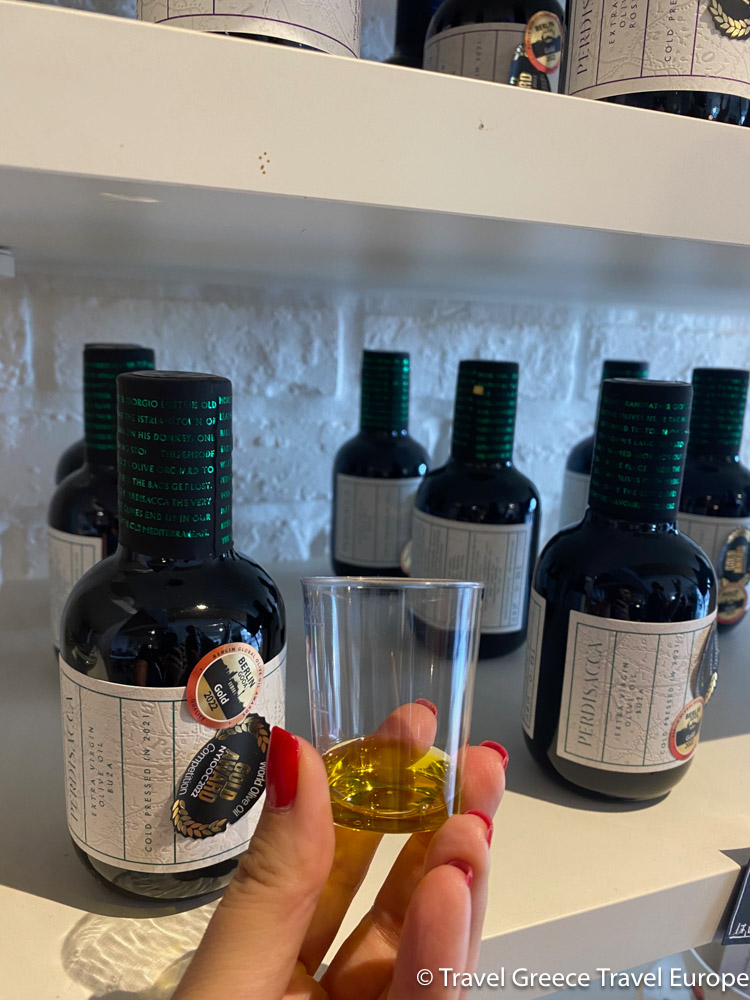
The tour itself is thoughtfully curated, featuring a selection of delectable local cuisine paired with exquisite wines that truly enhance the tasting experience. Dom’s unique educational background allows him to offer an interesting presentation of his hometown, touching on the areas he has been studying. Be prepared to indulge in a generous array of foods, carefully selected for their quality and significance, alongside fantastic wine pairings that showcase the best of the region.
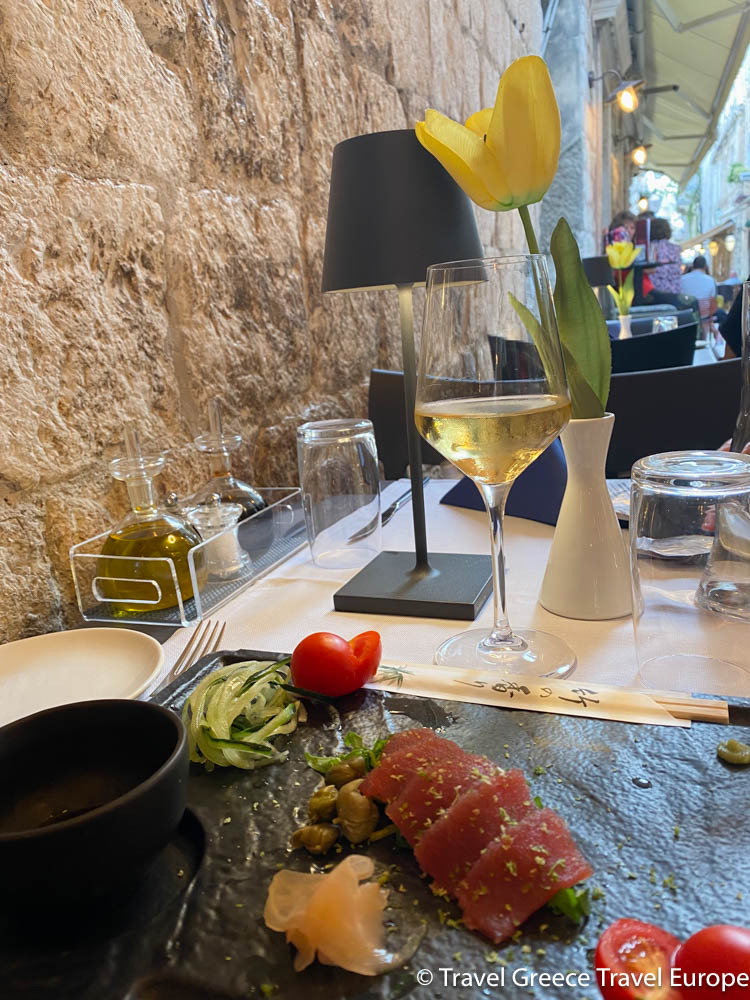
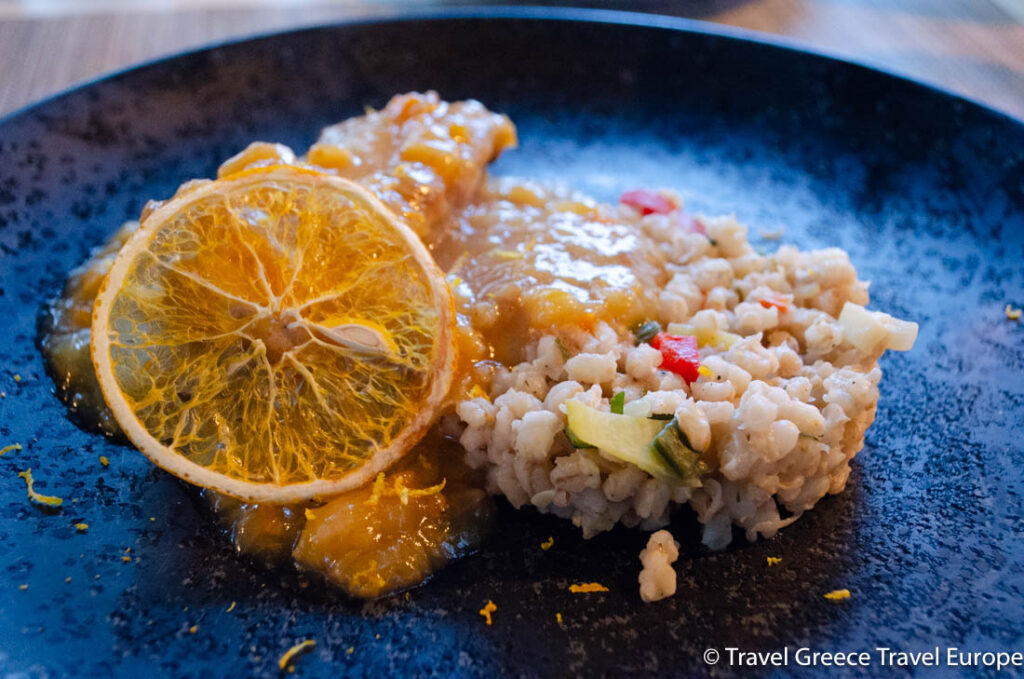

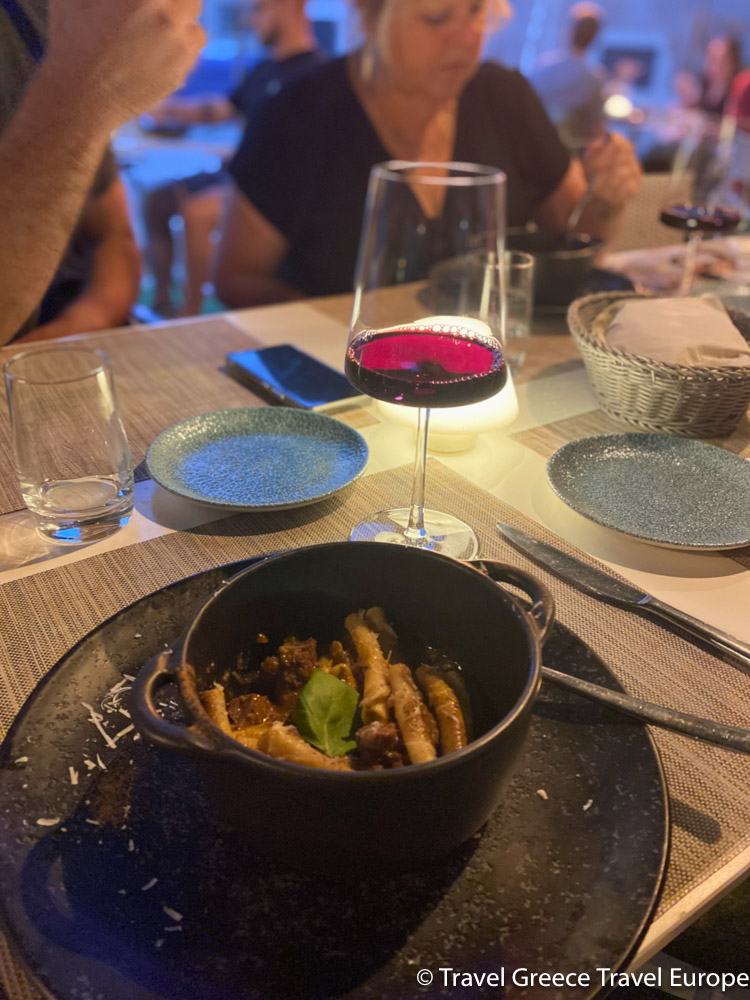
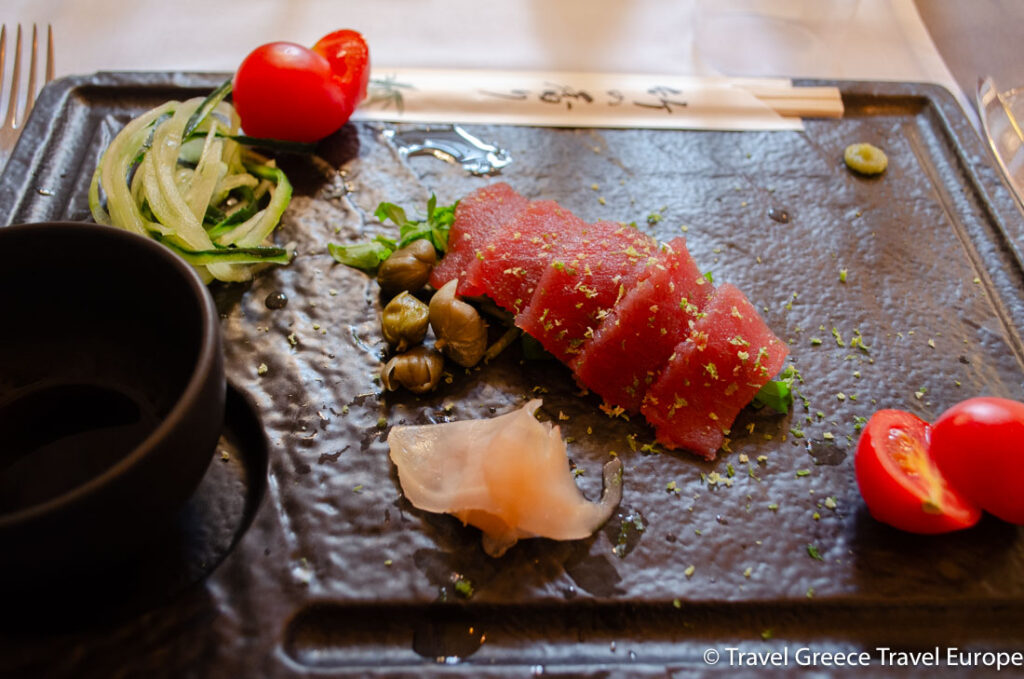
I highly recommend this experience for anyone looking to immerse themselves in the local culture. You will leave with a full stomach, a deeper appreciation for Dubrovnik’s culinary heritage, and enriched knowledge of its viticulture and olive oil production, guaranteed. Book this tour Wine, food and olive oil by PhD student with Dom on Viator or through Airbnb experiences here.
things to Know before visiting Dubrovnik
When is the best time to visit Dubrovnik?
The optimal time to visit Dubrovnik, balancing pleasant weather, manageable tourist crowds, and the availability of direct flights, is during the shoulder seasons of late spring (May to early June) and early autumn (September to October). During these months, the city enjoys mild Mediterranean weather, perfect for exploring its historic streets and beautiful beaches, with fewer tourists compared to the peak summer period. Direct flights to Dubrovnik are more frequent in these seasons, offering easier access for international travelers.
While summer (June to August) promises vibrant city life and the warmest temperatures, it also brings larger crowds and higher prices, despite the abundance of direct flight options. Conversely, winter sees a significant reduction in direct flights, making travel more challenging, though it offers a unique opportunity to experience the city’s charm without the crowds.
Ultimately, planning a visit in the shoulder seasons ensures a delightful balance of enjoyable weather, easier travel, and the chance to immerse in Dubrovnik’s rich cultural tapestry with relative tranquility.
Best hotels in Dubrovnik
- Hotel Dubrovnik Palace (⭐9.0)
- Heritage Villa Nobile (⭐9.7)
- Hilton Imperial Dubrovnik (⭐9.1)
- Ragusina luxury apartments (⭐9.5)
Getting Around Dubrovnik
Getting around Dubrovnik is relatively straightforward, thanks to the city’s compact size and efficient public transportation system. The Old Town, a UNESCO World Heritage site, is pedestrian-only, making walking the best way to explore its historic streets and landmarks. For longer distances, Dubrovnik’s public bus system is reliable and covers most areas of interest, including connections from the Old Town to beaches, hotels, and the main port.
Taxis and rideshare services like Uber are readily available for more direct routes or when traveling late at night. Additionally, for a unique perspective of the city or to visit nearby islands like Lokrum, consider taking one of the many boat services that operate from the Old Port. Remember, Dubrovnik can be quite hilly, so comfortable walking shoes are a must for navigating its charming but sometimes steep streets.
For a shared transfer from Dubrovnik Airport you can book this Dubrovnik: Shared Airport Transfer to/from City Center or alternatively this Dubrovnik Airport Private Transfer to Dubrovnik Hotels
Can you recommend any day trips from Dubrovnik?
Yes, consider visiting Montenegro , Bosnia and Herzegovina or Mostar & Kravica Waterfall for a day. Both offer unique cultural and natural landscapes within a short drive from Dubrovnik. Here are some tours you might enjoy:
From Dubrovnik: Montenegro Day Trip
From Dubrovnik: Montenegro Boat Tour from Perast to Kotor
Mostar & Kravica Waterfall: Small Group Tour from Dubrovnik
Dubrovnik Speed Boat Private Tour – (EXPLORE SECRETS OF ELAFITI ISLANDS)
Full-Day Dubrovnik Elaphite Islands Cruise with Lunch
Montenegro & Bosnia in 1day: 2 Countries Day Tour from Dubrovnik
Conclusion:
As your unforgettable journey through Dubrovnik comes to an end, take a moment to reflect on the experiences shared, the sights seen, and the memories created. Whether you’re a history buff, a nature enthusiast, or a foodie at heart, this 4 days in Dubrovnik itinerary offers something for everyone. So pack your bags, lace up your walking shoes, and prepare to be enchanted by the beauty and charm of this Adriatic jewel. Until next time, happy travels!

